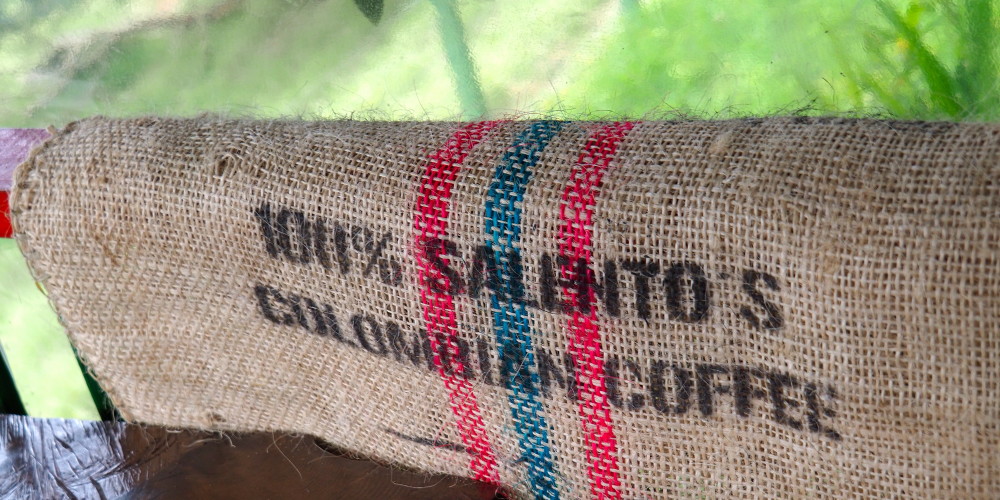We knew relatively little about Colombia’s coffee zone (or Zona Cafetera) when we booked our one way shuttle to a small village called Salento, but the three nights we had in this gem of a town were enough to teach us that this was a place we could definitely come back to.
Leaving Medellin was bittersweet – we had had such a blast there but we were also excited to explore (and taste the fruits of!) Colombia’s rolling green valleys that make up coffee country.
We would be travelling on a newly created direct transfer with a company called Flota Occidental from Medellin to Salento. In the past, travellers had to go to either Pereira or Armenia (the two larger towns in the Zona Cafetera), then make their own way to Salento. Doing it in one hit sounded much more convenient. Our shuttle tickets cost approximately US$15 (approx. AU$20) per person for the one way trip.

We arrived at the bus station in time for our 9am shuttle that we had booked the day before, and waited in line to get our tickets before going through to the waiting room.

We were pleasantly surprised to learn the shuttle would not be a full one (any extra space is always welcome!), plus the added bonus that we would have WIFI during the six hour journey. This was great news as it is definitely not the norm for shuttles to have wifi.
When we got on the shuttle, there was Dave and I, another two backpacker couples, and two or three Colombians, as well as our driver (who spoke no English). Our driver seemed nice enough to start with, and helpfully gave out the wifi log-in details and off we headed – here we come Salento!
Within about half a minute of leaving Medellin’s busy city roads, we were zipping along narrow single lane highways at what felt like 120kmh as we wound up and down, and around, the Colombian valleys and mountains.
As seems to be the norm everywhere in Central or South America, drivers seem to crave the thrill of accelerating as fast as they can at all times, unless they are slamming their foot on the brake to avoid oncoming traffic as they manoeuvre back into their own lane after trying to overtake a huge truck on a blind corner.
My stomach felt like it was going to come flying out of my throat, and Dave and I could barely talk to each other for the first few hours of the trip as we concentrated on not throwing up. It did not help that we had to continuously ask the driver to turn on the air conditioning to try and lesson the stuffiness inside the shuttle that seemed to made the carsickness even worse.
After a quick stop for lunch at a desolate truck stop, I popped one of my anti-nausea tablets and hoped that would assist in keeping my food inside me until we reached our destination. I followed our route on google maps and as I could see our little blue dot inching closer and closer to Salento, I began to relax, thinking we might just survive this journey after all!
Honestly, the extreme windiness of the roads, combined with the wannabe-rally-driver attitude of our driver made this hands down the worst bus / shuttle ride of the trip.
Knowing we were almost at our destination gave the whole shuttle a feeling of relief, and as we pulled into Salento, we finally started chatting to the other two couples (the Colombians had gotten off earlier).
By a total fluke, all six of us planned to stay at La Serrana, an eco-lodge & hostel about a 15 minute walk (or five minute jeep ride) out of Salento, so Mel and Ian from Wales; Nat and Max from Tassie (fellow Aussies!); and Dave and I all shared one of the famous old Willy Jeeps to our accommodation.
La Serrana Eco-Hostel & Lodge
La Serrana is consistently rated as the best speciality accommodation in Salento, and as soon as we arrived up the long driveway and saw the sweeping views from the property over the rolling hills below, we understood why.
Comprised of two separate buildings (the main one, La Serrana; and another smaller property called Las Camelias about 400 metres down the driveway), with a mix of dorms and private rooms, not to mention ‘glamping’ tents, La Serrana did a pretty good job of catering to nearly every market that would be coming through Salento.
Checking in to La Serrana – grins all around!


Following the go-go-go mentality and pace we had been going at since leaving Nicaragua, we decided to splurge on our accommodation and booked a private room with ensuite at the stunning Las Camelias, with its own private kitchen, living room and fireplace.
The plan was to spend a day exploring the coffee plantations that the region is famous for, and then for the rest of the time, to drink red wine, read a book and chill in front of the fire as we watched the night sky through the beautiful floor to ceiling windows.
Our stunning views from Las Camelias
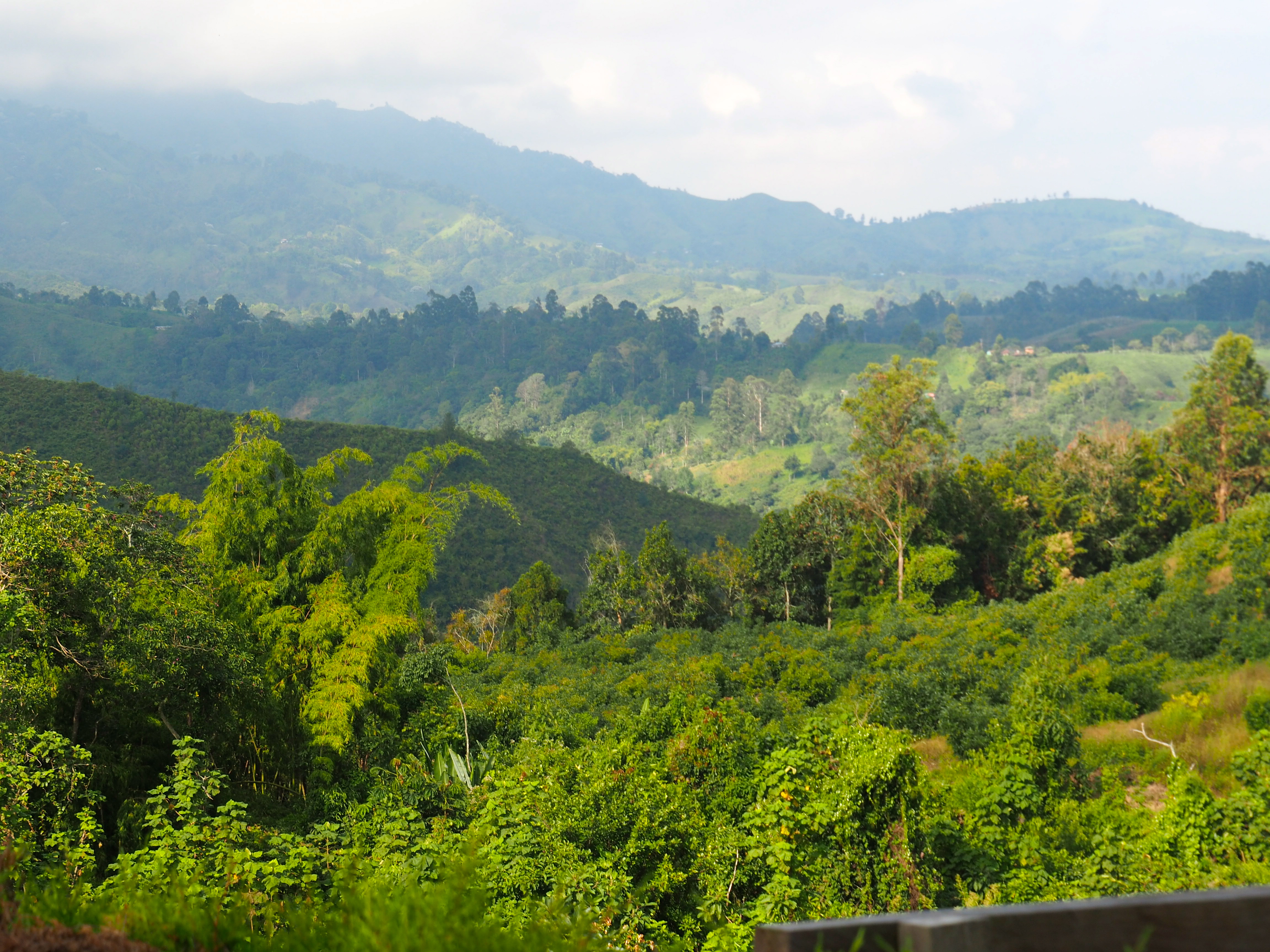
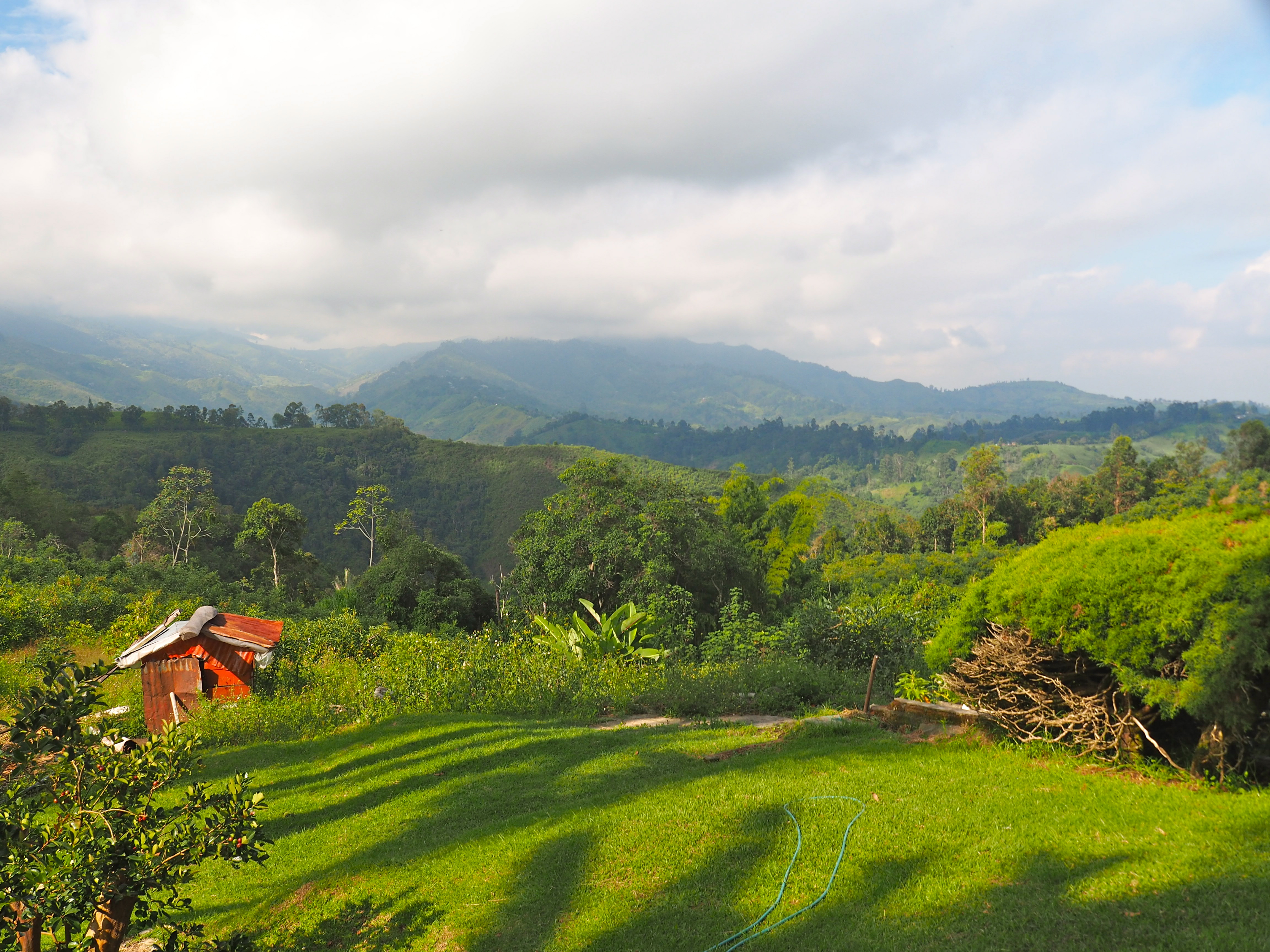
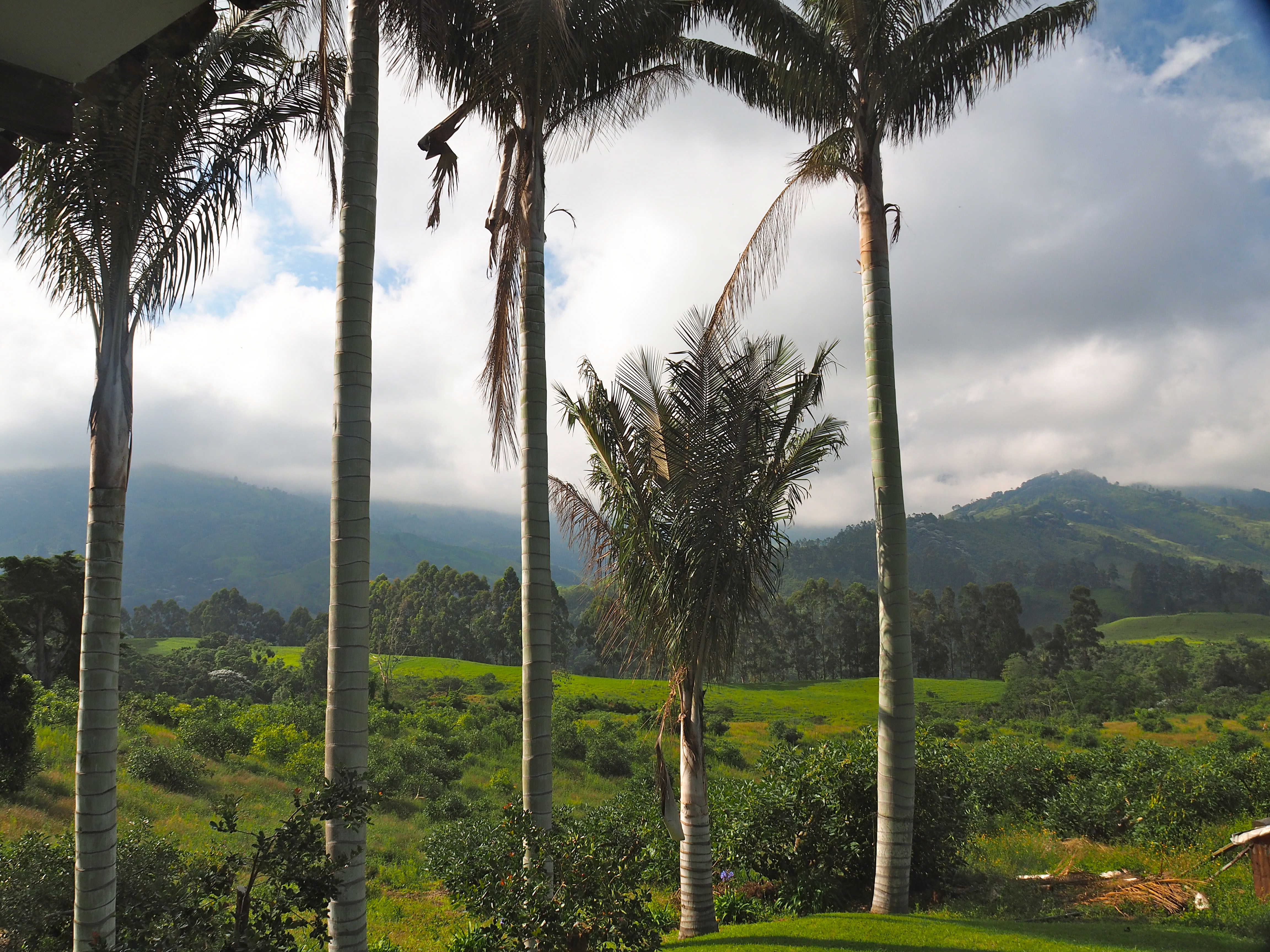

Our accommodation was simply divine, and after a steaming hot shower, we both felt as if we were in heaven – having the opportunity to relax seemed too good to be true, and we almost felt guilty for it!
Our accommodation at the lovely Las Camelias





And our own private suite (don’t mind Dave skulking about!)

After sufficient time chillaxing in our private lounge (we seemed to have the three bedroom property all to ourselves – BONUS!), and as night grew near, we made the short walk from Las Camelius to La Serrana for the ‘family dinner’, which we had pre-booked before our arrival.
Family style dinners are a pretty great thing – the hostel/hotel shares the set menu for that evening each morning, and if enough people sign up to make it worthwhile (usually minimum of 10), then everyone gets to enjoy a three course meal for a bargain price at communal tables in the fining rom, giving people a great chance to chat and get to know each other.
The night we arrived the dinner on option was a delish barbecue style dinner with chargrilled chicken and heaps of veggies / salad and potato. Perfecto! We were also able to purchase red wine by the bottle so jumped at the chance.
After dinner, a whole bunch of us took our wines outside to the bonfire and sat in the chilly night for a good few hours all rugged up, as we swapped travel stories and tips. Our one bottle of wine sooner turned into two bottles, and before we knew it, it was late and we had to make what seemed like a longer walk back to our suite.
Loving the bonfire and red wine

The next day we met our two new Welsh pals, Ian and Mel, at breakfast and decided to wander down the winding gravel road to Ocosu, one of the coffee plantations that gave a tour (and tastings!) of its speciality, Colombian Arabica Coffee!
Ocosu Coffee Plantation Tour
We set off down the road and were (once again!) blown away by the beauty of Colombia in general – form the seaside harbour of Cartagena, to the modern hustle and bustle of Medellin, to now being amongst the green and lush foliage of coffee country. This country just continues to surprise and impress me.
Views from our walk to Ocaso
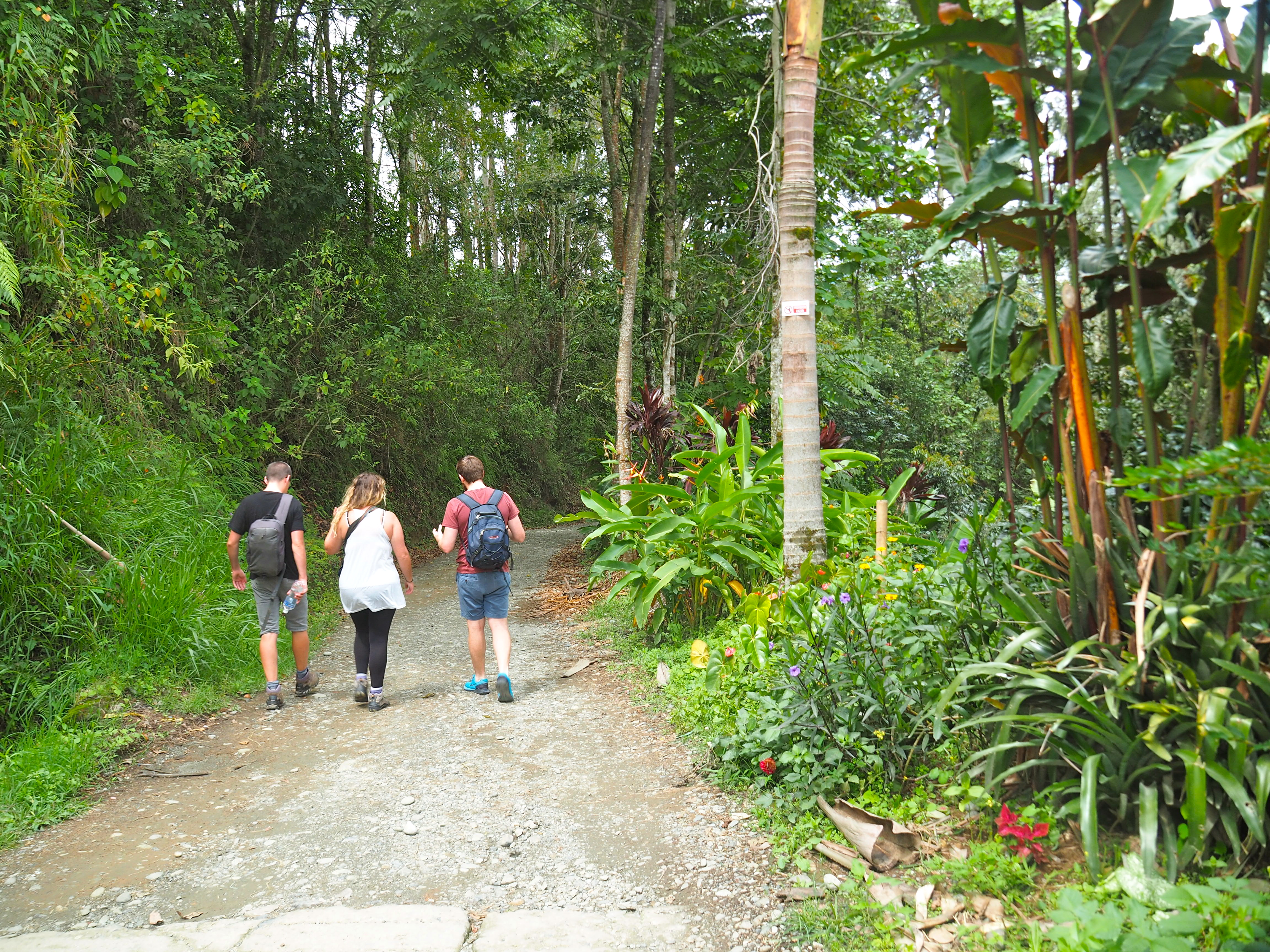
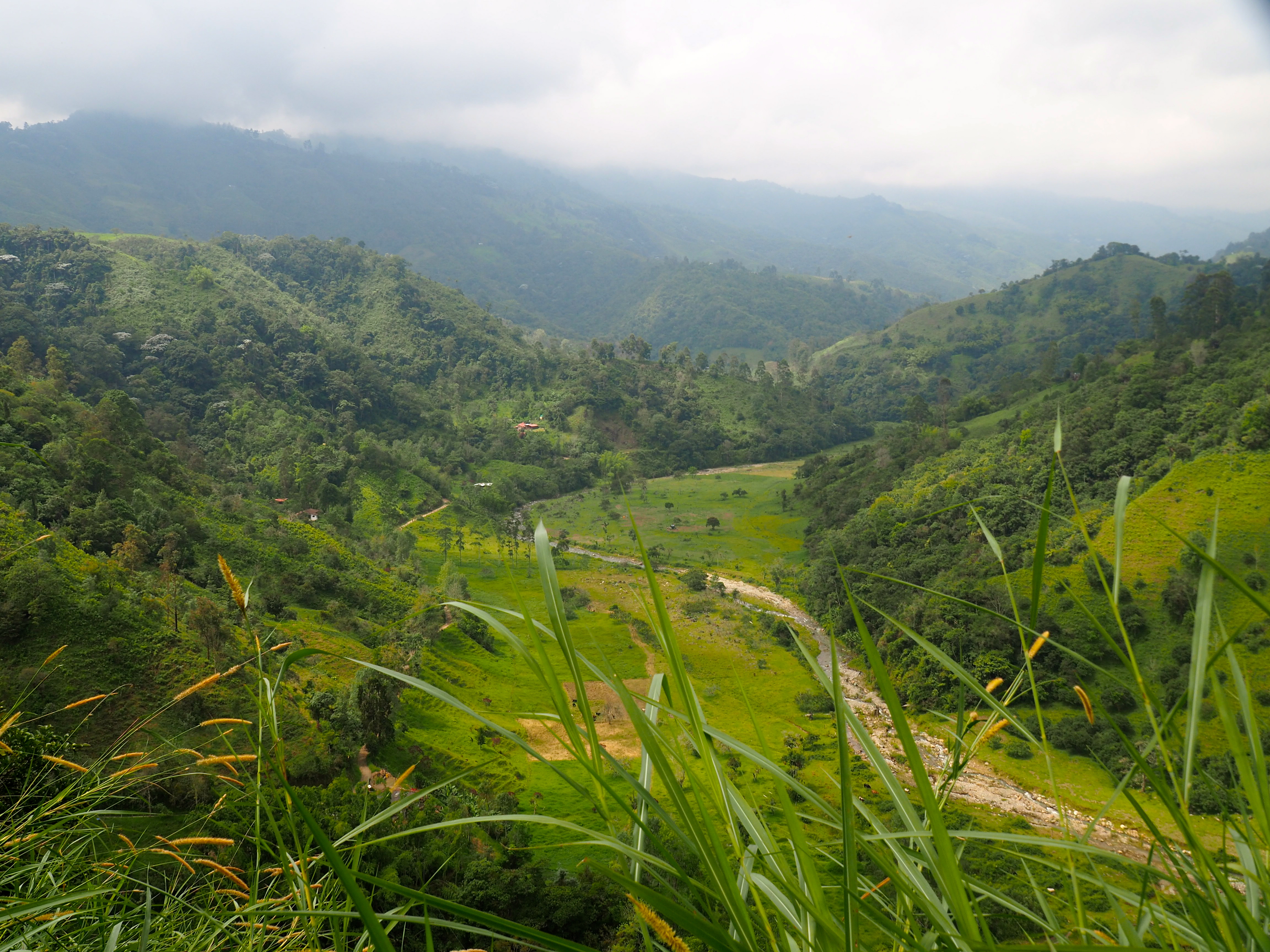
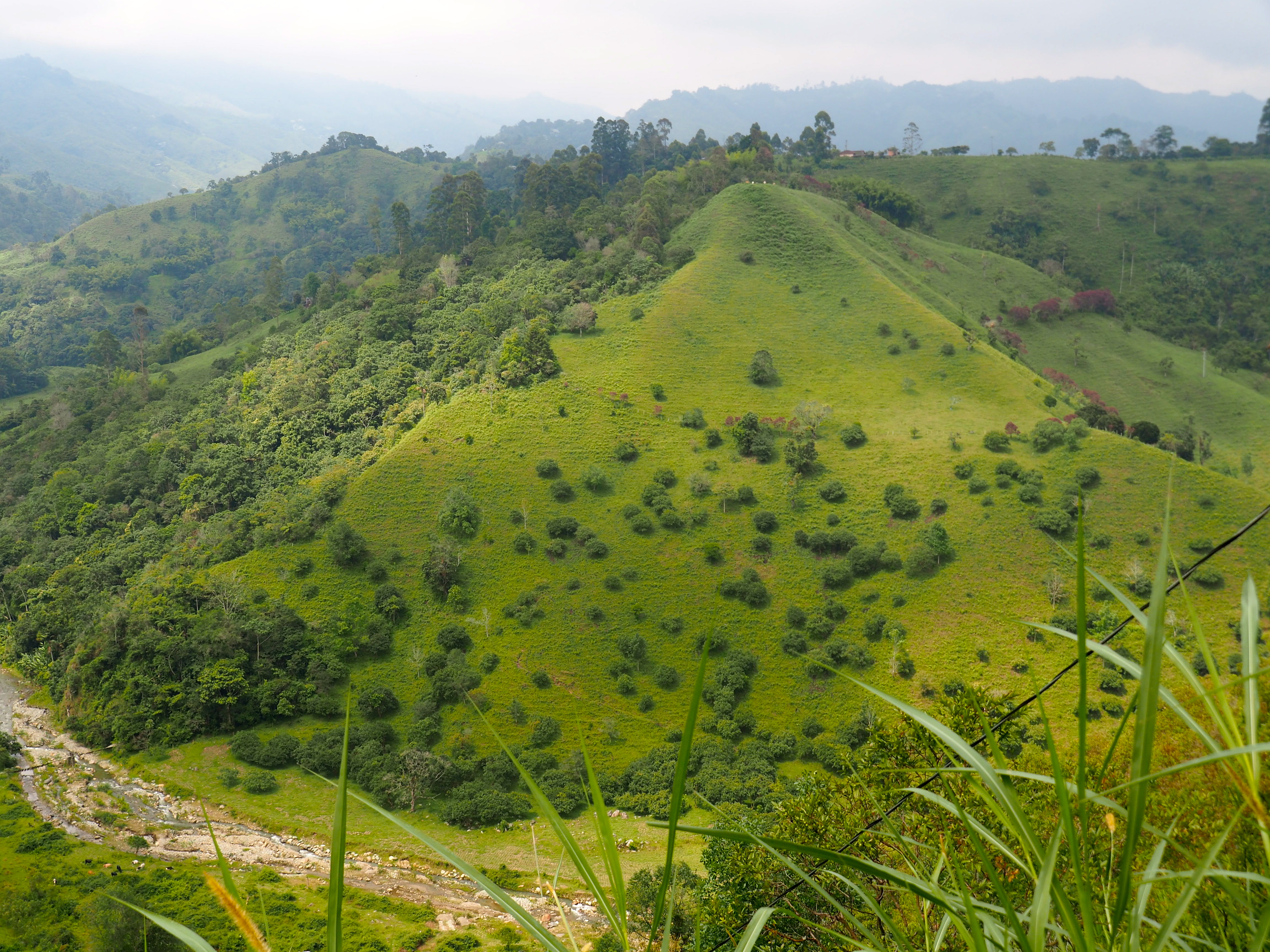
About half way though our almost fifty minute walk, I spotted a fairly big (about 5cm) black hairy spider on the ground, and we all stopped to have a quick look.
Within about two seconds of looking a bit closer, we realised we had actually walked right across a line of about fifty of these baby spiders (possibly tarantulas!) – and they were all around us! Needless to say, we looked carefully at our feet, making sure none were too close, then snapped a few more pics. We had only one question – if these are the babies, where is the mother?!
Baby Tarantula Conga-LIne
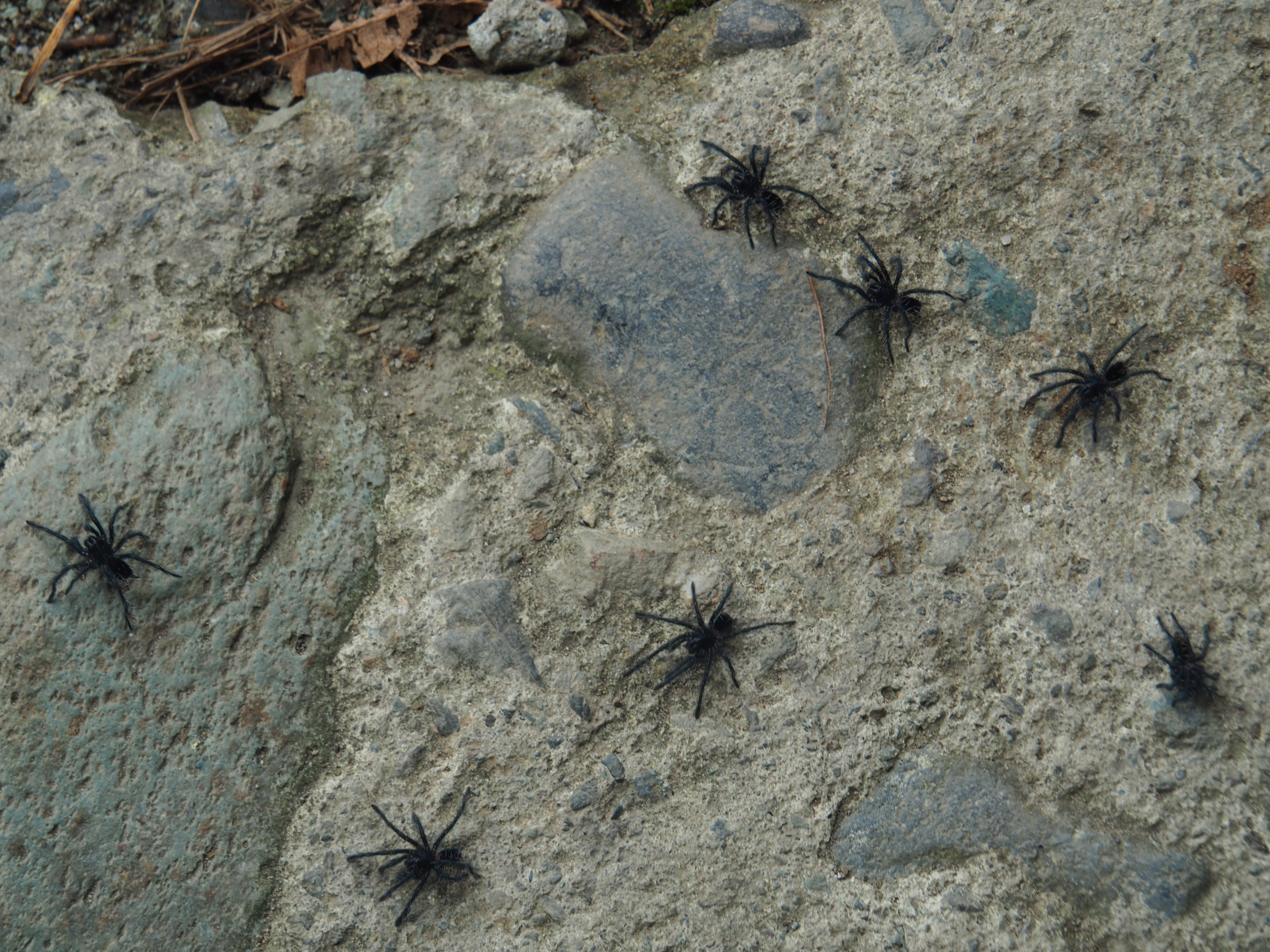
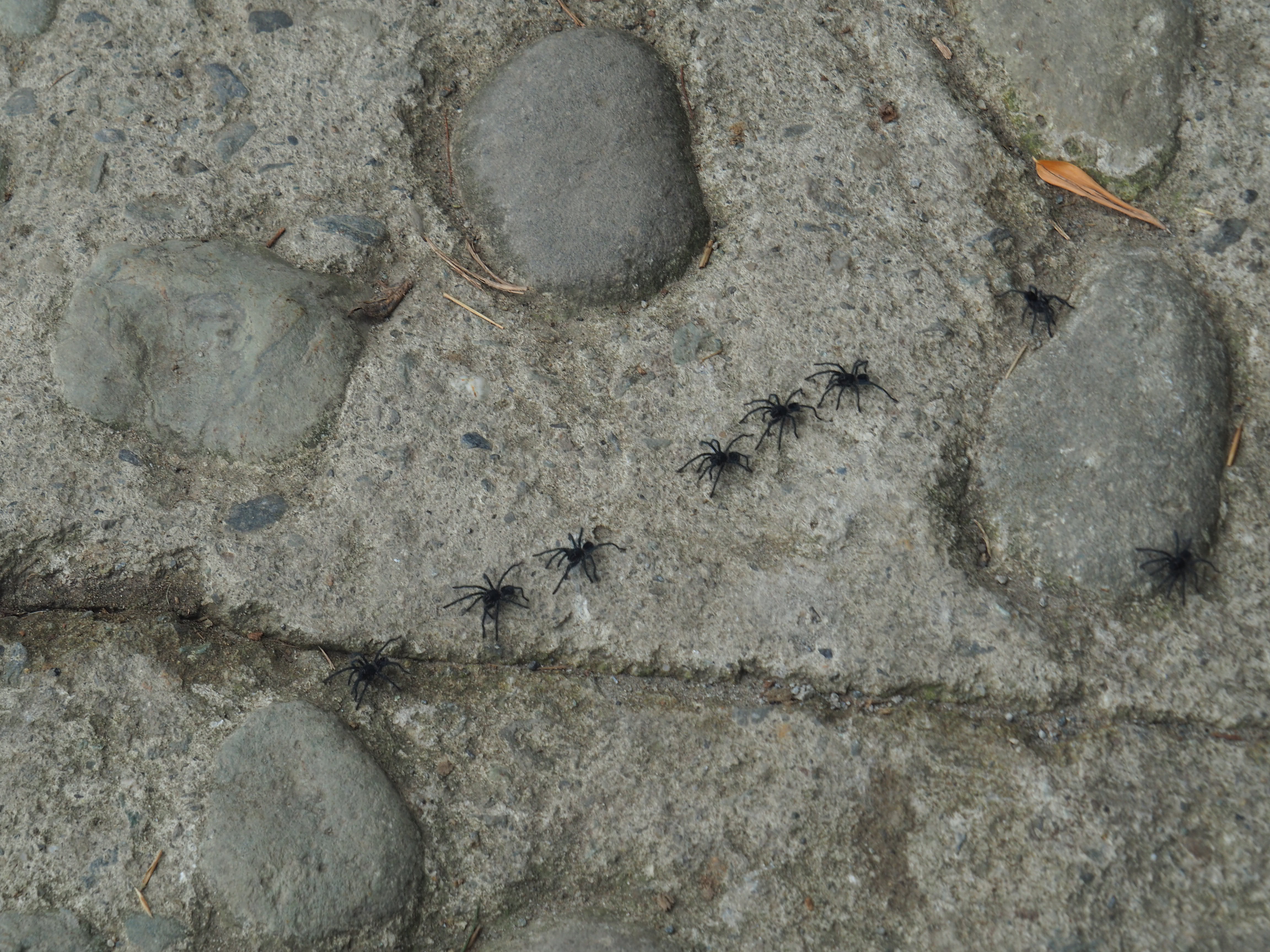
We soon found out – about ten metres down the track was this bush, completely covered in spiderwebs! Whilst we cannot be sure that it was the web of the mother spider, we were fairly certain we did not want to get too close to it… it is pretty well covered, right?
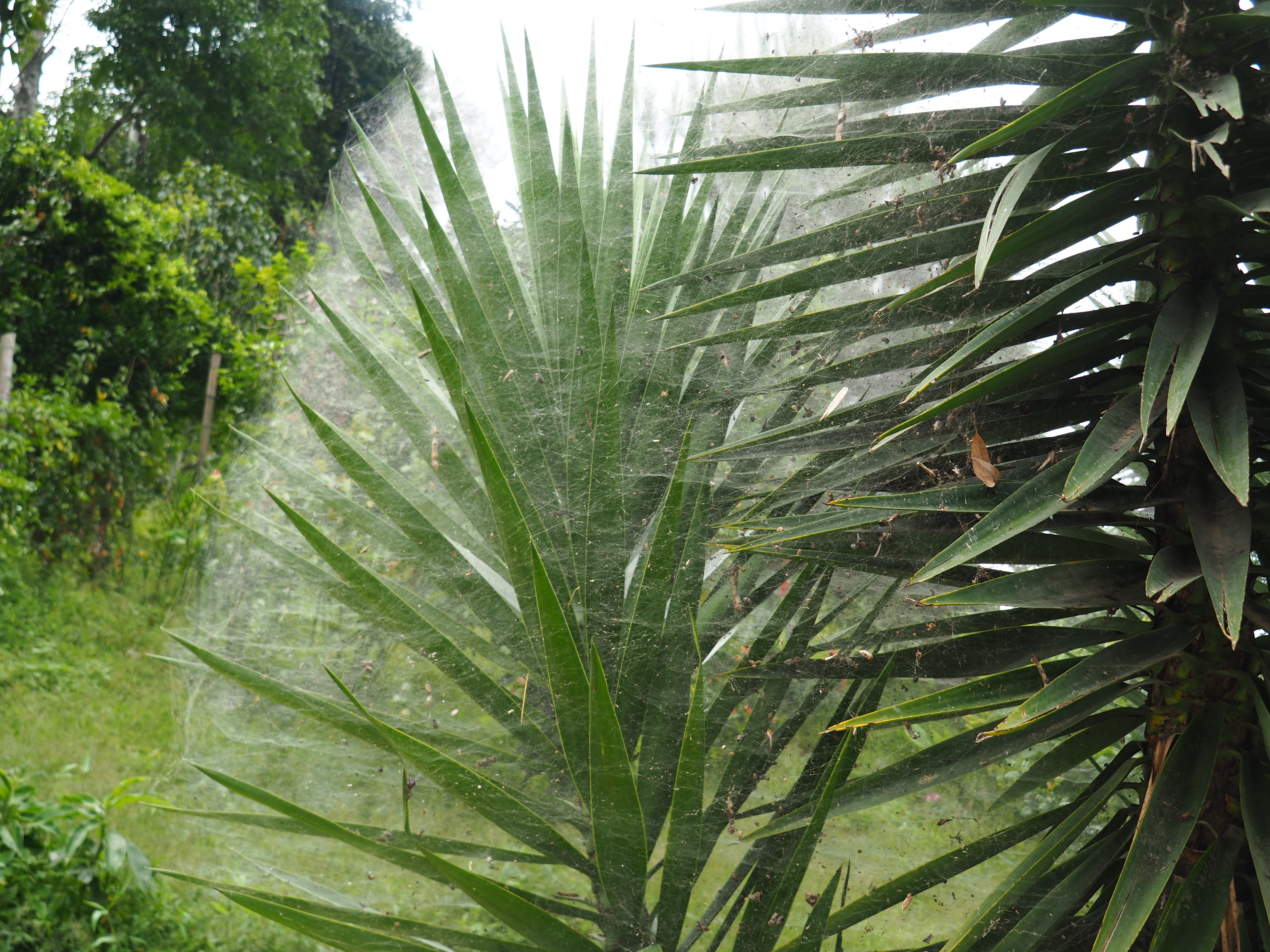
We soon came across a sign directing us up another driveway to the coffee plantation – Ocaso, here we come! As we made our way up (and then down!) the driveway, we started seeing more visible signs of being in coffee country – like these coffee plants full of coffee-berries!
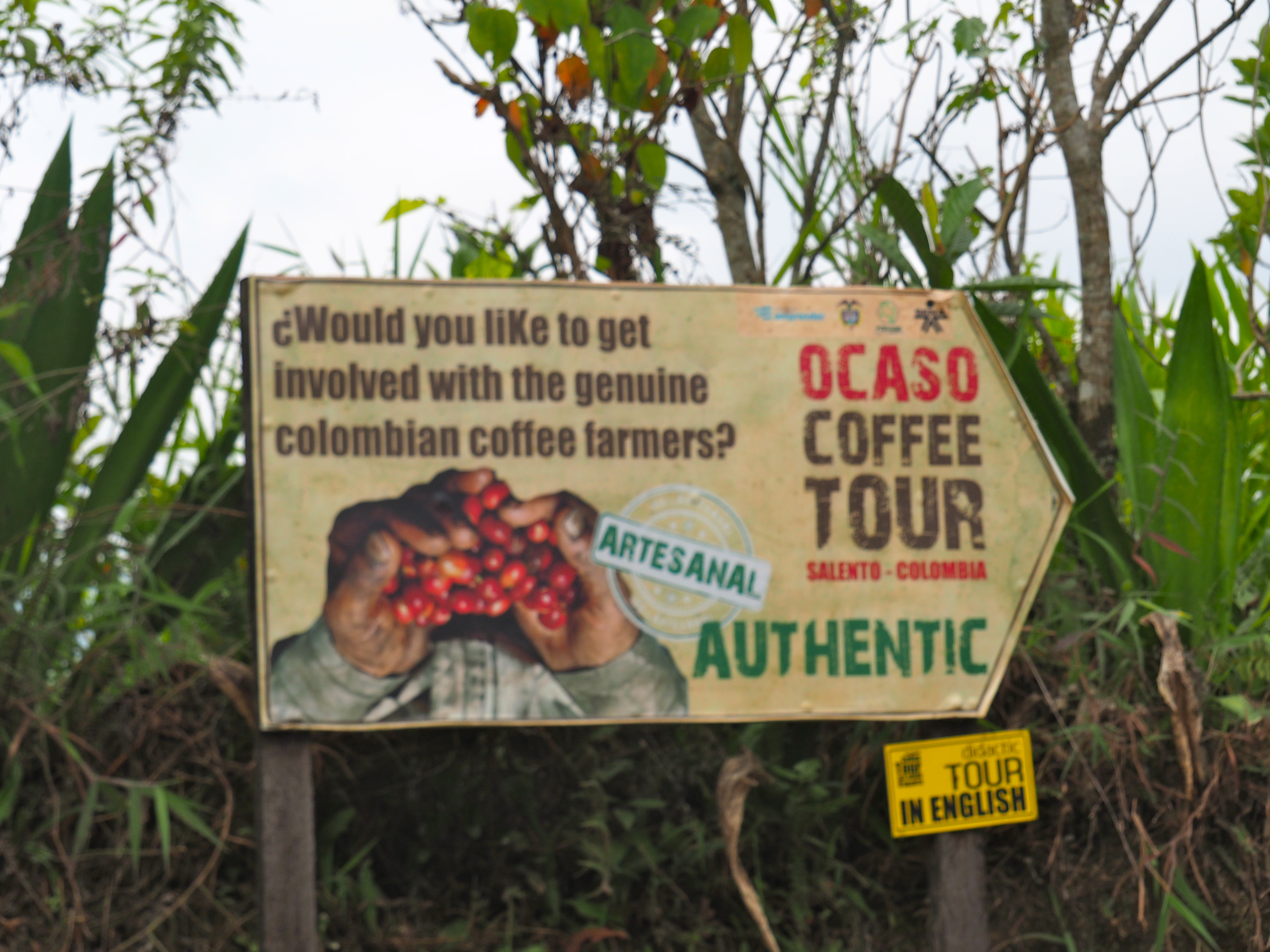
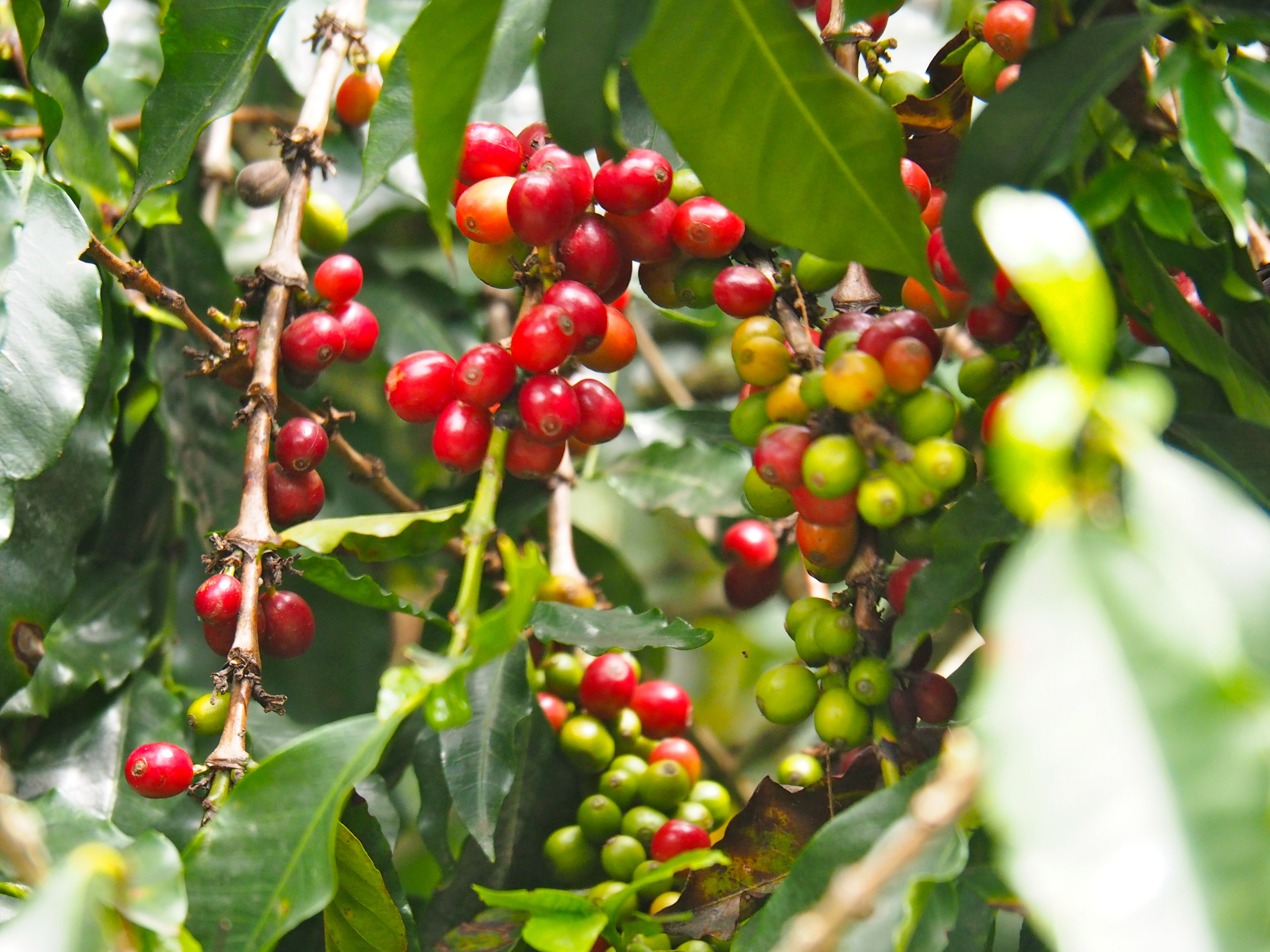
We also noticed a whole bunch of plantain / banana trees as well and noticed they were full to the brim with ripe fruit. Some of them had plastic bags over the fruit – this is to stop the birds from getting stuck in, they love the fruit as much as the Colombians!
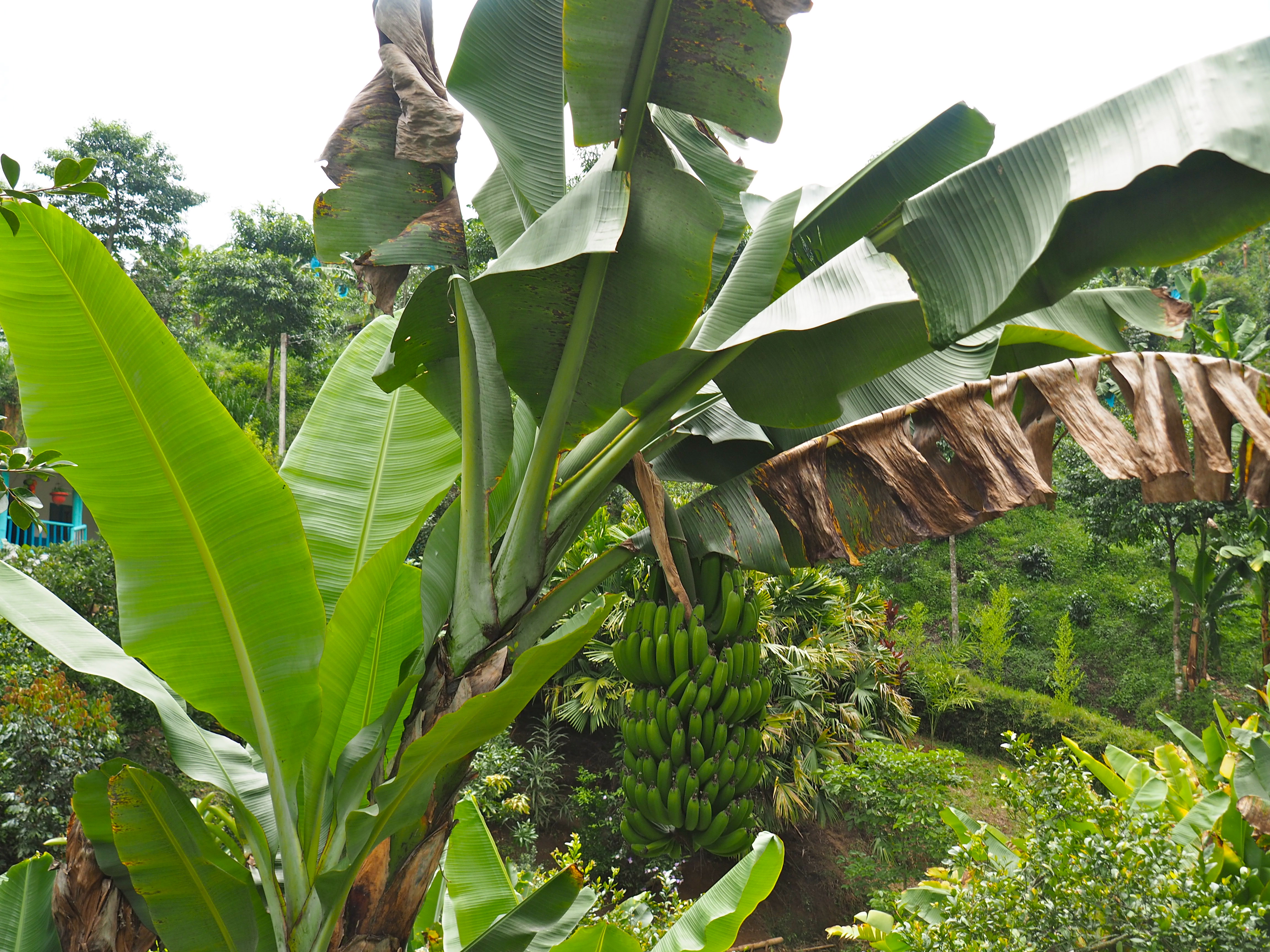
Before too long, we came across the beautiful, quaint estate with its white walls and red trim that is Ocasu. We were lucky as there was an English tour just about to start.
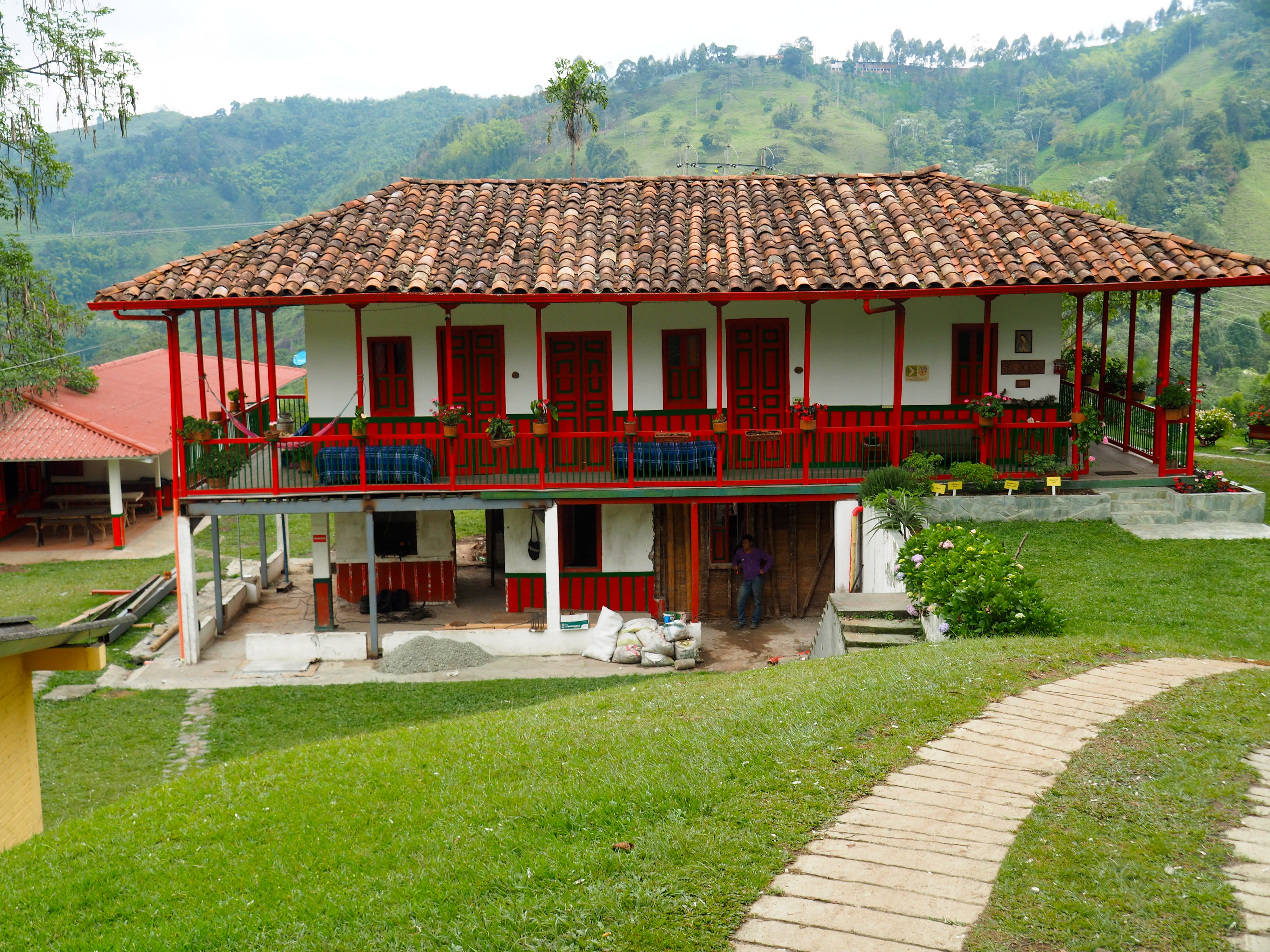
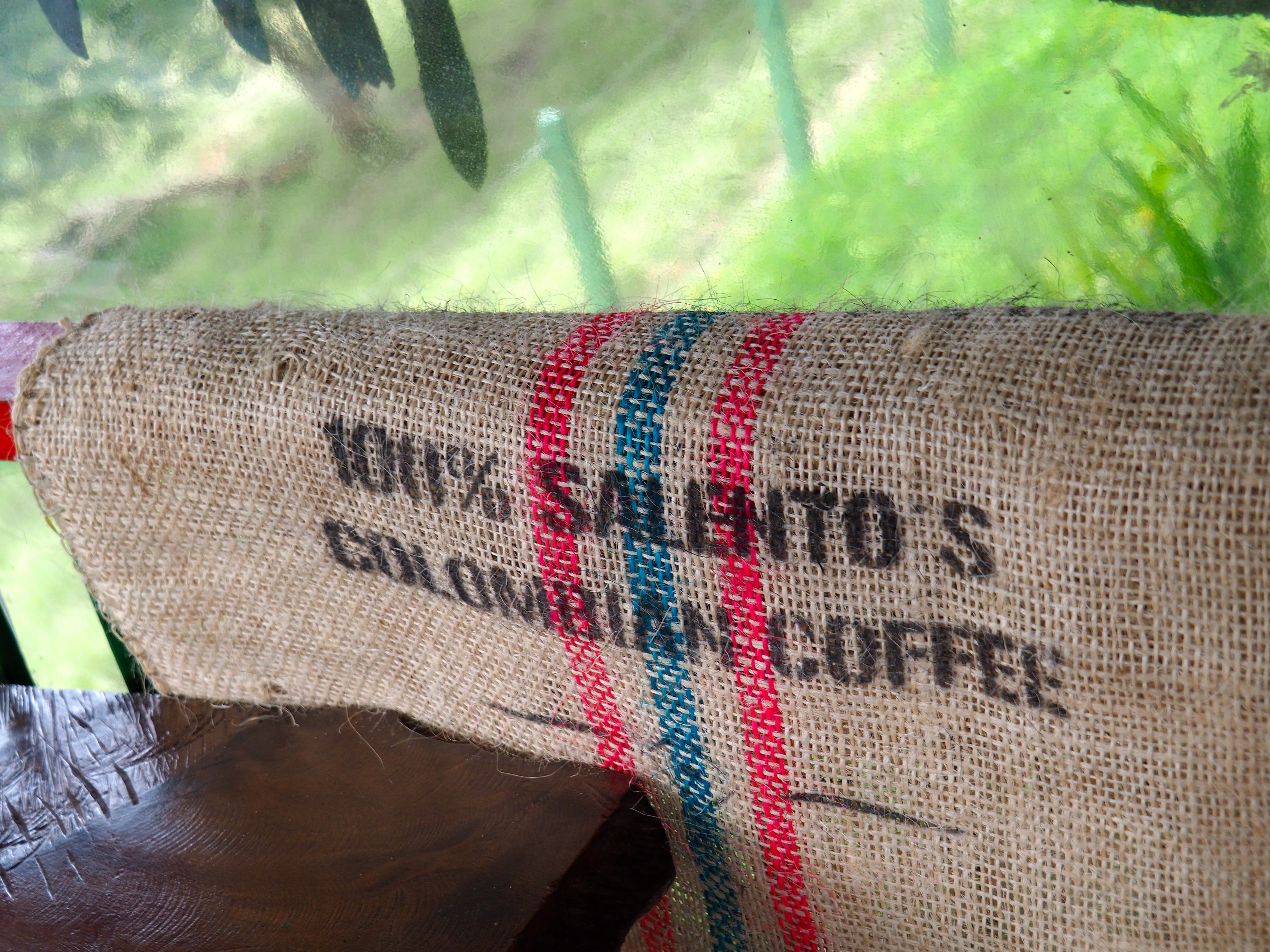
Our guide was a lovely, bubbly young lady called Paula. Straight away she had us all introduce ourselves and gave us some context on Colombia’s coffee history. We learnt that Ocaso is a working finca (farm) and still turns out bags upon bags of roasted coffee beans daily for supply all around the world.
The lovely Paula
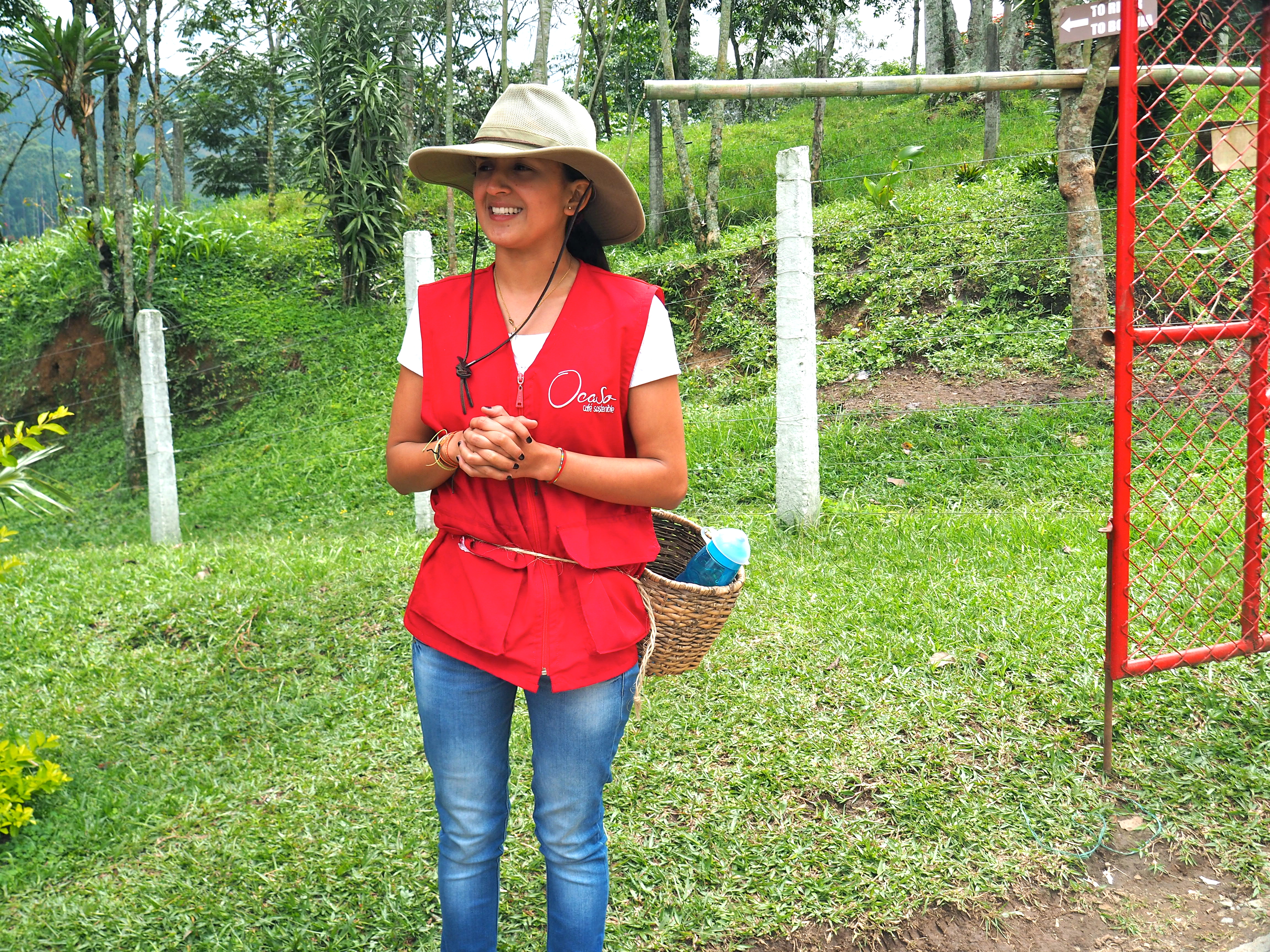
Soon after we collected our own traditional, coffee-gathering baskets, tied them around our waists with a special knot (that no-one seemed to manage without her help, despite Paula showing us a few times!), and thus the tour began!
Choosing our baskets for coffee-collecting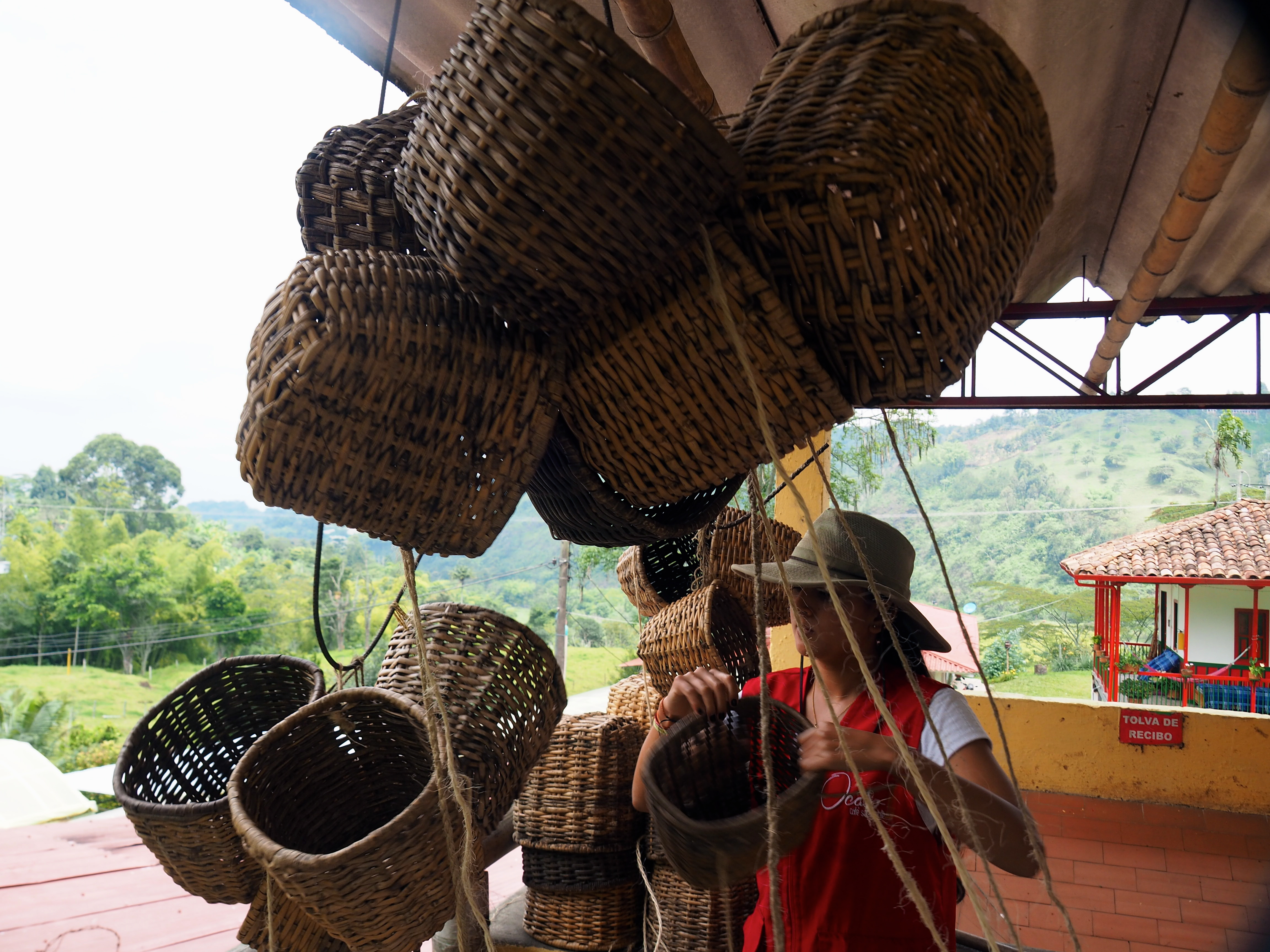
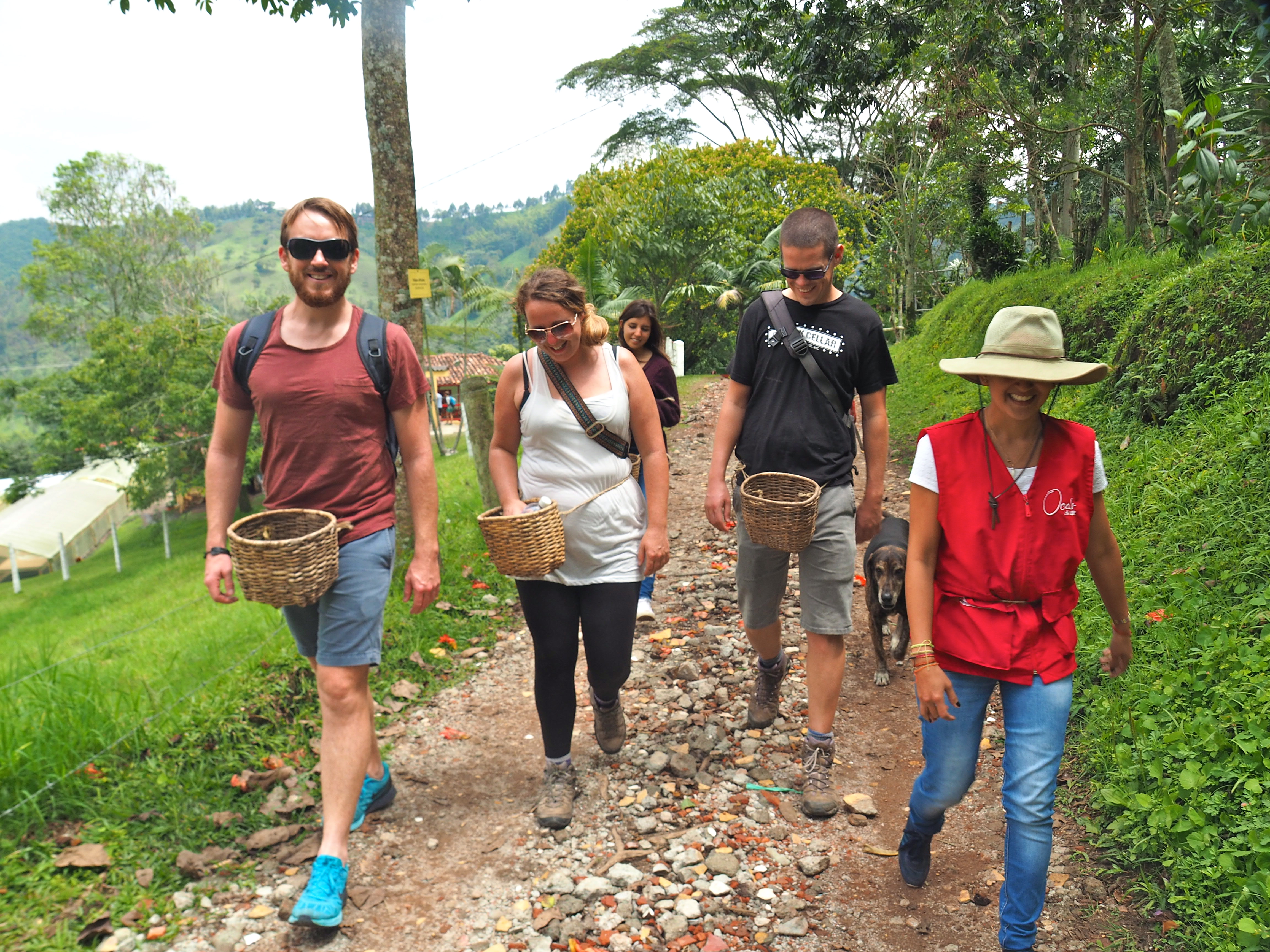
We first sat down for a bit of an educational session on the life cycle of the coffee beans – although I had done one of these tours (on a much smaller scale) in Vietnam’s Dalat region a few years ago, I have to say that the details had escaped me, so if felt like I was learning everything for the first time.
And Paula did such a great job of explaining the coffee bean’s journey – her in-depth knowledge of the process (even when we threw left-field comments at her!) showed she was much more than just a tour guide. We learnt how the coffee bean is actually a berry and once harvested some are transplanted for new plants, whilst others begin the processor roasting.
I love the fact that as I snuck out of my seat and around the back of the group to take a group photo, Paula stopped to throw me a massive smile – look at that cheeky grin! In her words, she has seen too many photos of herself chattering away in photos and now prefers to stop and smile for photos – what a crack up!
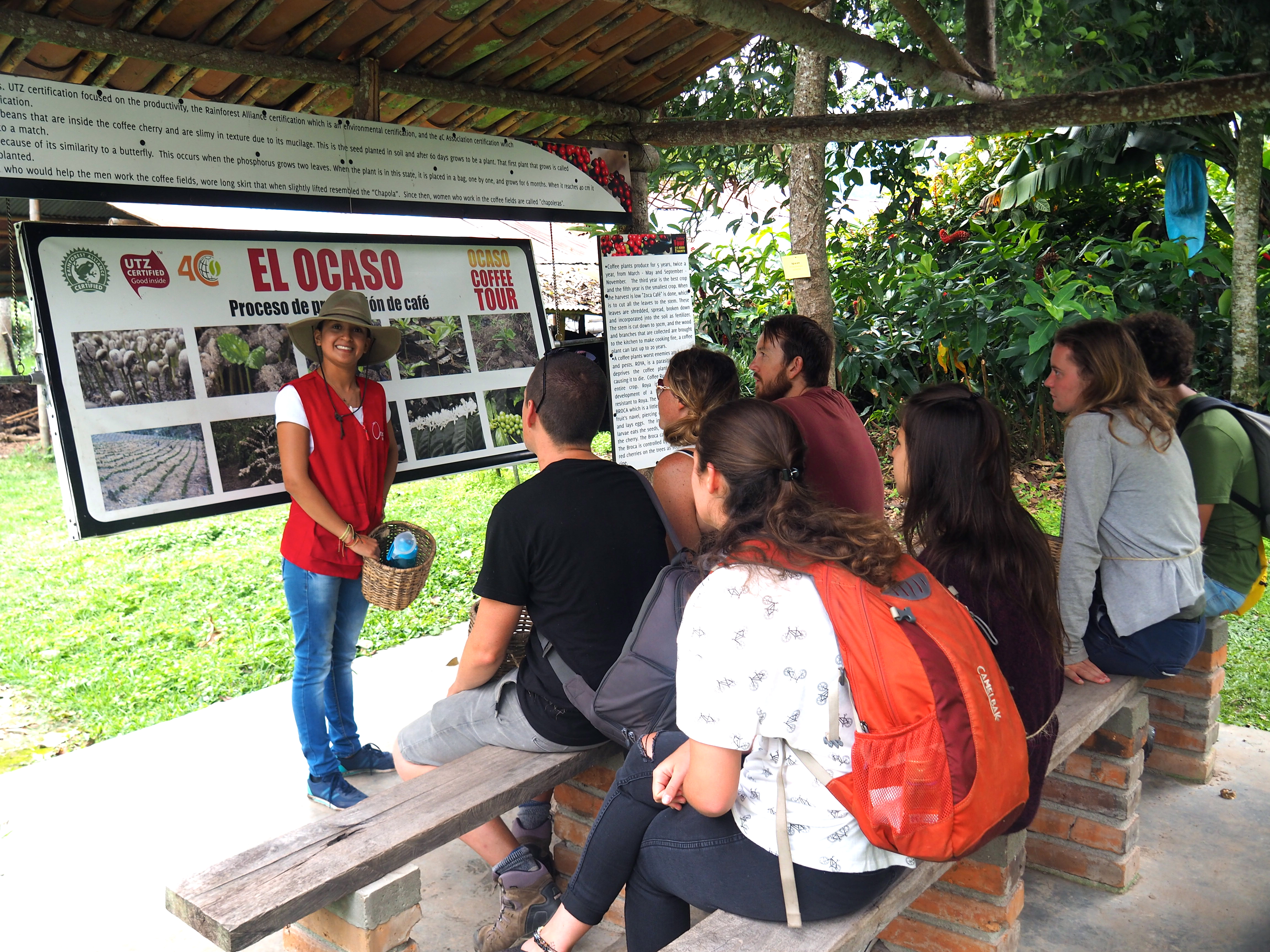
A coffee berry freshly picked – the fruit on the outside
the bean looks beige when raw
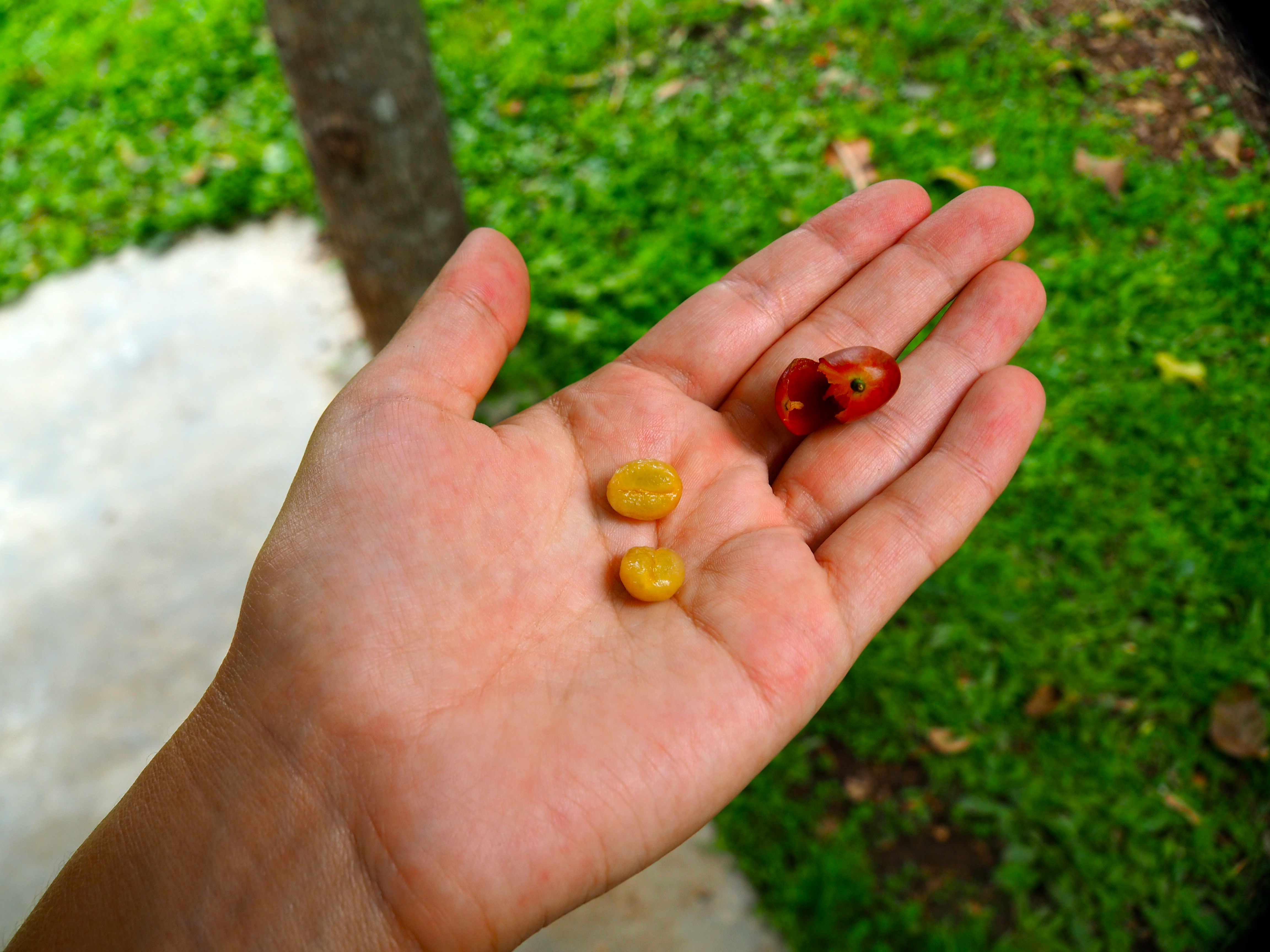
Next up we had the chance to transplant actual coffee beans that would be used as future coffee-bean bearing plants for the Ocaso finch. This was pretty cool and reiterated the process of sustainability that this plantation thrives on.
Transplating for next year’s coffee crop!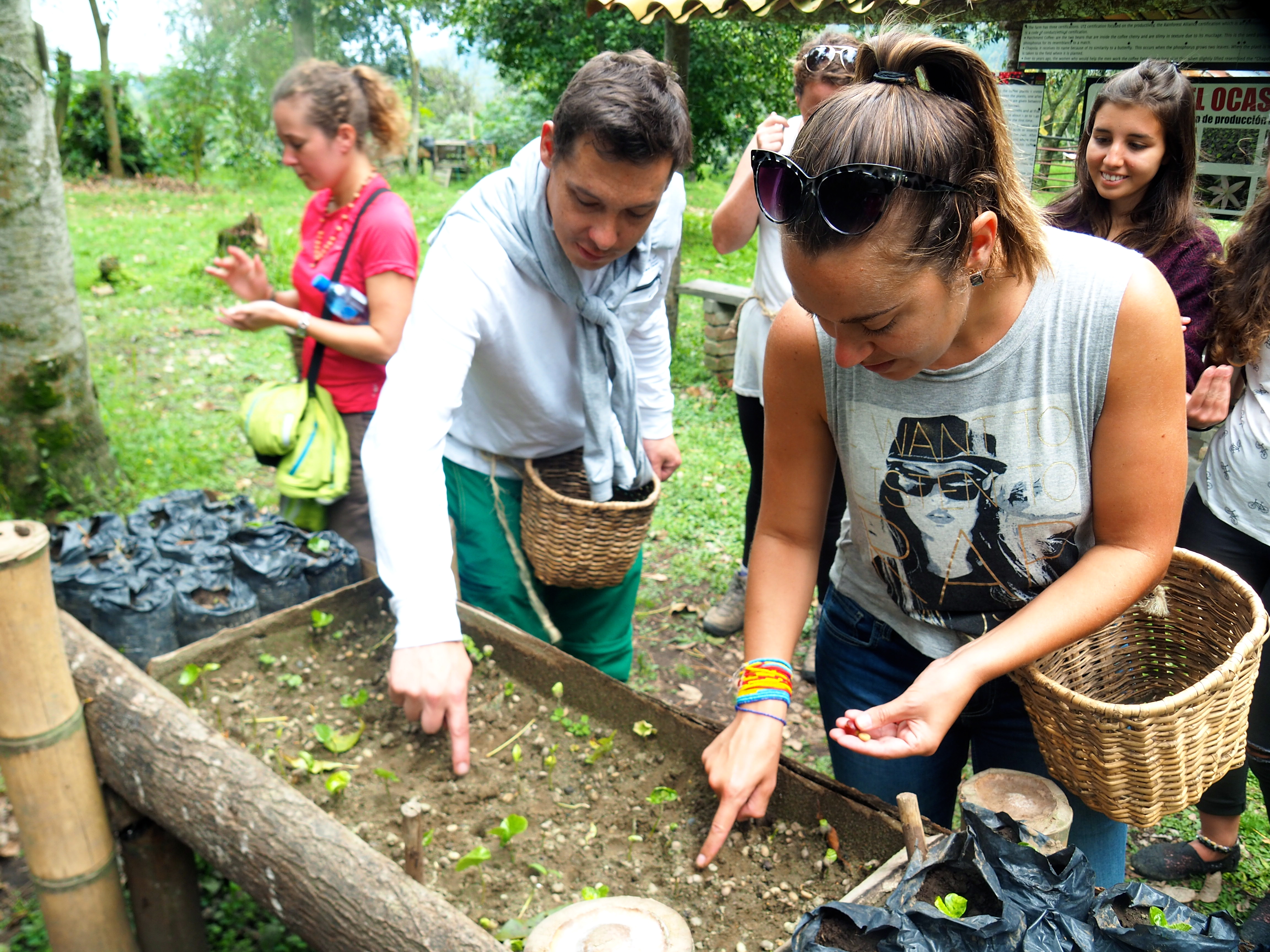
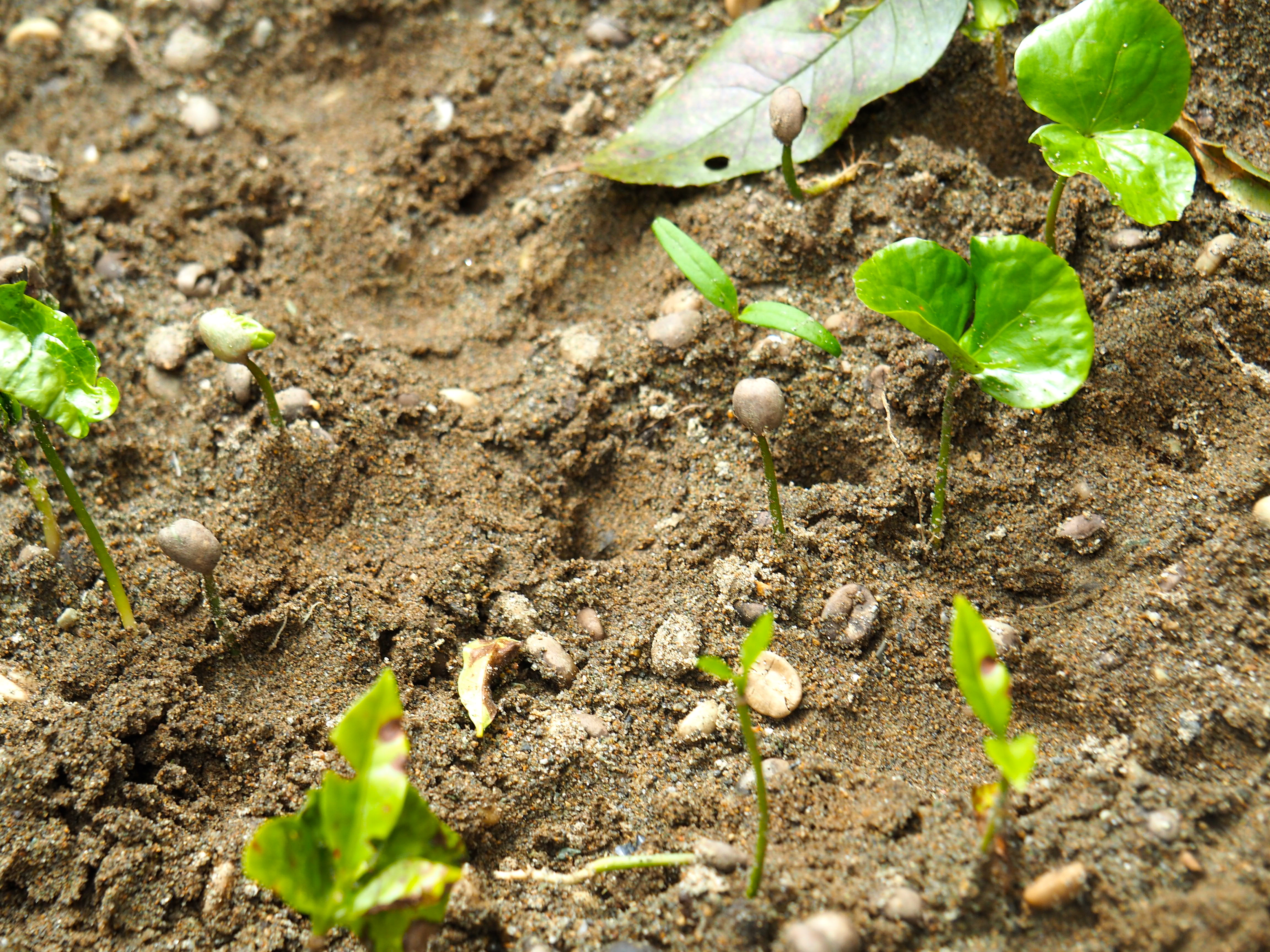
Next up we were shown the different kinds of coffee plants, including those that Ocaso no longer farms (due to height, density or the type of bean). We also learnt that part of the ‘sustainability’ or eco-friendly approach Ocaso promotes means they have to include a certain percentage of different trees in their plantation grounds so as to encourage the diversity of wildlife and insects etc – hence the banana, avocado and other types of trees we saw everywhere.
Some of the coffee plants ready for harvesting
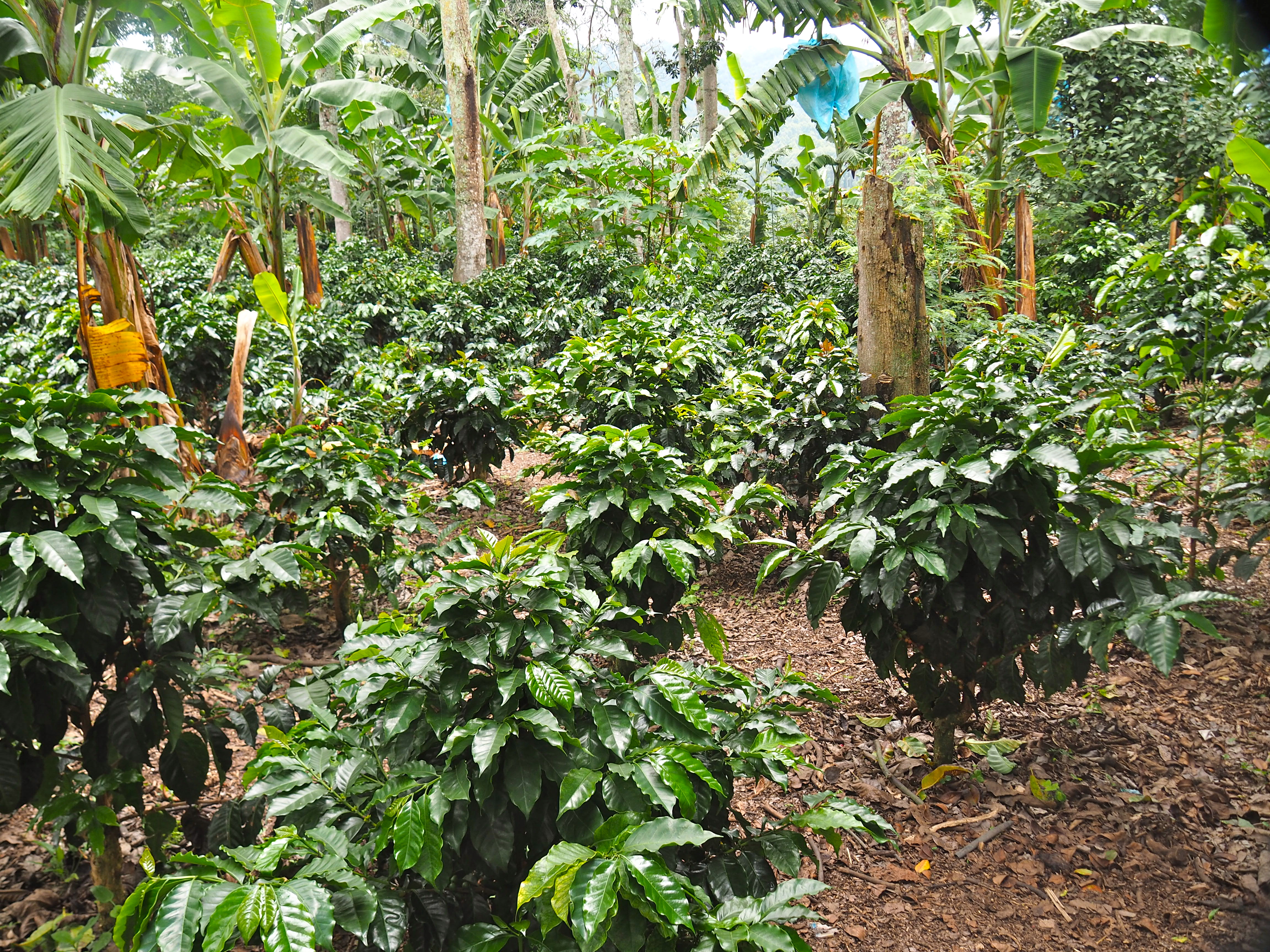
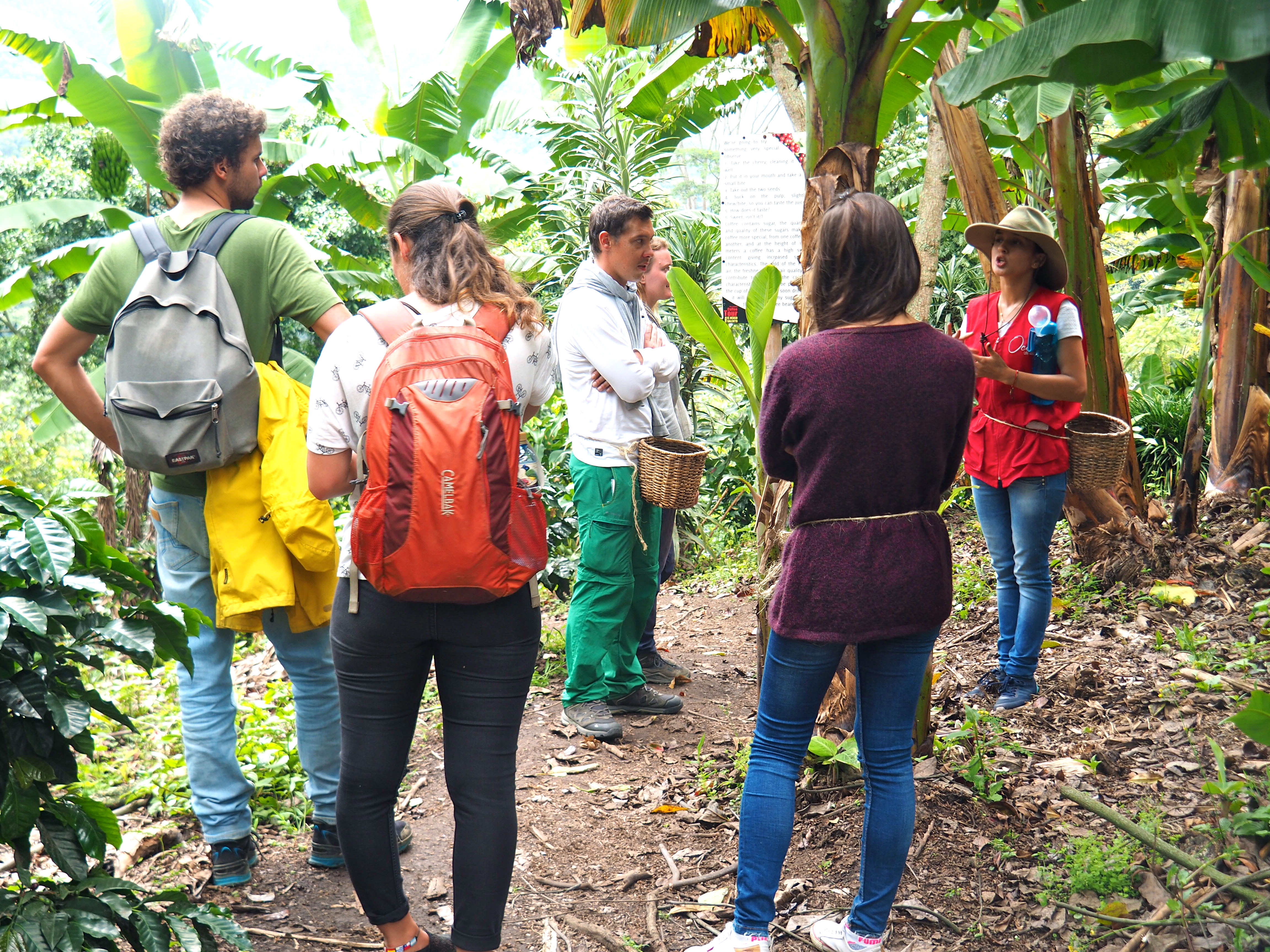
Next up, it was time for us to make like a traditional coffee-plantation worker and harvest some of the coffee plants ourselves. Now, our baskets would come in handy!
Harvesting!
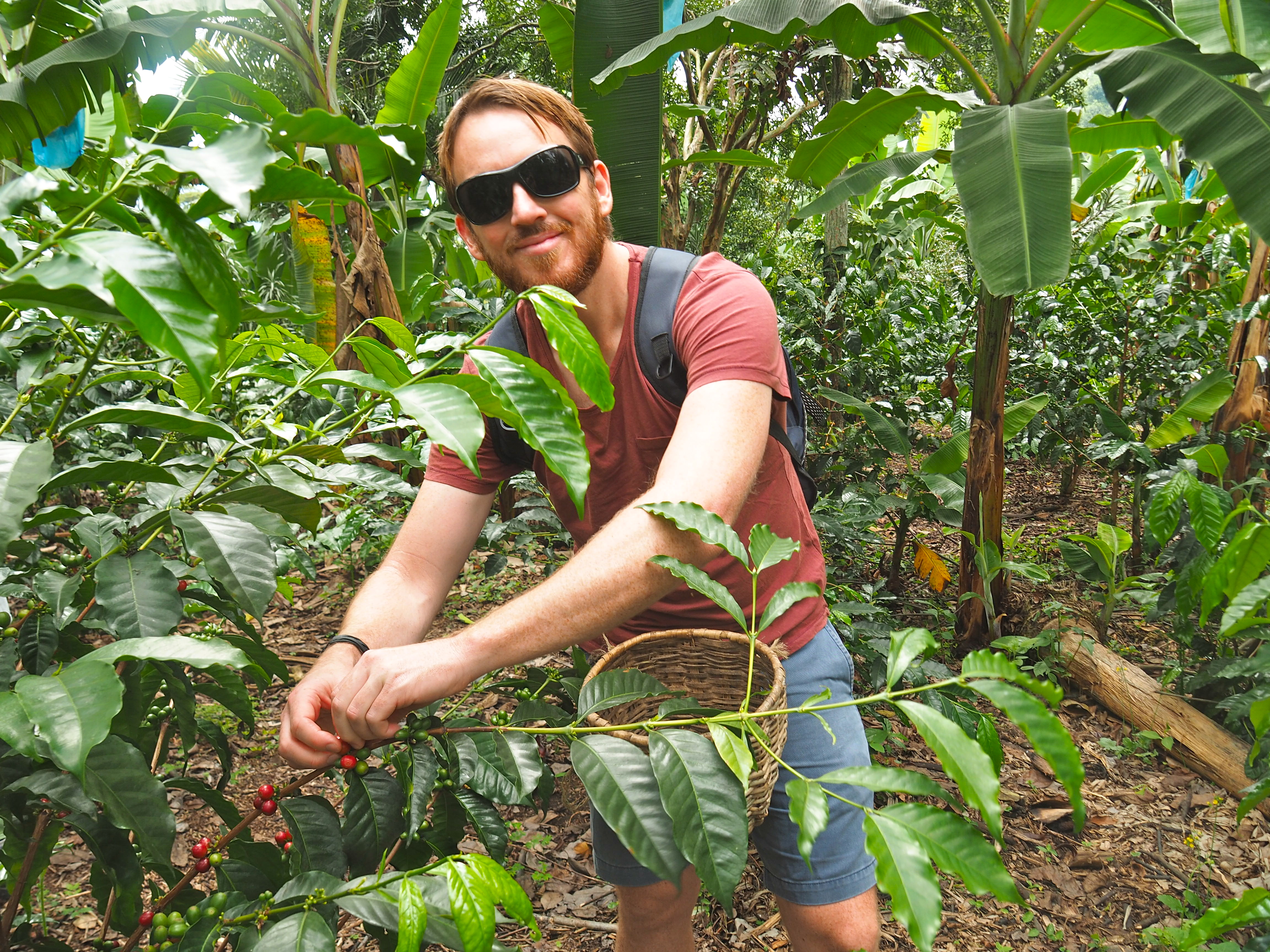
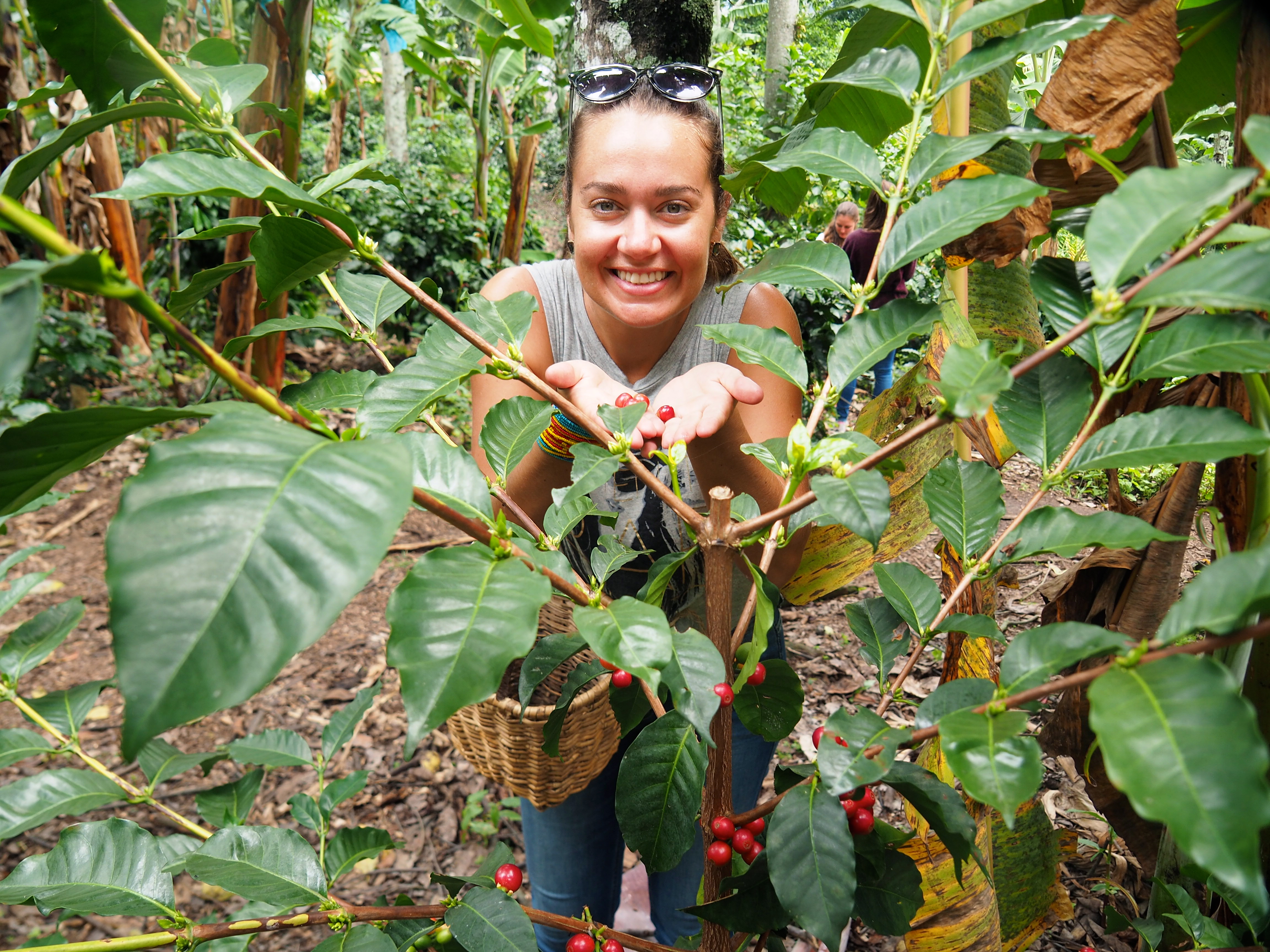

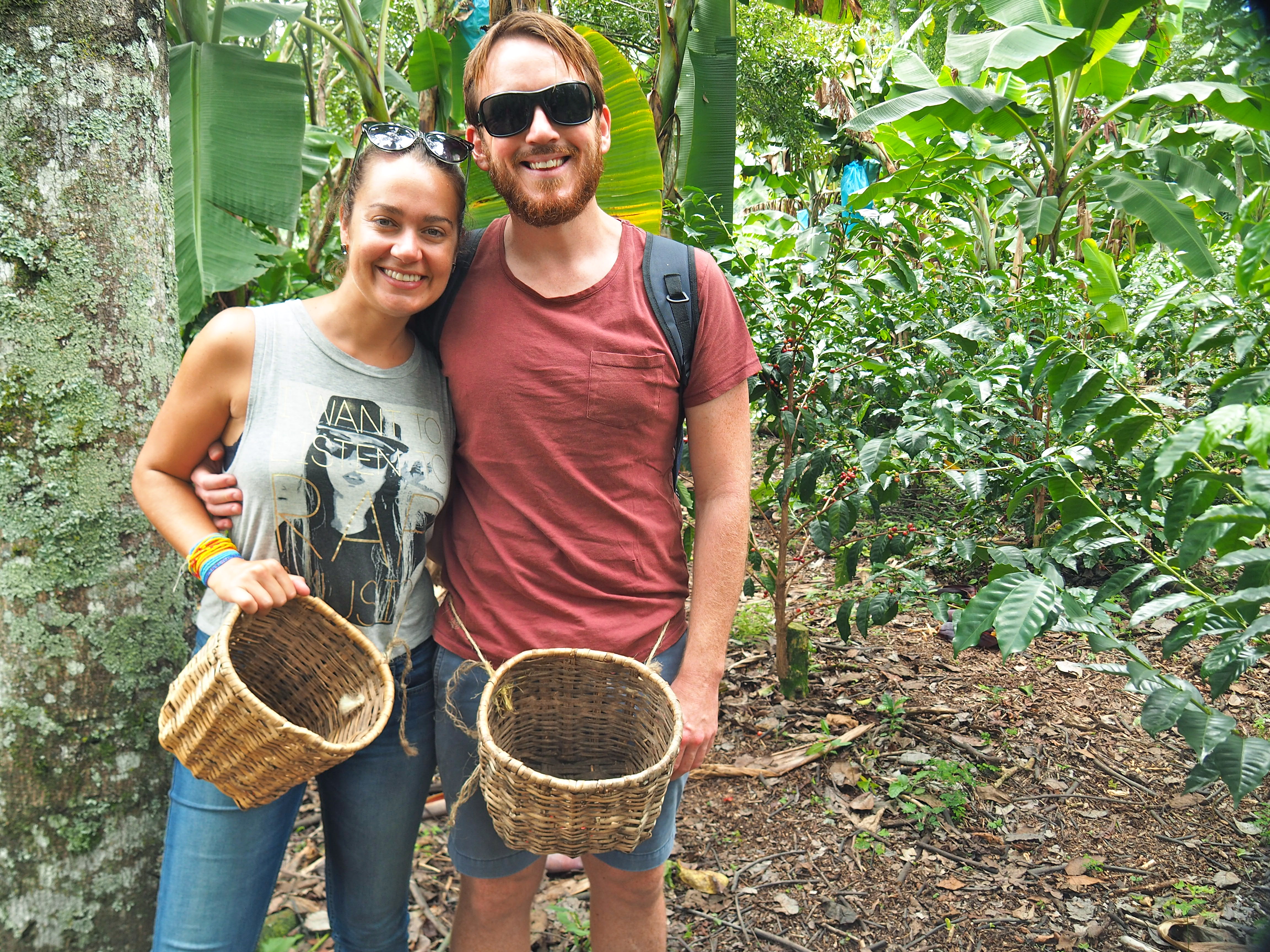
We also got to meet some of the ACTUAL harvesters and man, do these guys work hard. The (mostly young, but some older) gents work six days a week, plucking the ripe beans off the thousands of coffee plants, packing their hessian sacks and then getting them weighed before the go back to picking.
As they get paid by weight, the ones who can carry more generally get better pay. Paula assured us their staff are fairly well paid amongst coffee-pickers, but I got the feeling that coffee pickers in general are probably amongst the poorer (but not the poorest) of those living in this area. Its a tough, thankless job that requires you to work all day in quite cold weather, even if it raining.
Traditional coffee-pickers weighing in
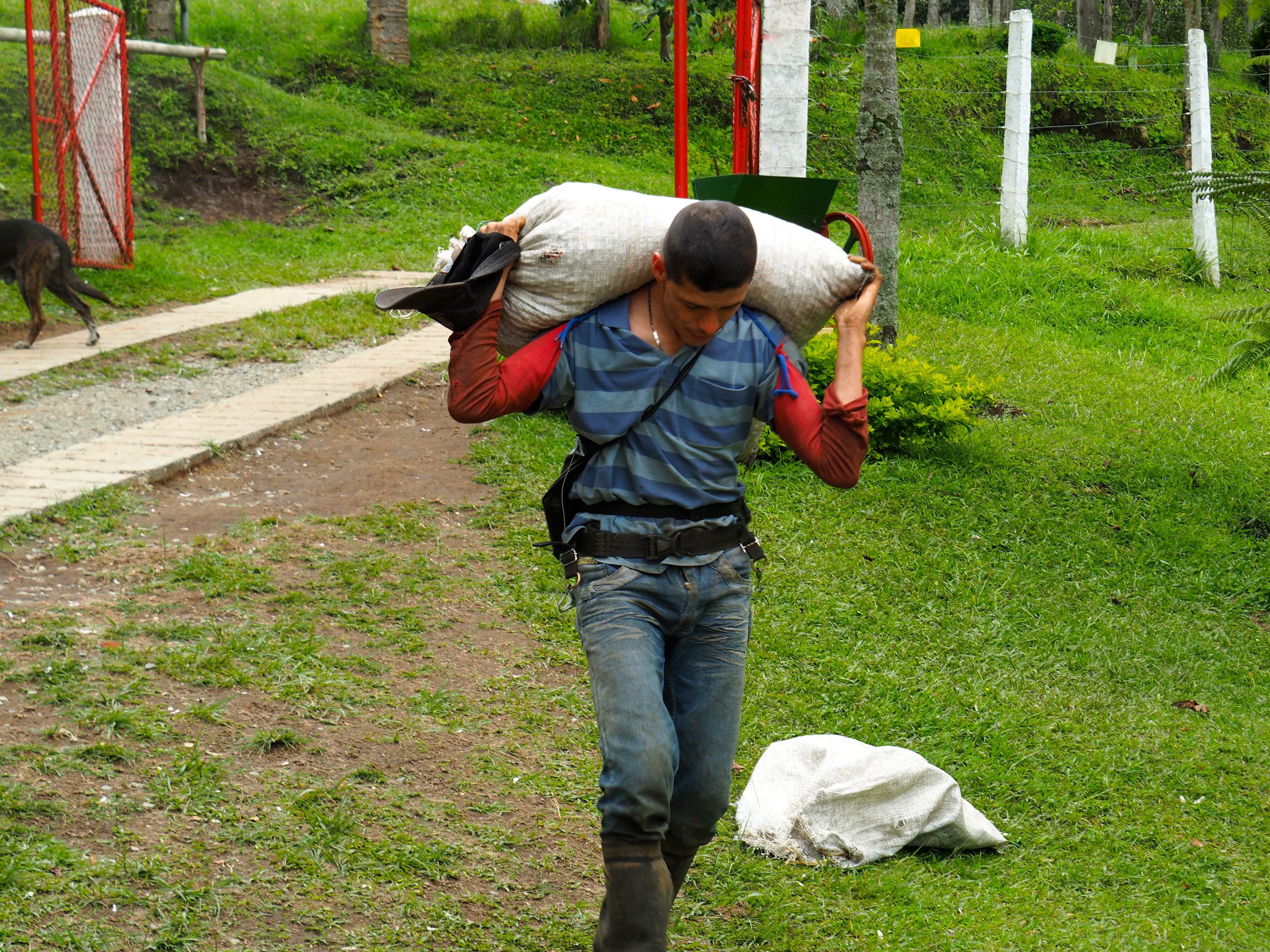
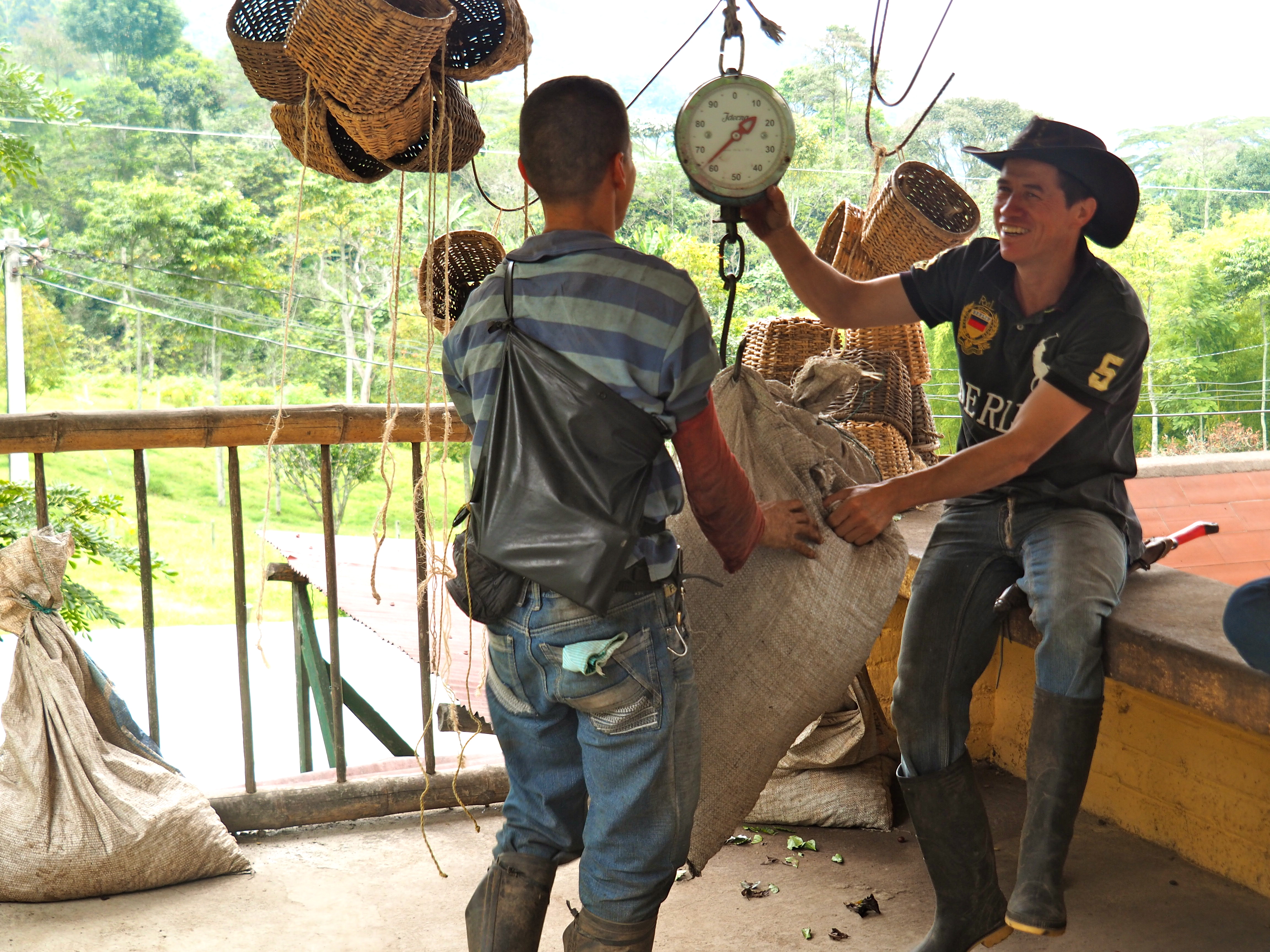
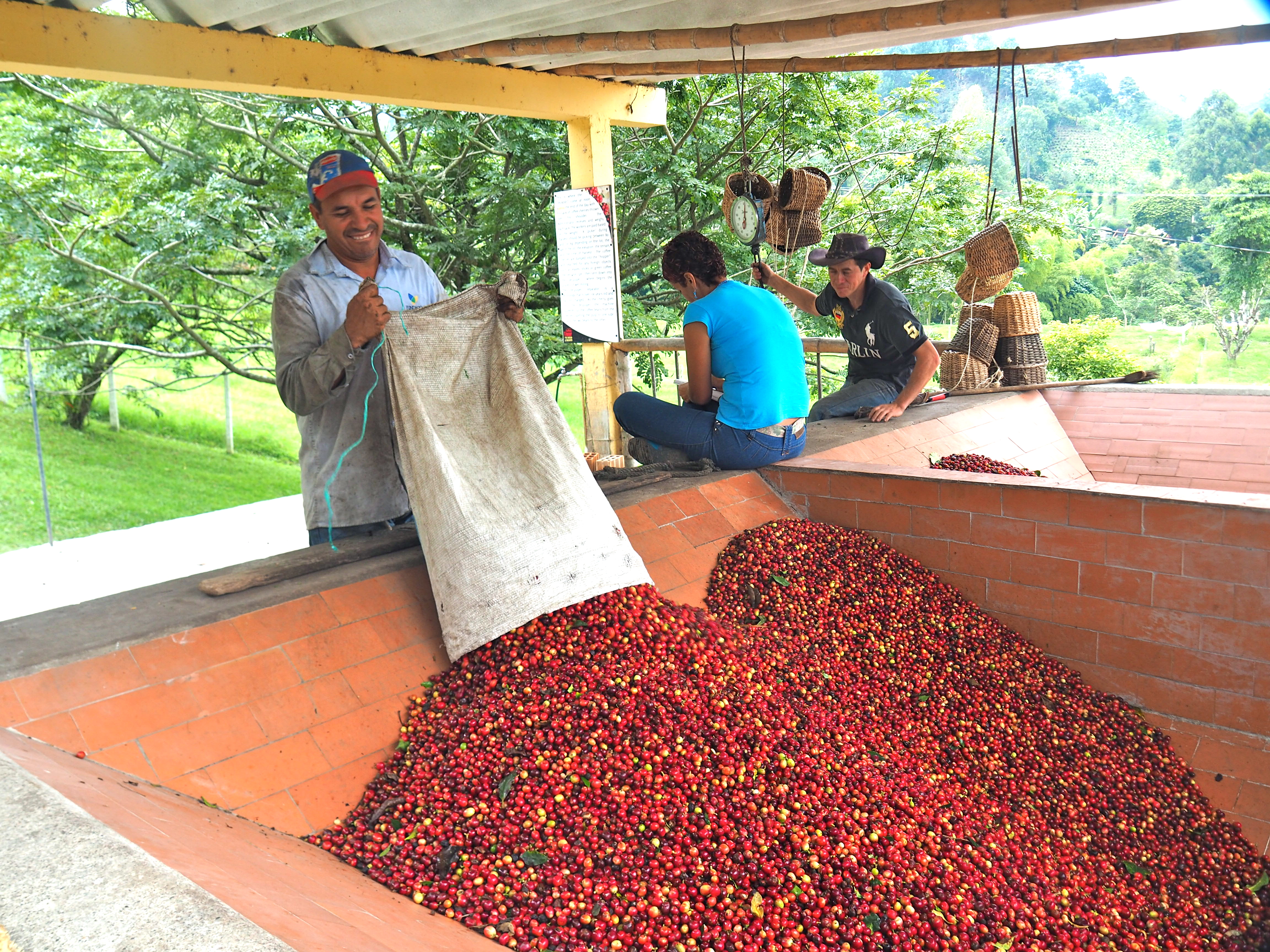
Once the beans are weighed, and checked to ensure they’re ripe, they go through a process which is mostly automated now, to separate the beans from the fruit. Here I am in in the below photo using the old fashioned machine. Even though the process today is done on a larger scale, the basic idea of the machine is still the same!
Splitting the bean from the fruit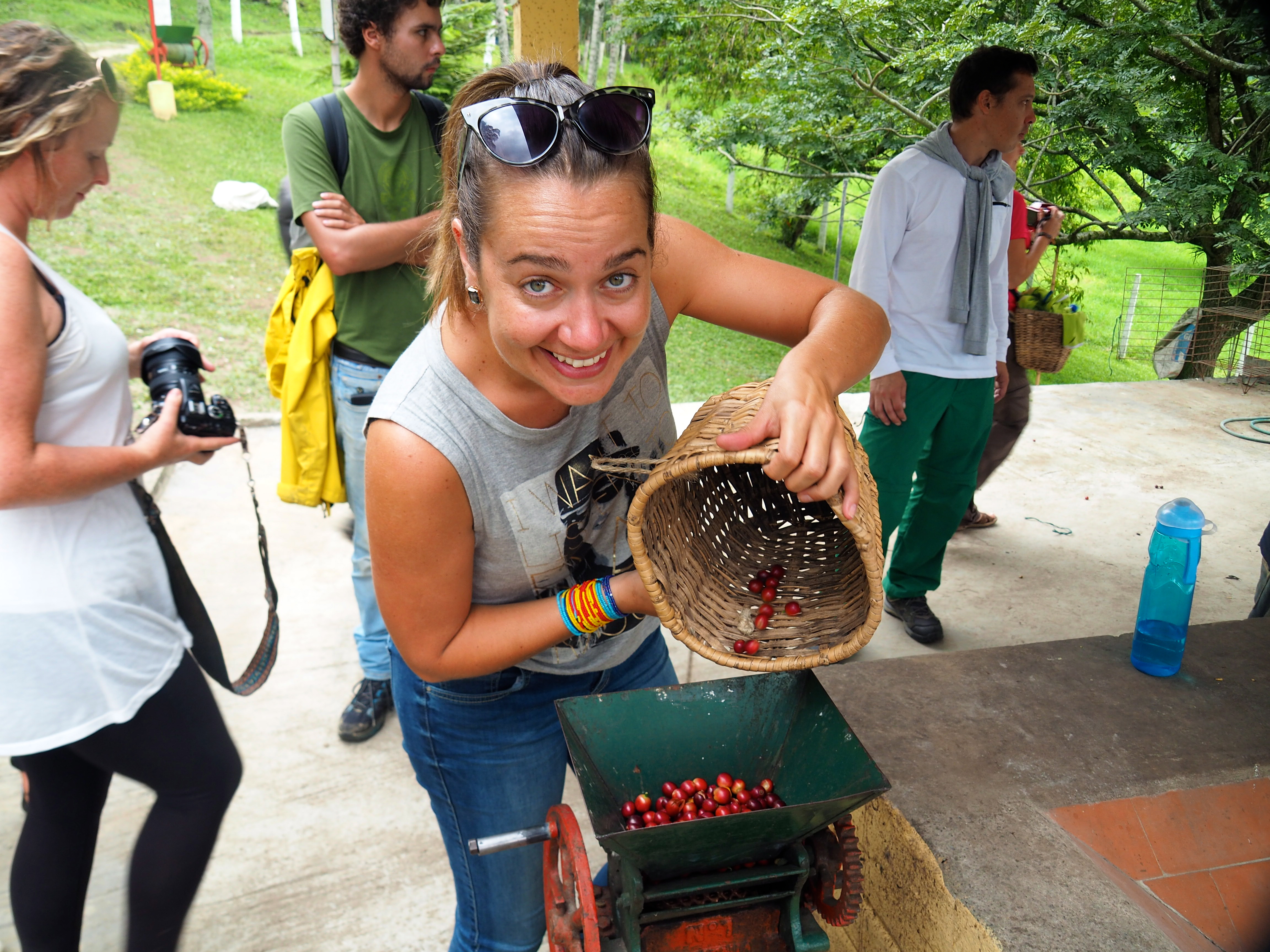
Coffee beans galore!
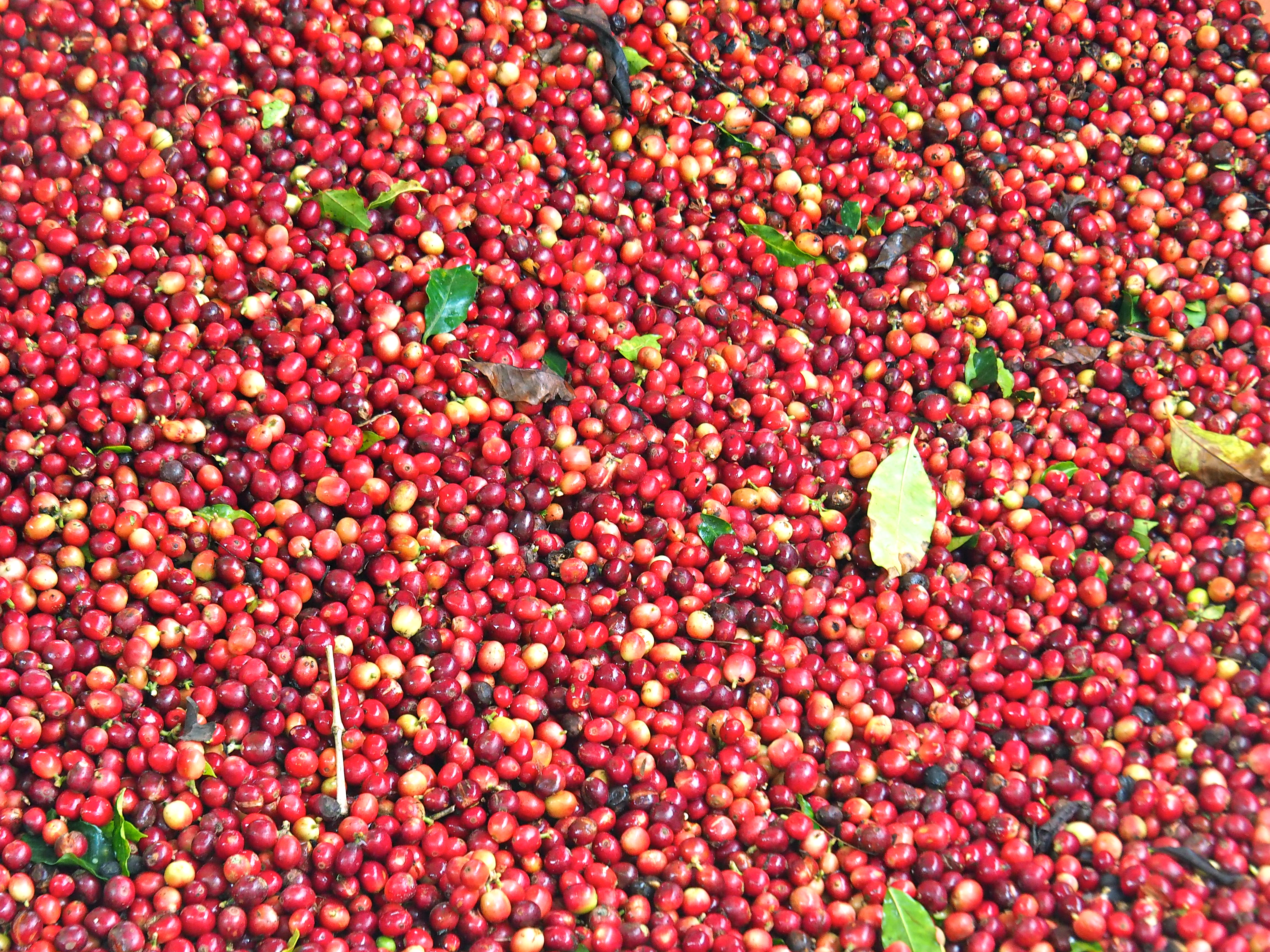
Once the beans are separated from the fruit, they’re dried out and it is important they are completely dried – whether this is doe by a heater or by the sun depends on the wealth of the finca. In Pcaso, they’re fortunate enough to have a dry-roaster which allows them to process larger numbers of beans.
Drying out the beans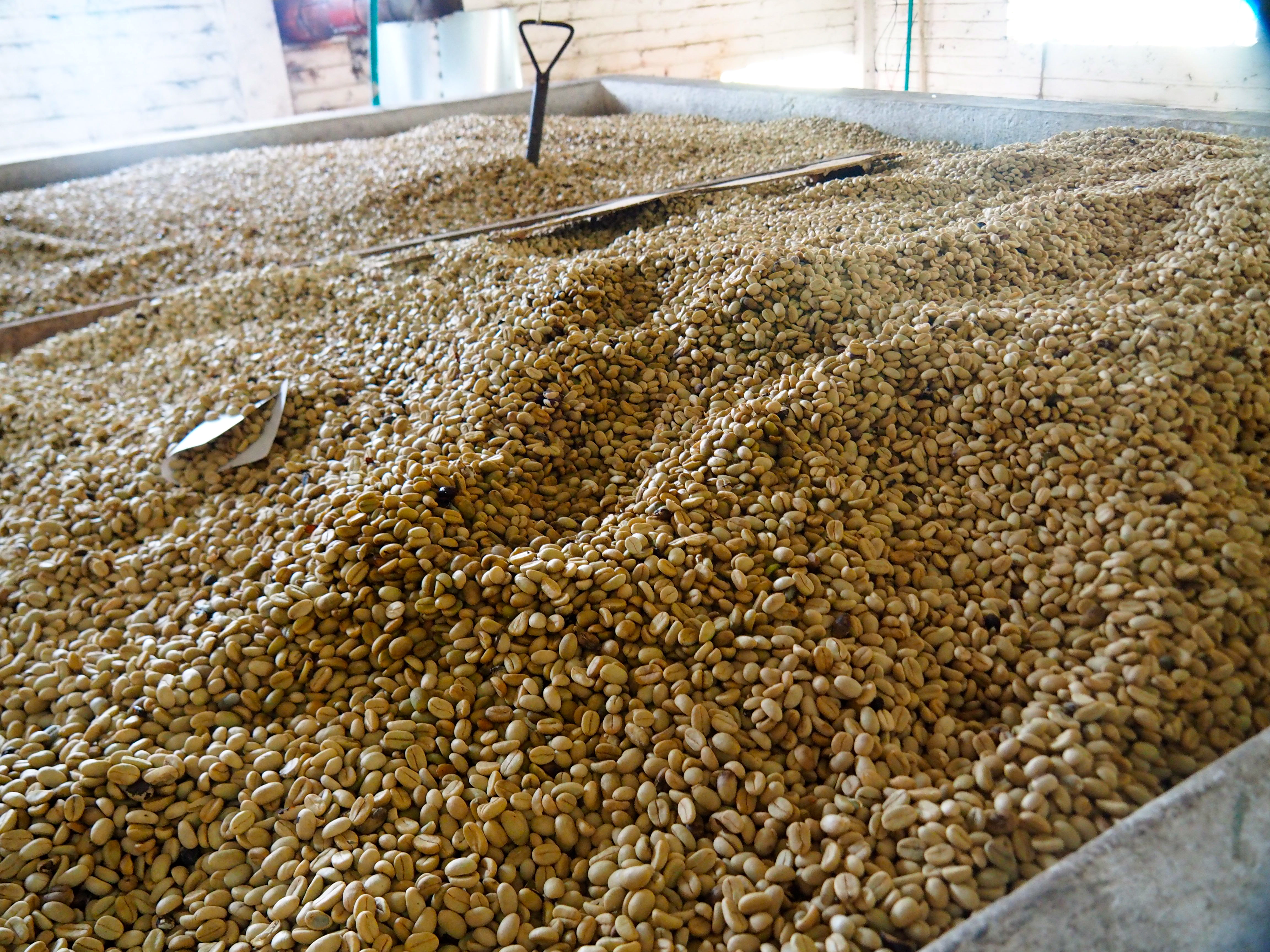
Paula roasting some beans by hand, the old way! The aroma is heavenly!
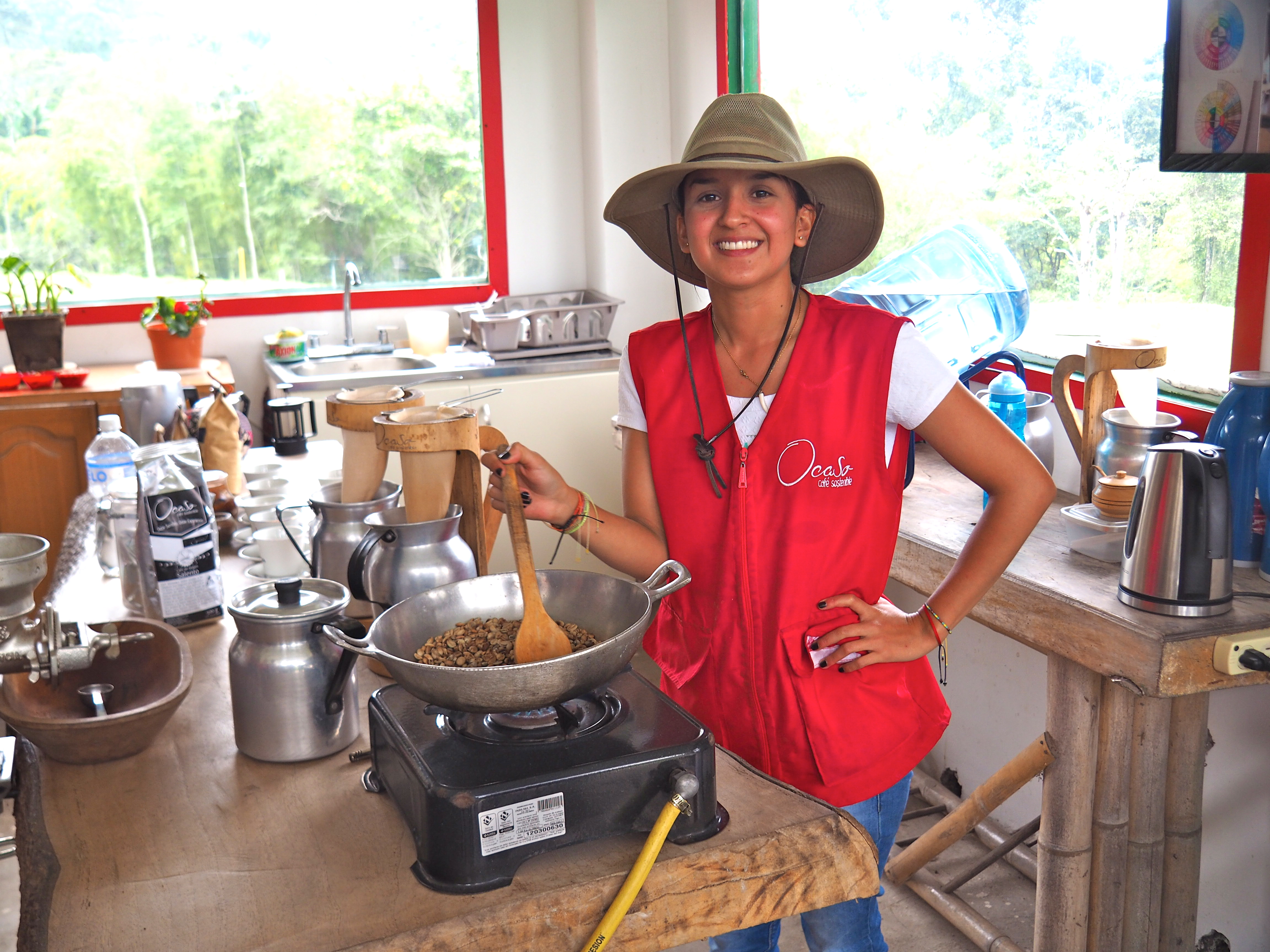
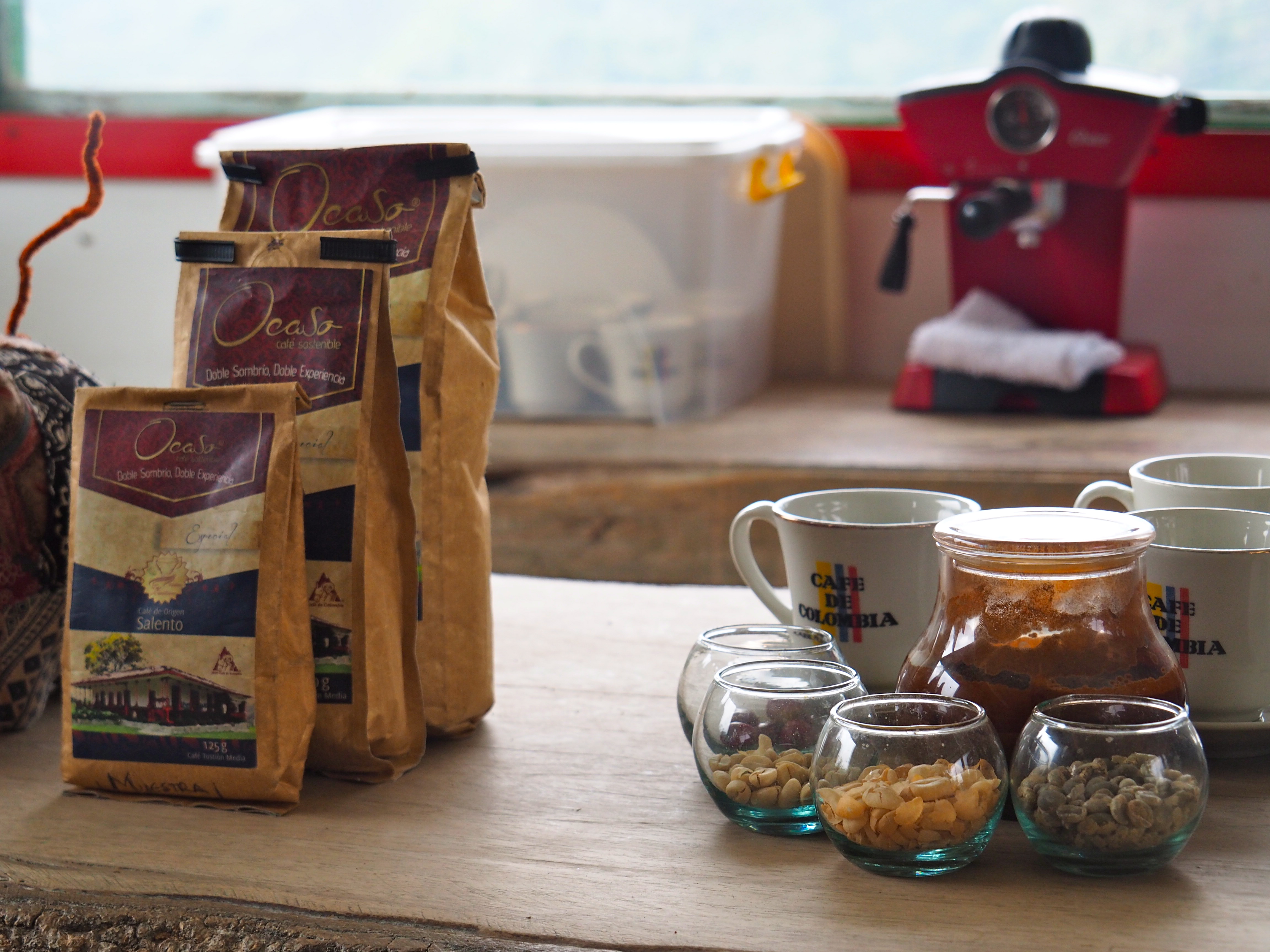
Coffee at every stage of the process – from the raw berry on the left to the finished product on the right

Although Ocaso is a relatively modern coffee finca by Colombian standards, they still do final quality control by the most trusted individuals – the Colombian ladies. These troopers sit there day in and day out, sorting through the roasted beans to ensure the beans they sell on the international (100% Arabica Colombian) coffee market are top notch, before sorting them it into the giant hessian bags you can see.
Sorting, sorting, sorting
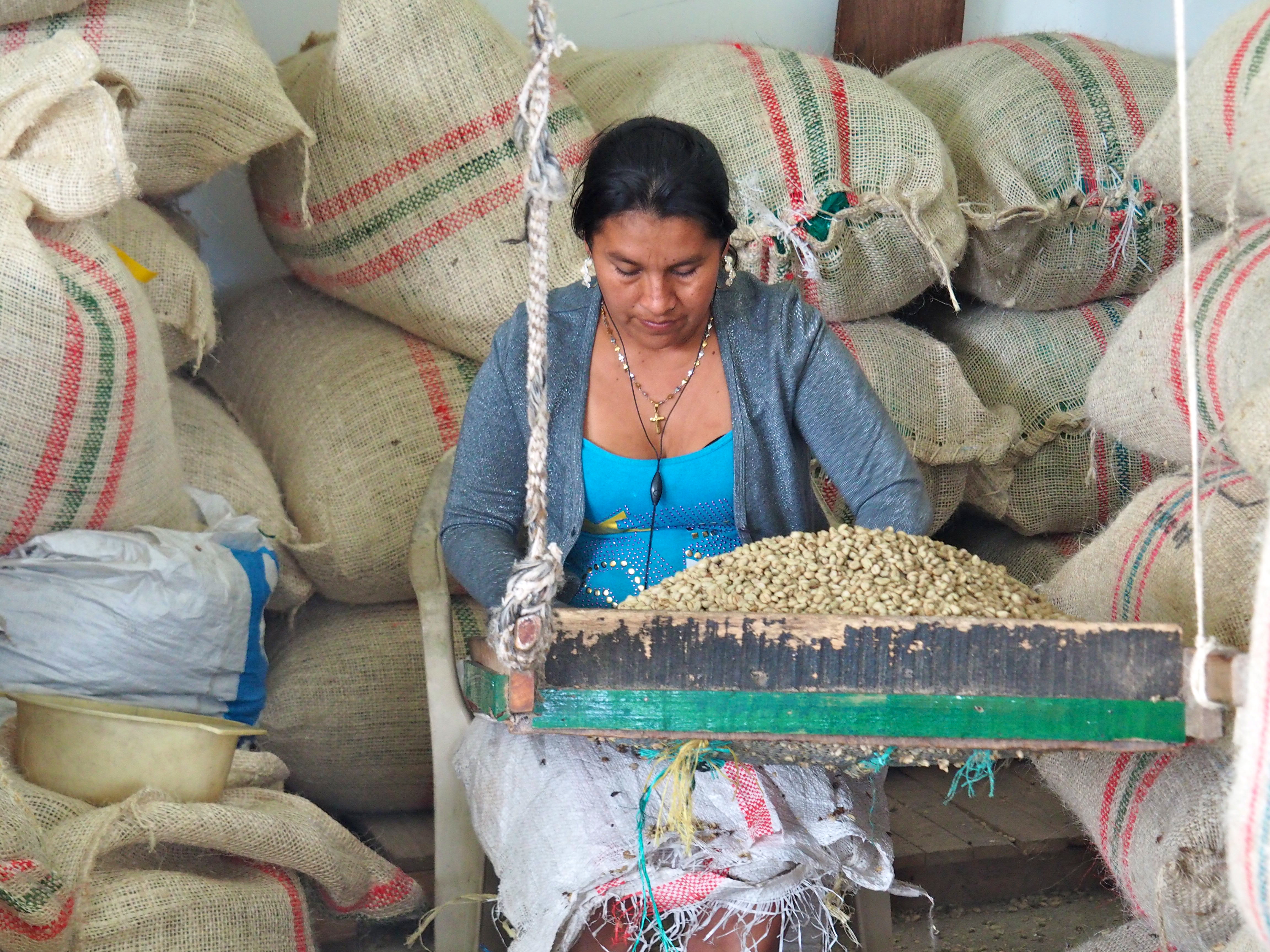
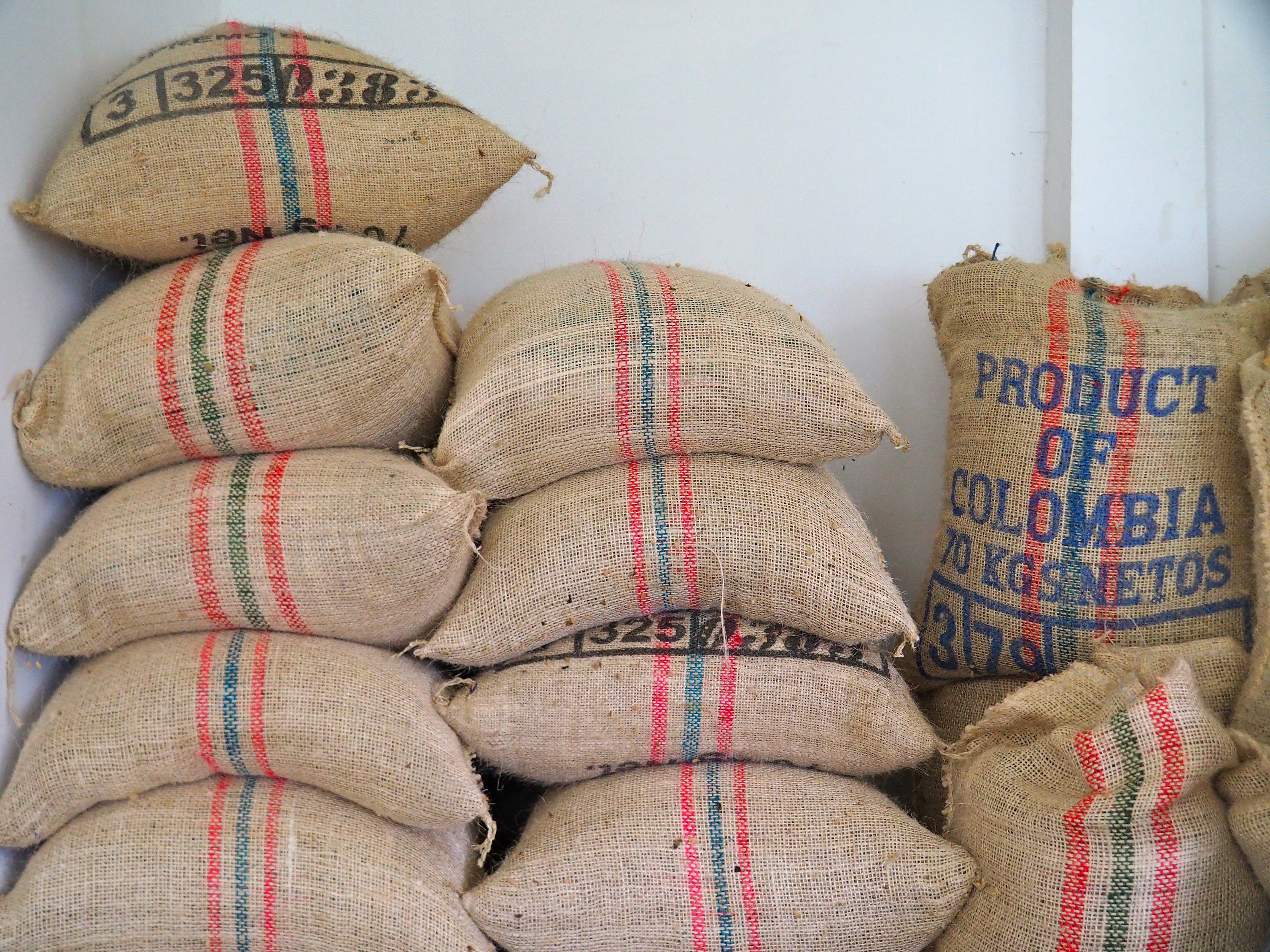
Last but not least, we got to enjoy a special cup of Colombia’s finest brew – DELISH!
Viva Colombia!
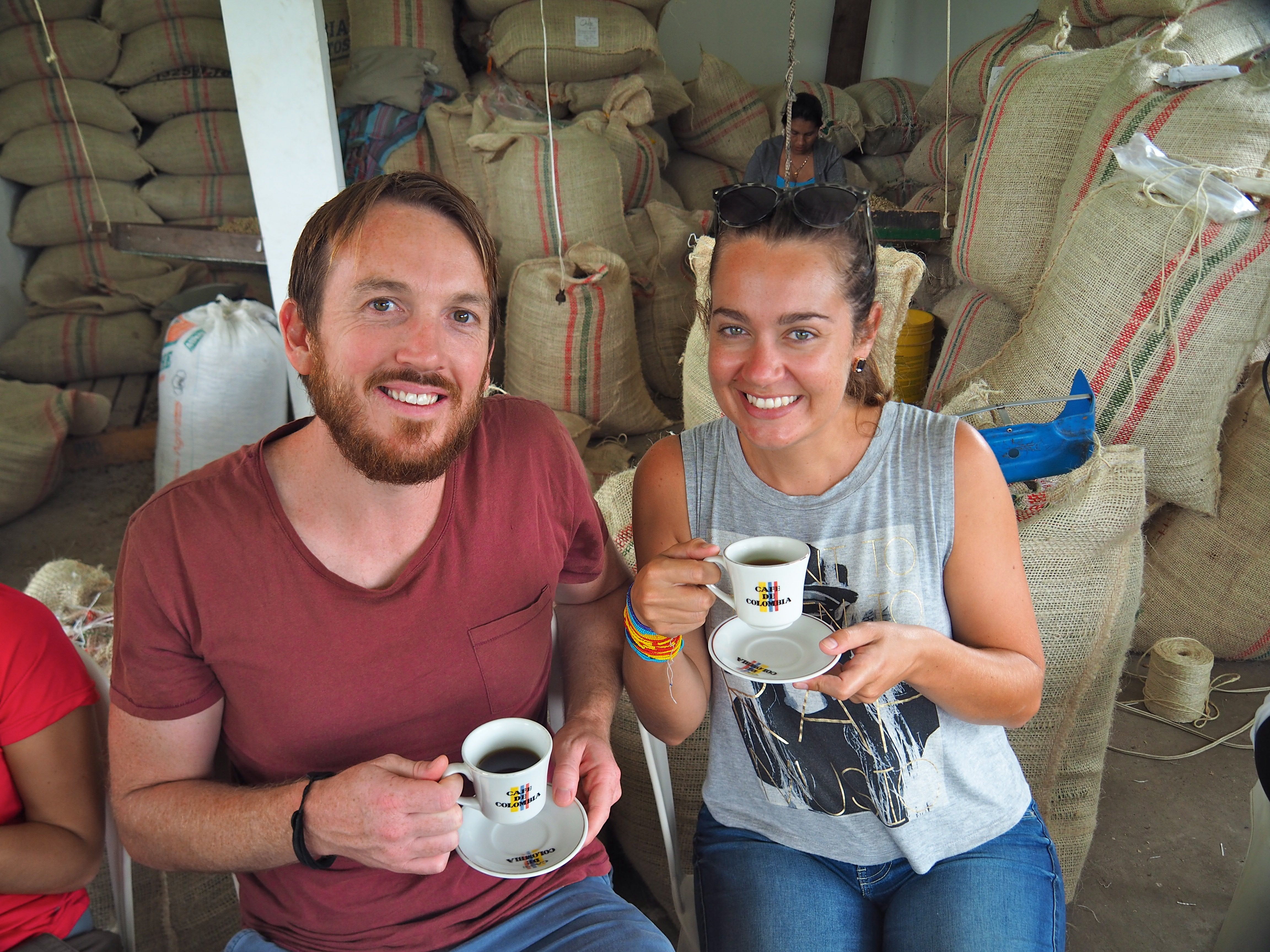
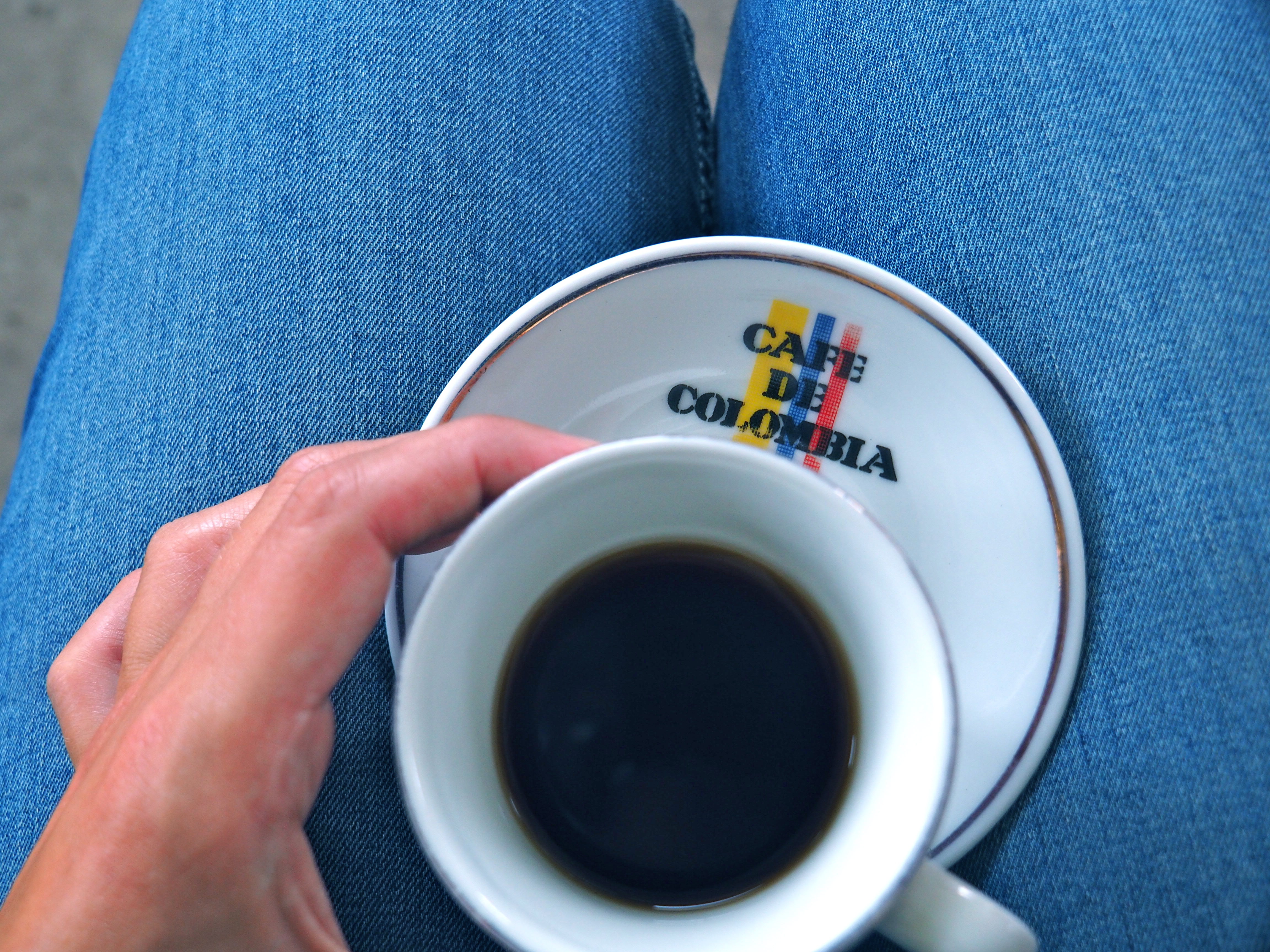
The tour was really fantastic, and I cannot speak highly enough of our beautiful guide – Paula really made the tour worthwhile and fun, as well as informative. Her ability to make jokes and keep our fairly rowdy crew in line made it a top notch experience, Highly recommend Finca Ocaso if you’re after a fun, informational and coffee-focused tour in coffee country – and let’s be honest, why else would you go there?!
Enjoying Salento Village
Following our coffee tour, we caught a Willys Jeep into town when we went for lunch and a few more (alcoholic) beverages, before we met back up with Nat and Max for a true blue Salento experience drinking straight aguardiente (like white samba but tastier!) from shot glasses in the teeniest little local pub where we were the only travellers for mile!
Aguardiente Shots in Salento (bit of a slouch on me in this pic!)


By this time you can see the whole day has passed by – the majority of that was spent eating and drinking – a great way to travel! After numerous drinks in the little bar, we ducked into a random little Italian-cross-Indian restaurant where we were certainly not the only tourists where most of ordered he lasagne – AMAZING – and the other half ordered the curry – ALSO AMAZING! A great way to finish off a fabbo day.
Valle de Cocora Hike
Following on from our dinner the night before with the six of us decided to counteract all of the indulging we were doing by hiking the six hour round trip through Valle de Cocora (Cocora Valley).
We had heard numerous stories of people getting lost and either missing the actual hike altogether, or those who trekked hours in the wrong direction and then spent another six hours completing the right one, so when I spied a little map and directions in the hostel, I quickly nabbed a copy and off the headed.
We caught a Willy Jeep about 20 minutes out of town to the other side of Salento, and our driver dropped us off, took a quick group photo and then pointed up the road, to what looked like someone’s private driveway gate (which would thankfully prove the start of the trail!).
Group pic – the start of the Valle de Cocora Hike!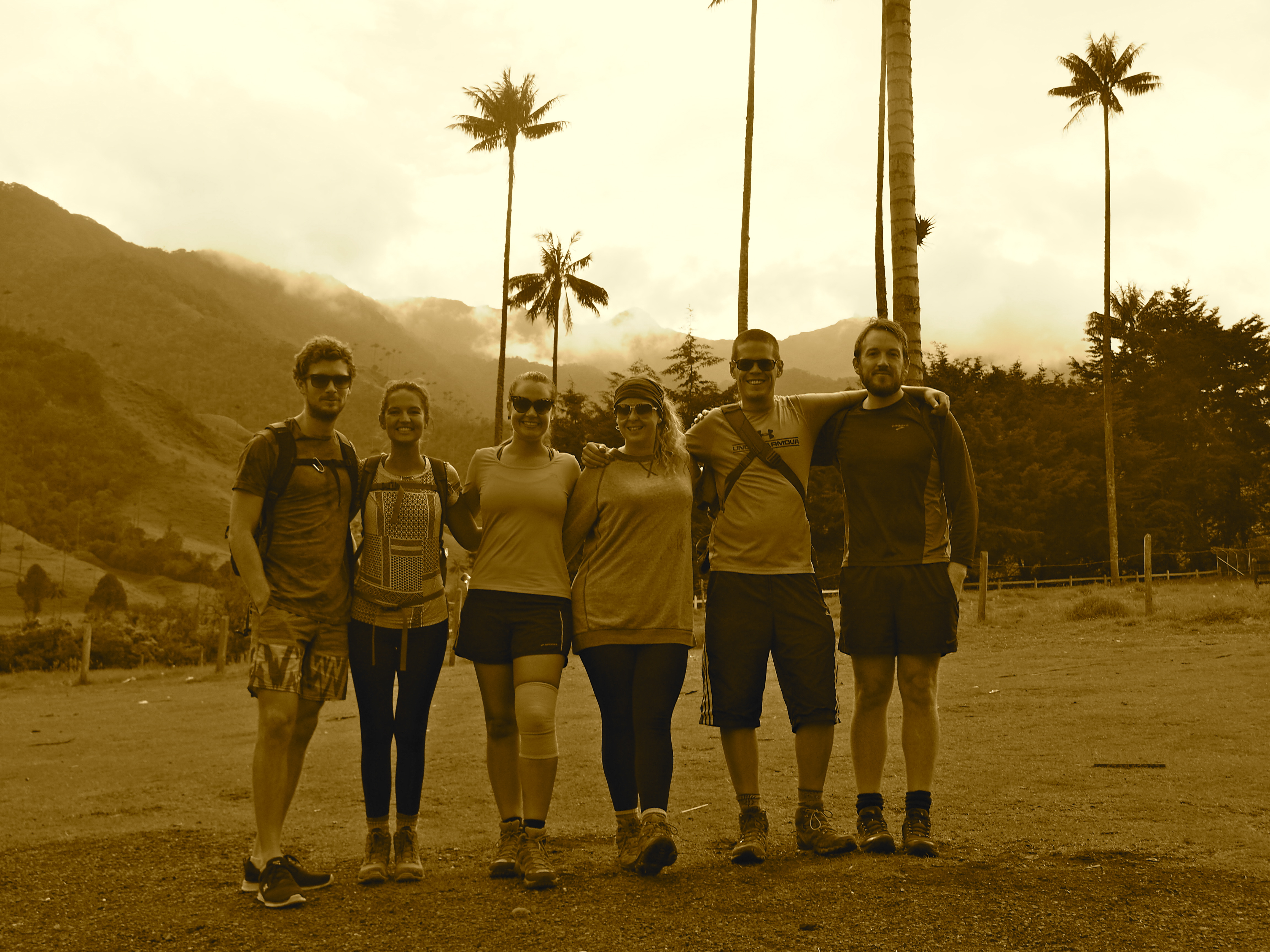
The first forty minutes or so of the hike was mostly flat and easy alongside small farms and next to the river which we (according to my directions) would cross at least seven times on rickety old bridges. We saw cows grazing and the views were already breathtaking and so tranquil.
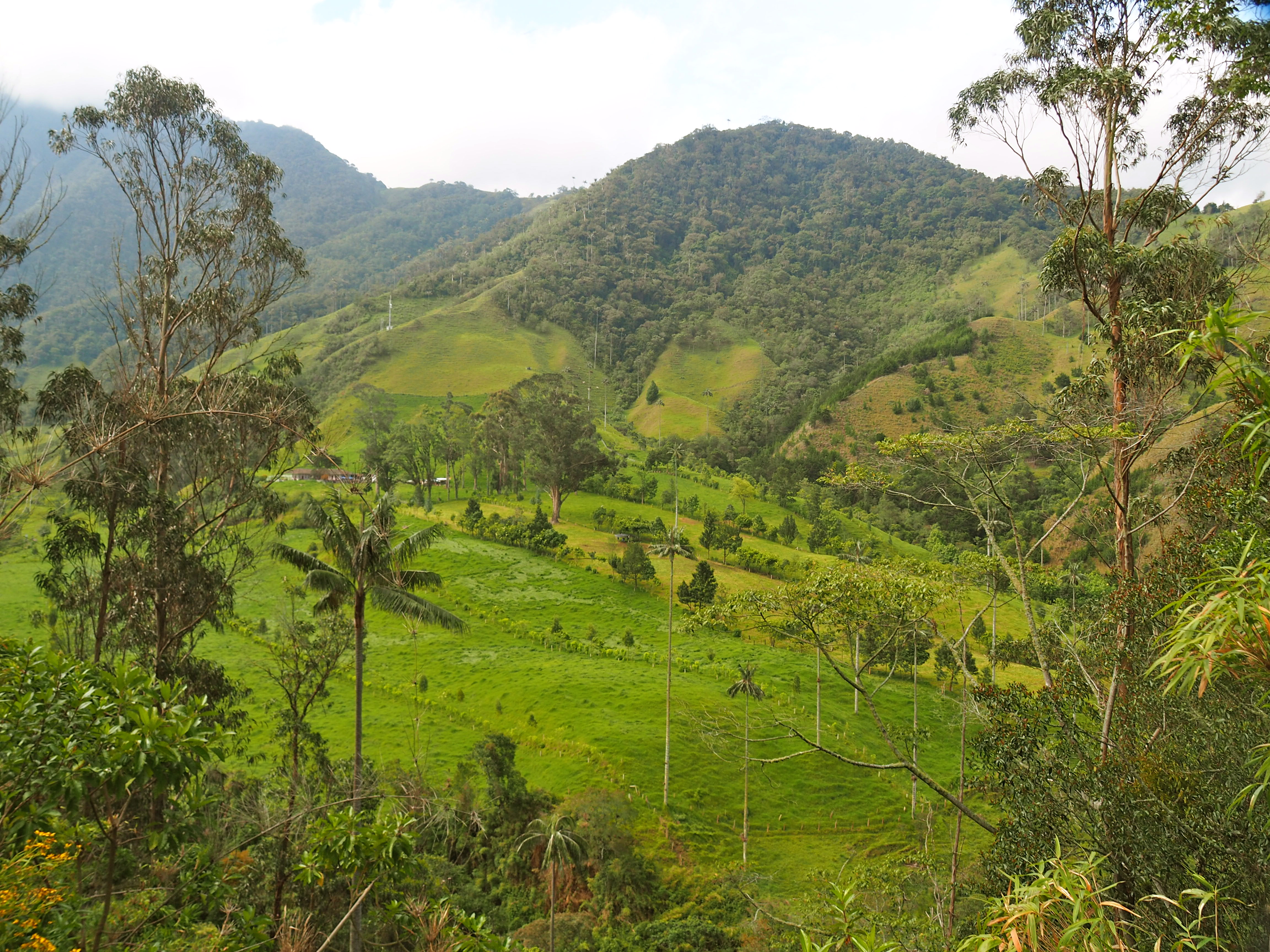
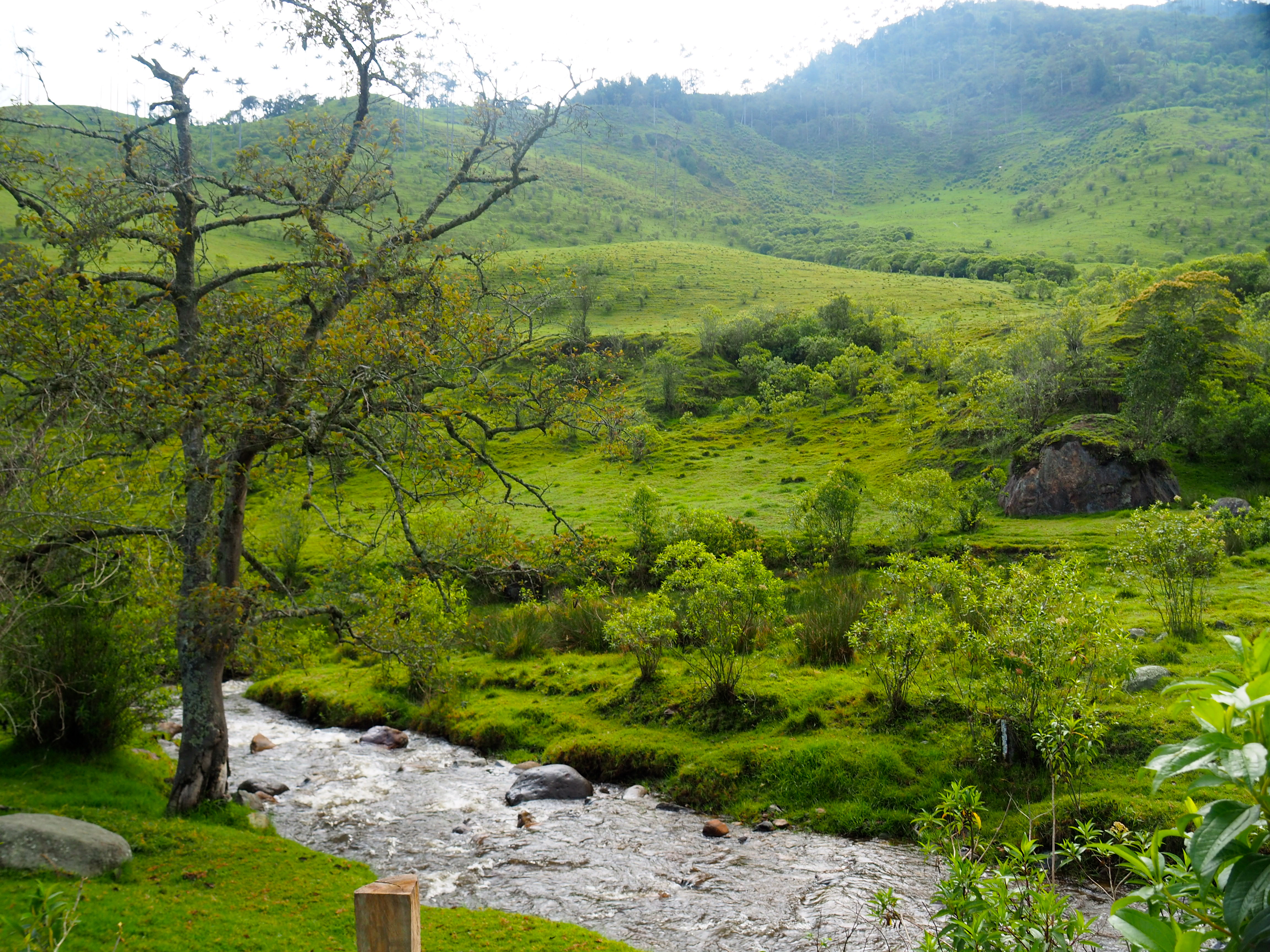
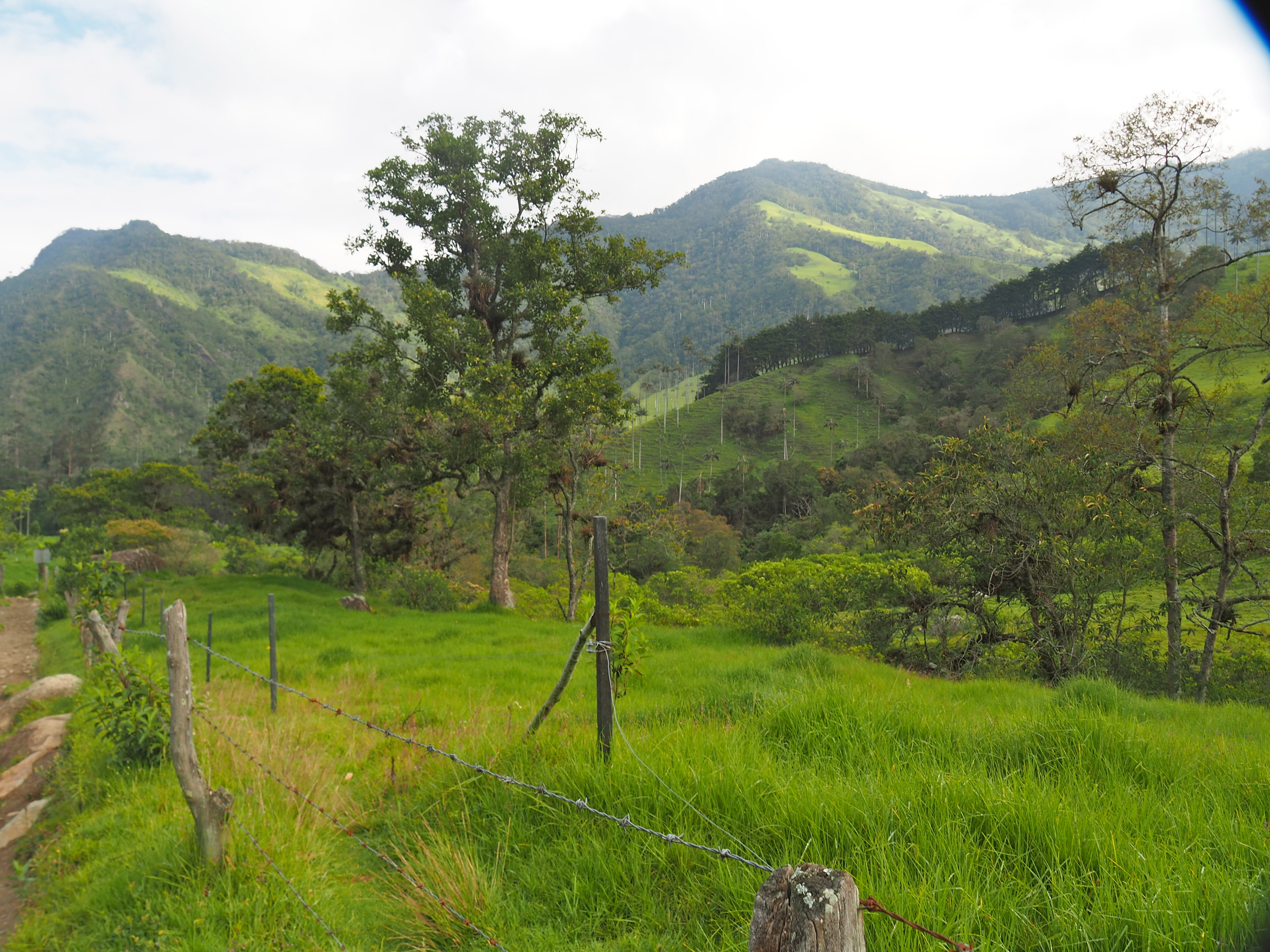
It was pretty damp up there though, and despite not being too steep, the mud made it slippery and we were all concentrating on now falling butt-first into the huge puddles and mud-piles everywhere!
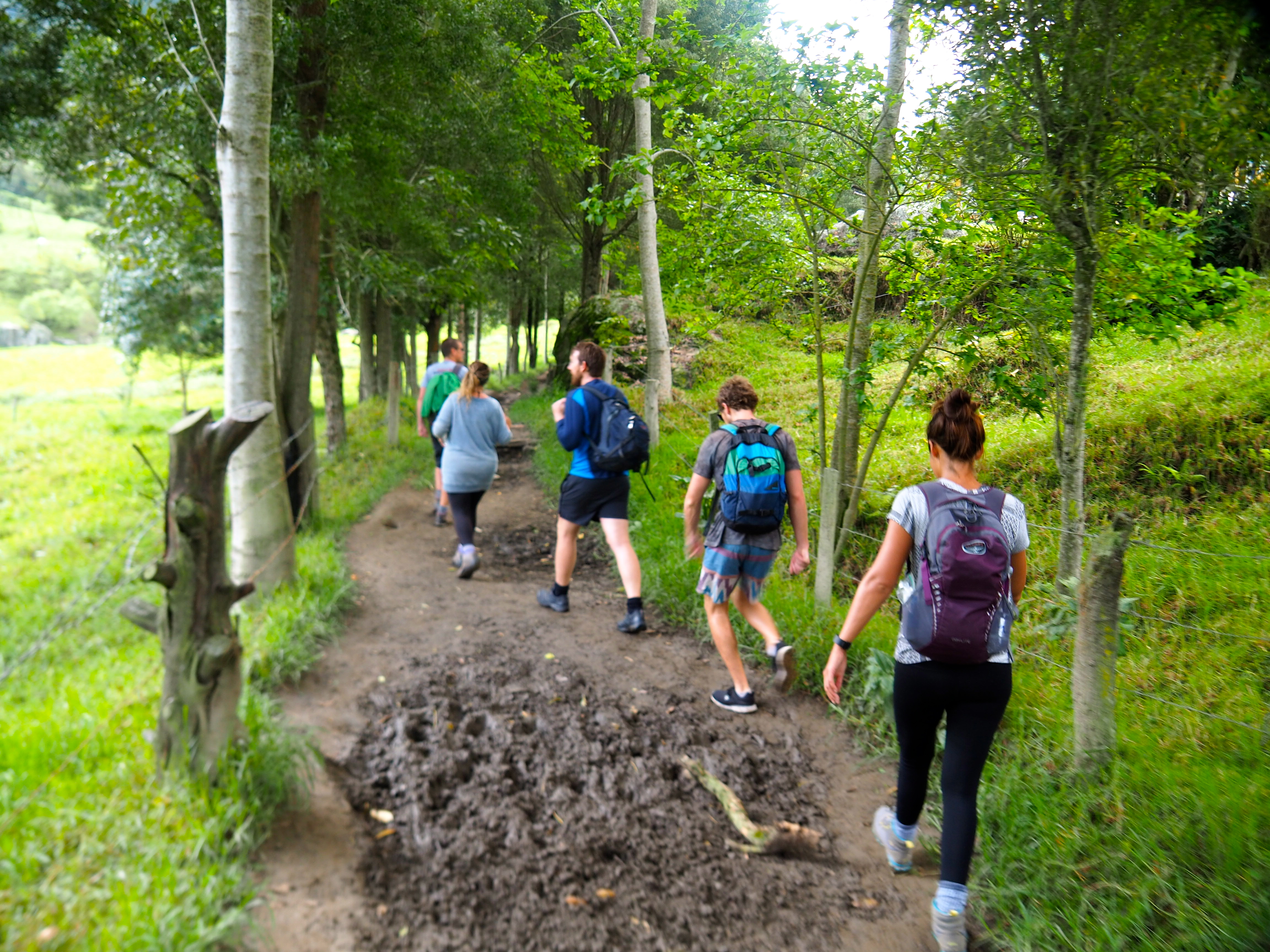
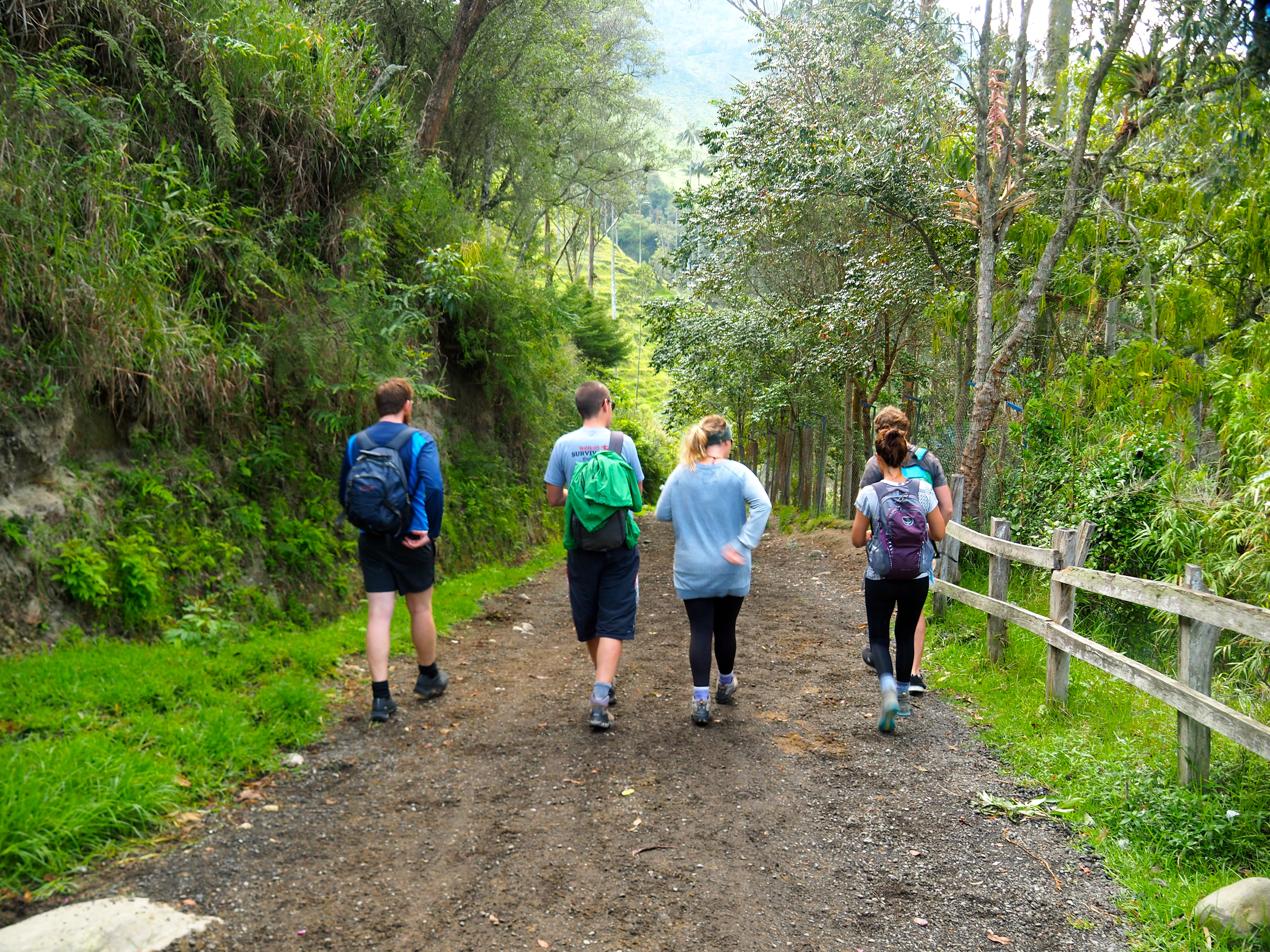
Before too long, we came to the first of our seven bridges, and japers, the instructions were not lying when they said the bridges looked old and homemade and we decided it was probably a good idea to only cross a couple of people at a time.
Max and Dave crossing the first bridge
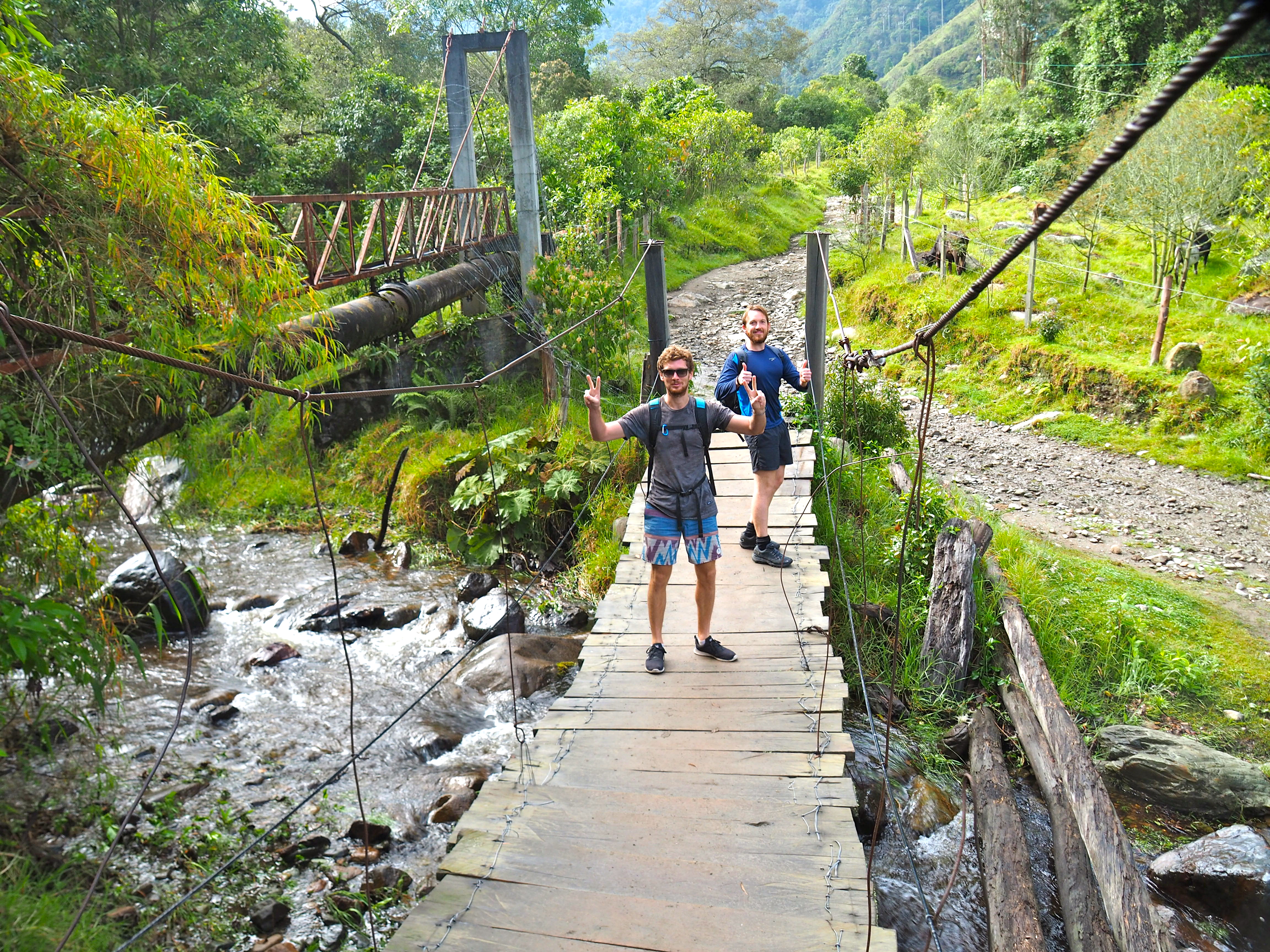
We spent the next two and a half hours hiking up the side of the valley as we scrambled up rocky paths; tempted fate by crossing six more bridges (some honestly looked like they were held together by wire coat hangers!); and soaking in the beauty and tranquility that was all around us.
The river was bubbling along and the sound of it, not to mention the sight of it, was enough to motivate us all to keep a pretty good pace up – even if we did stop a million times to snap some more pics and take in the crazy beautiful scenery around us.
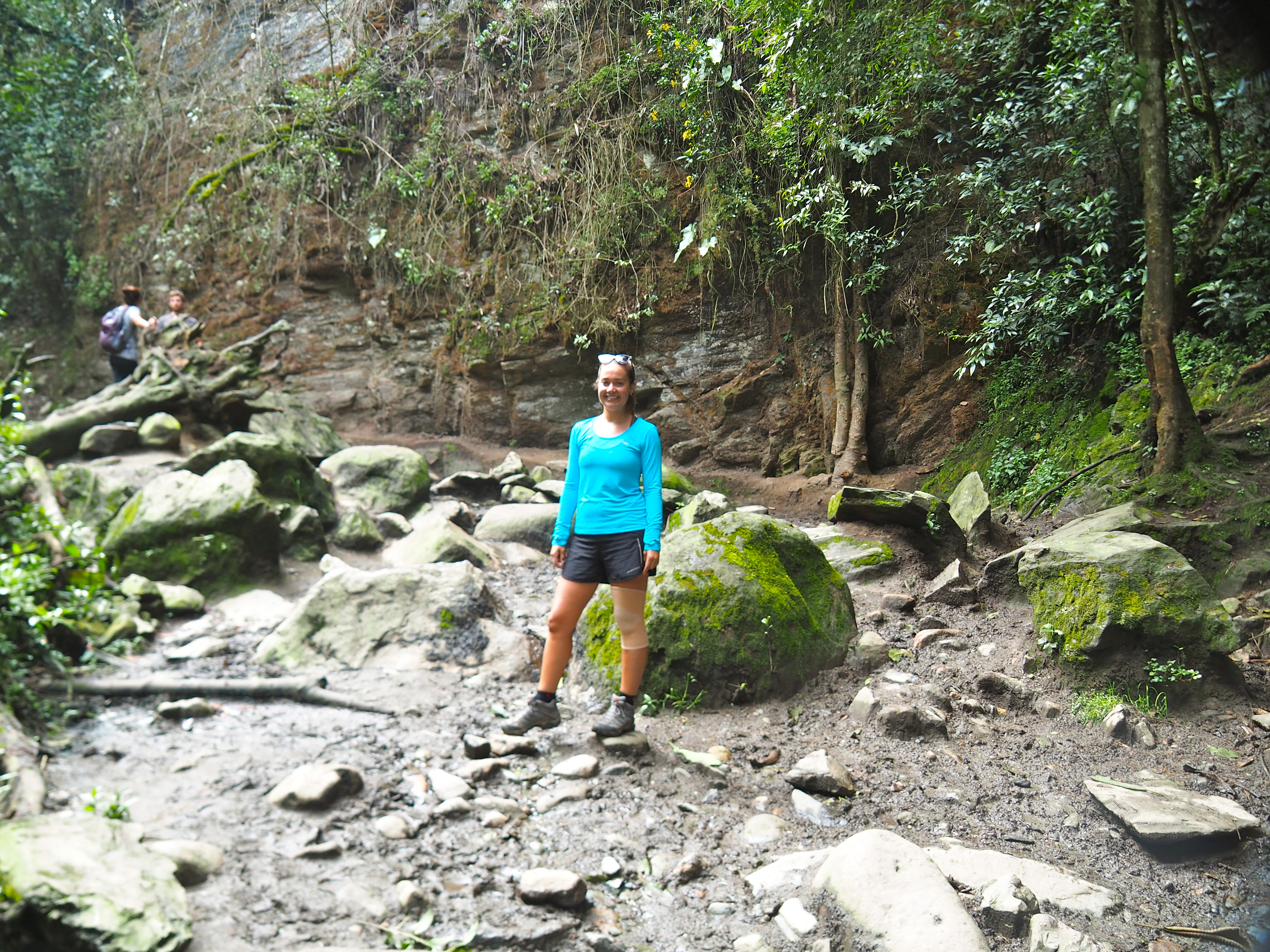
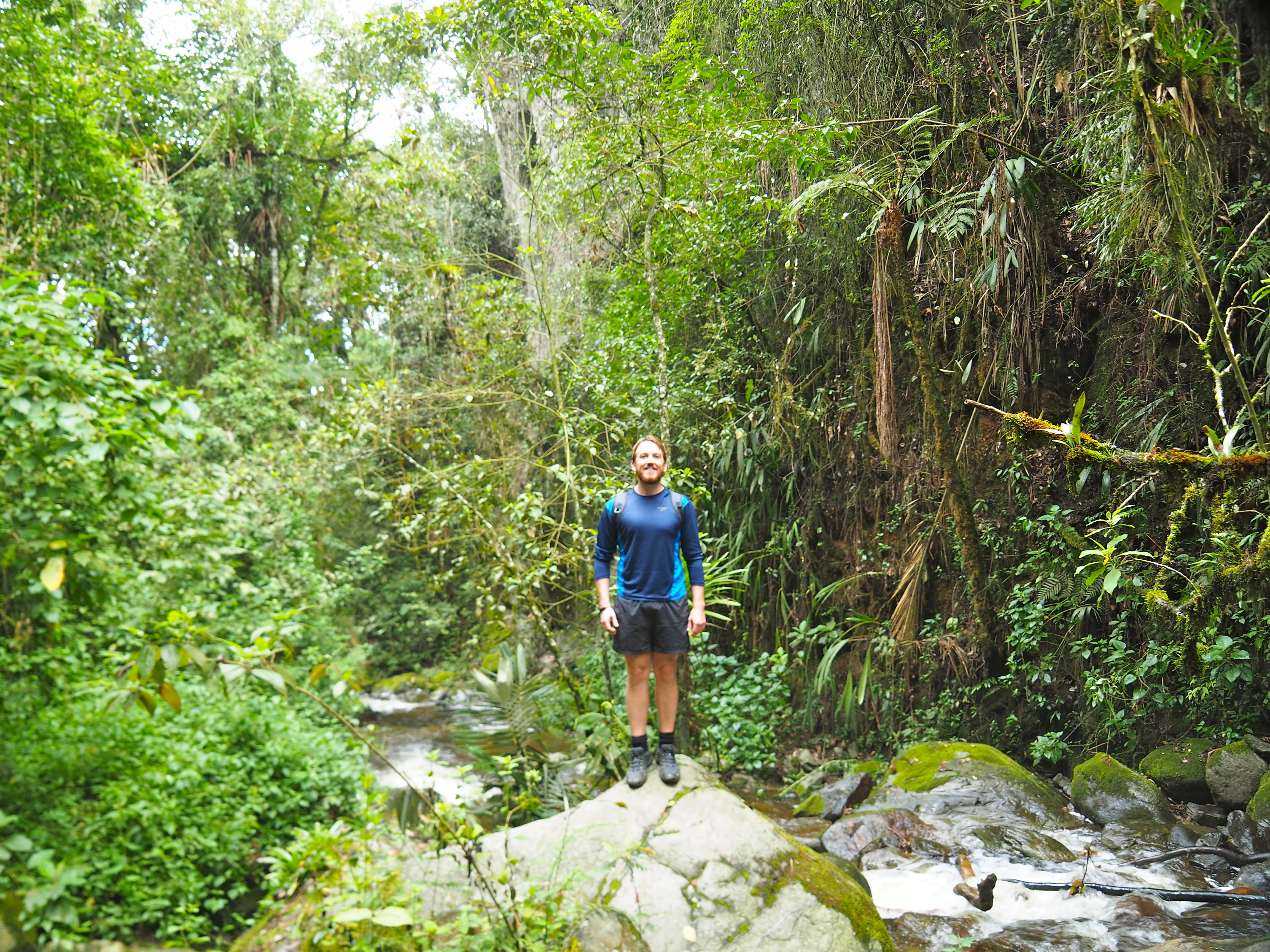
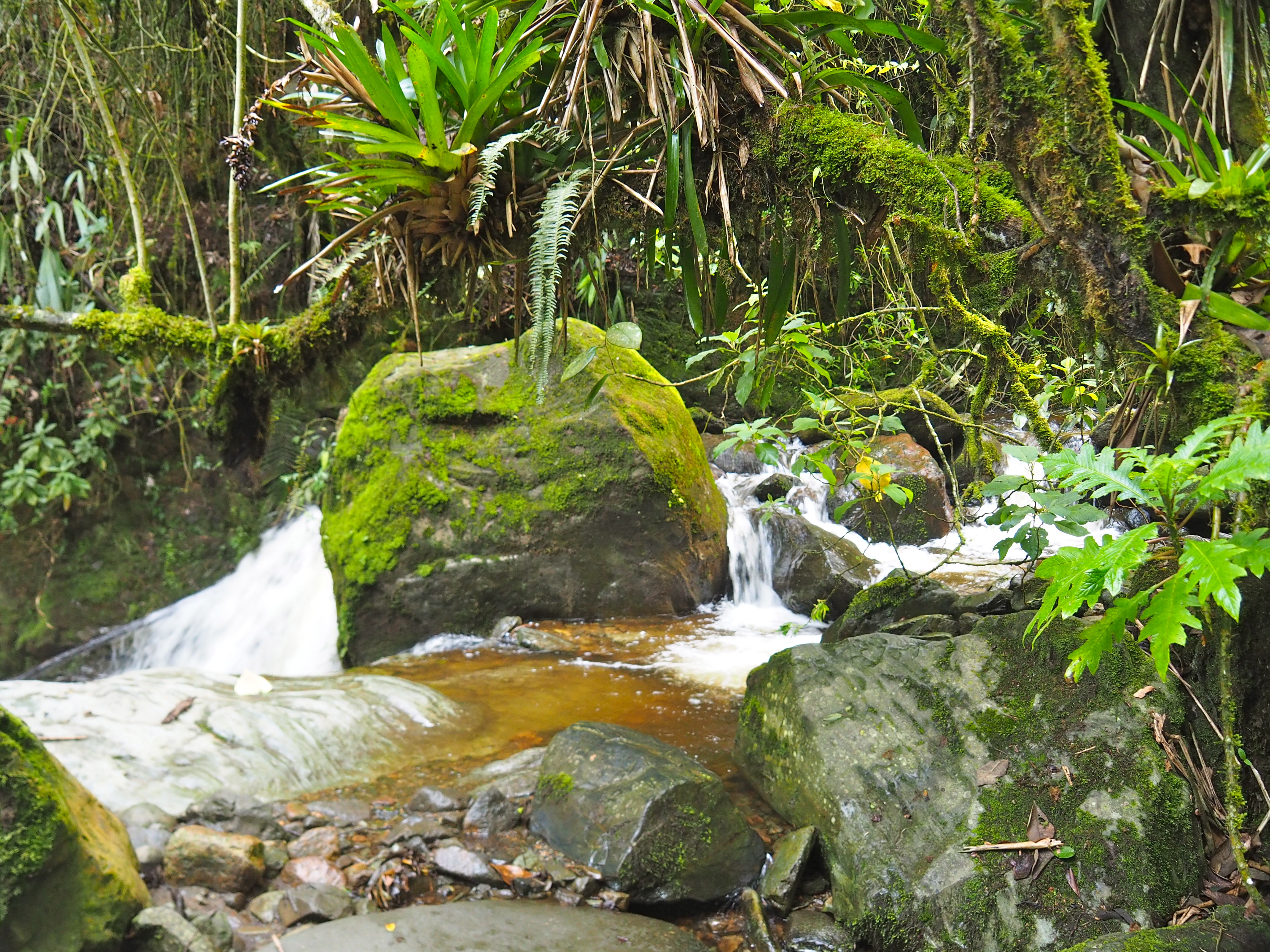
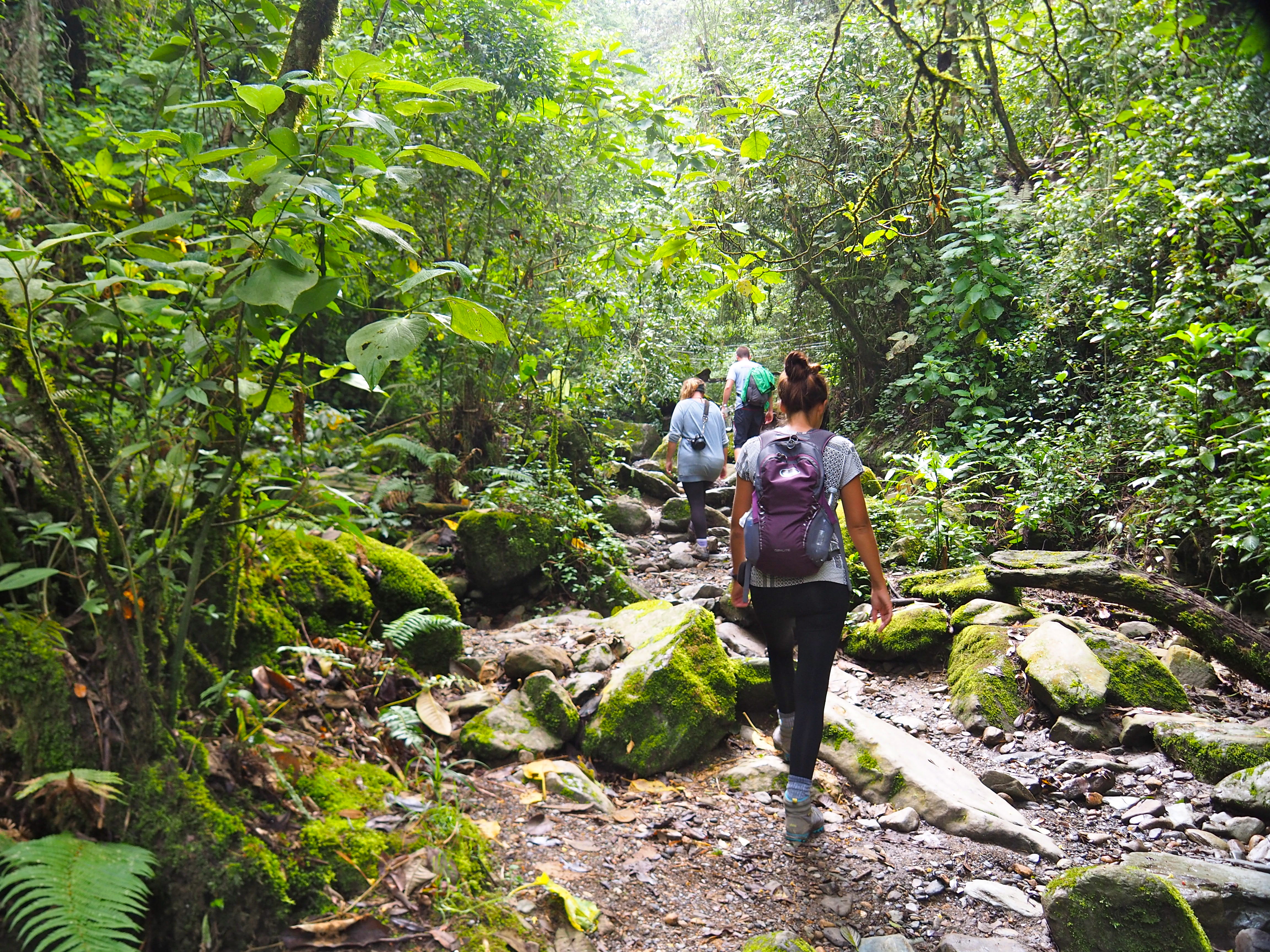
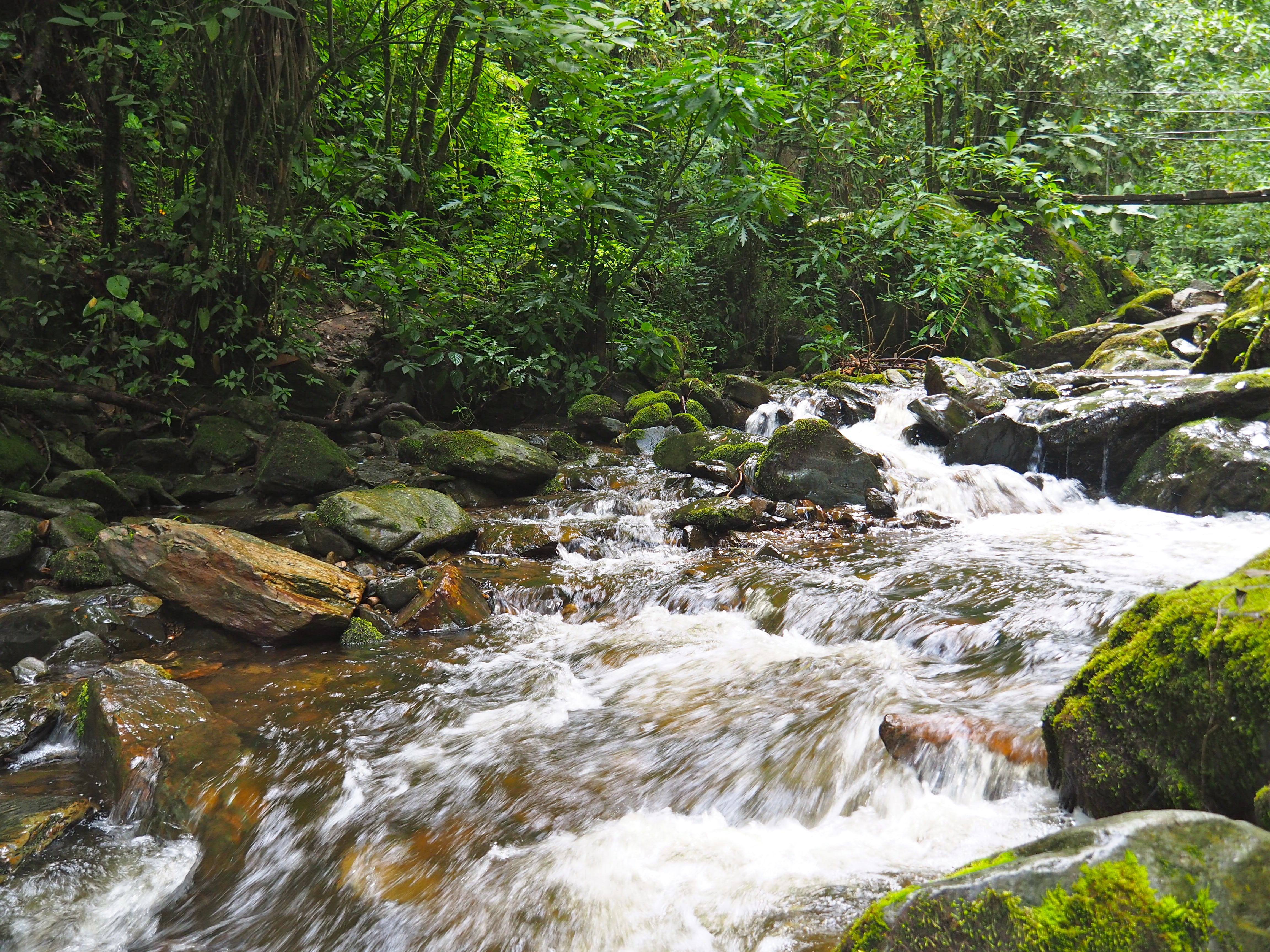
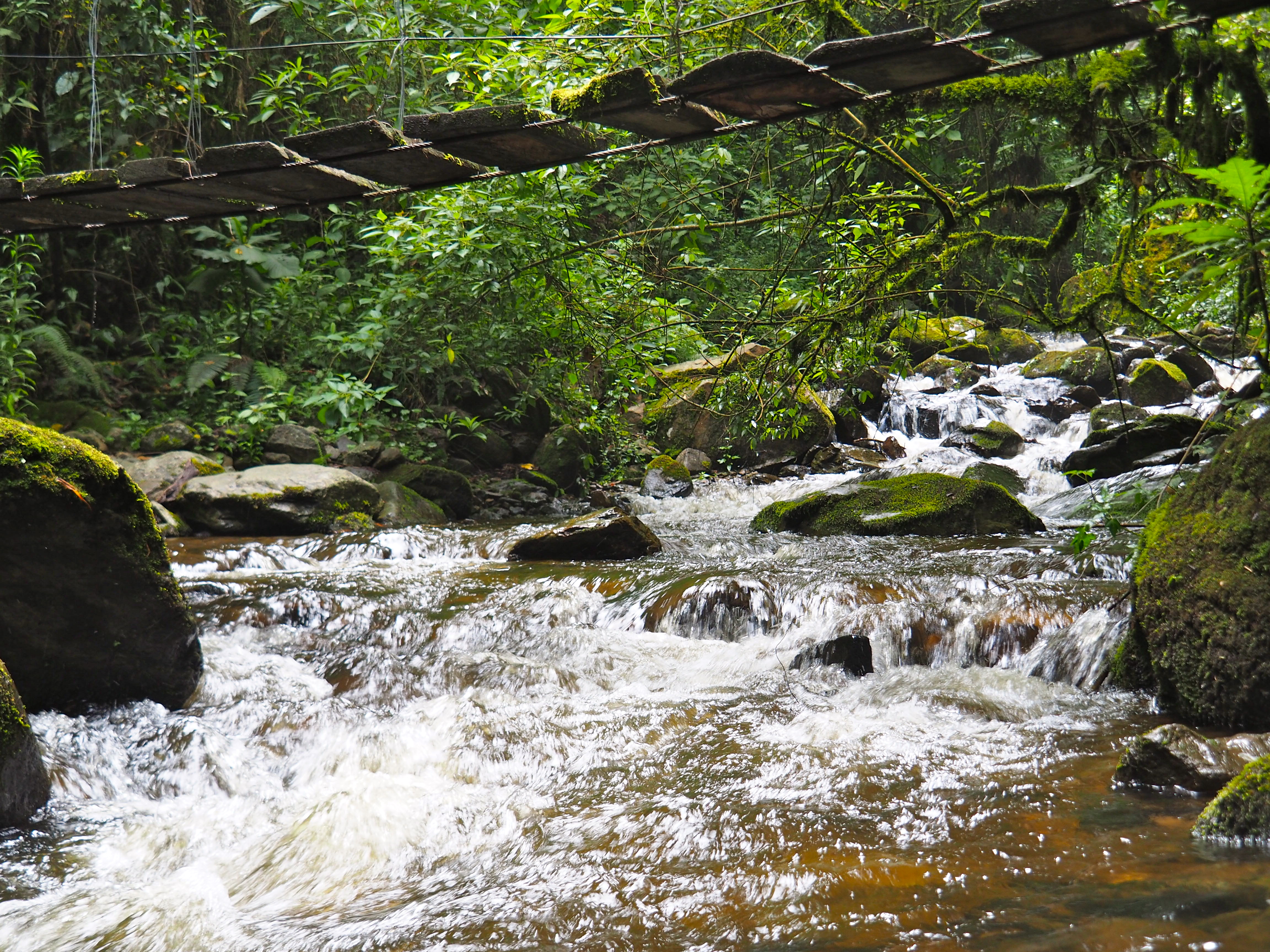
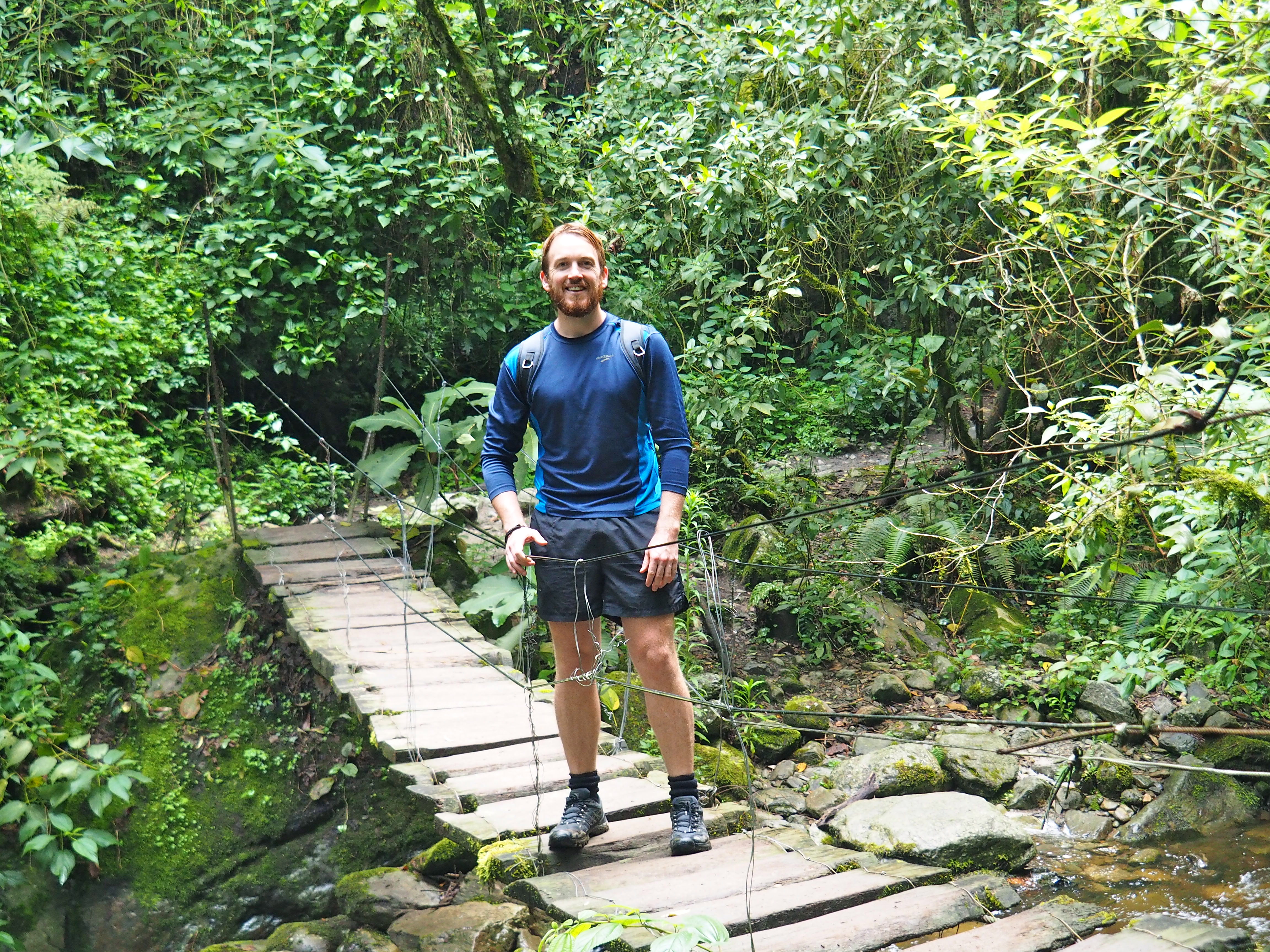
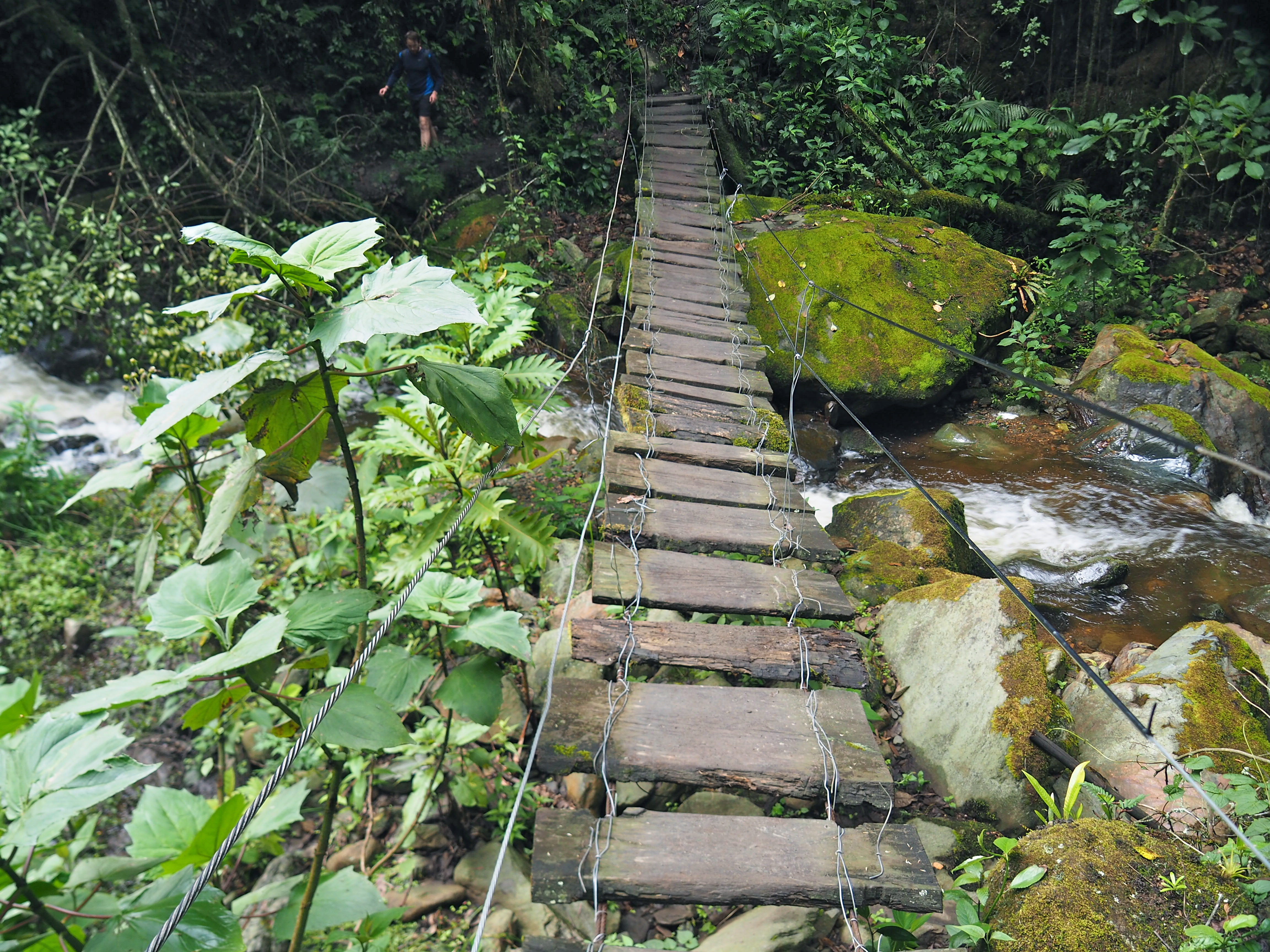
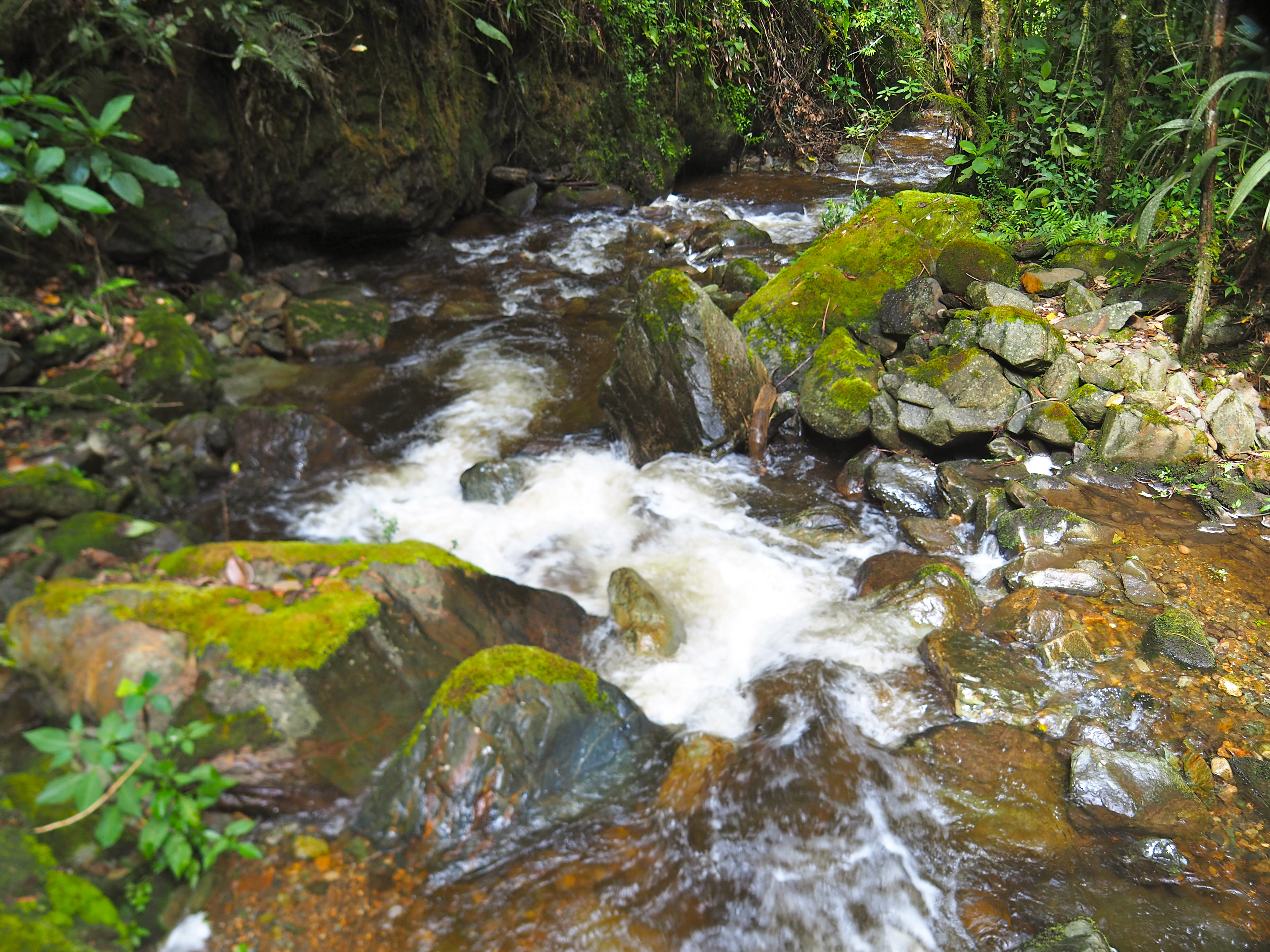
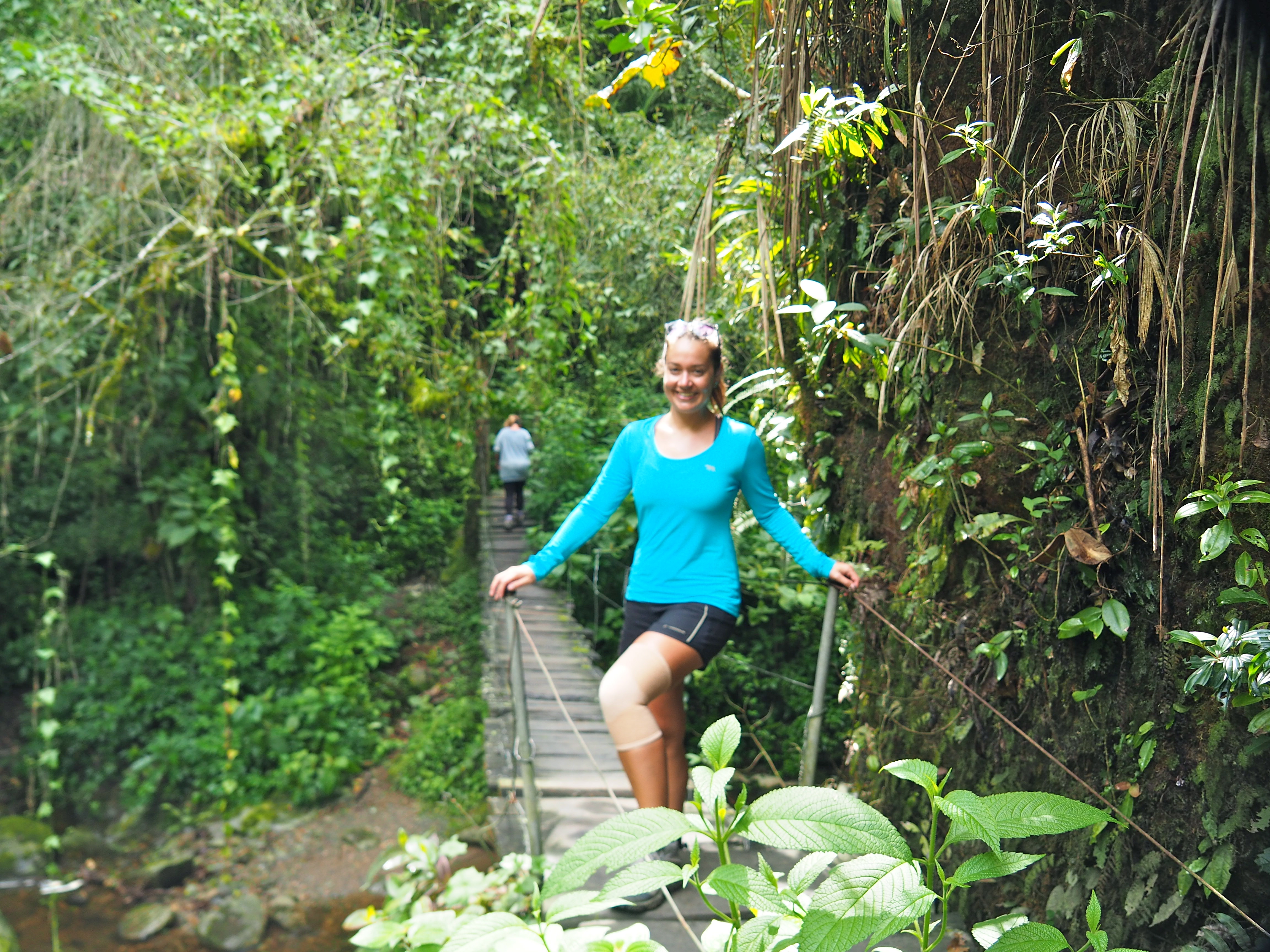
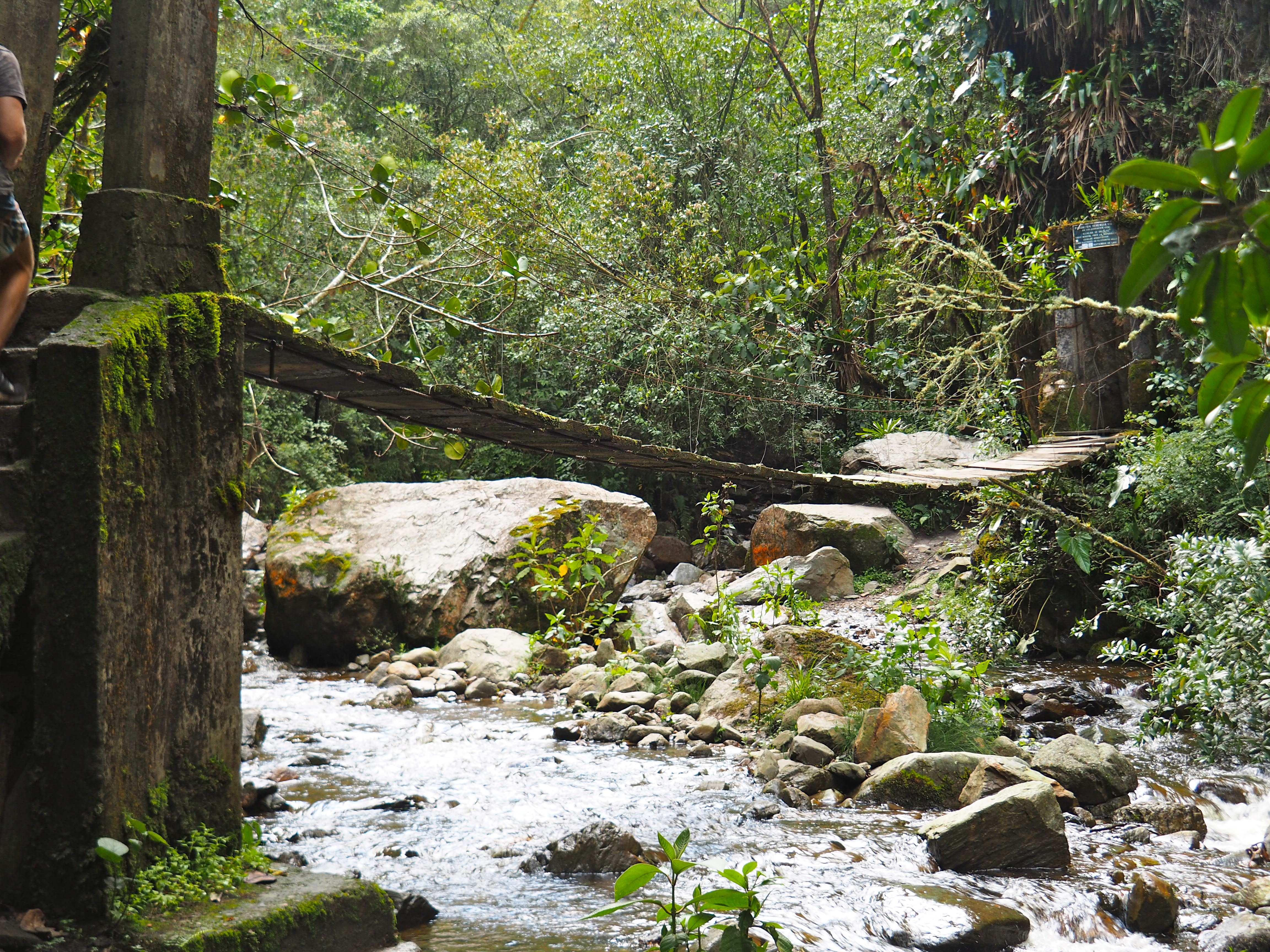
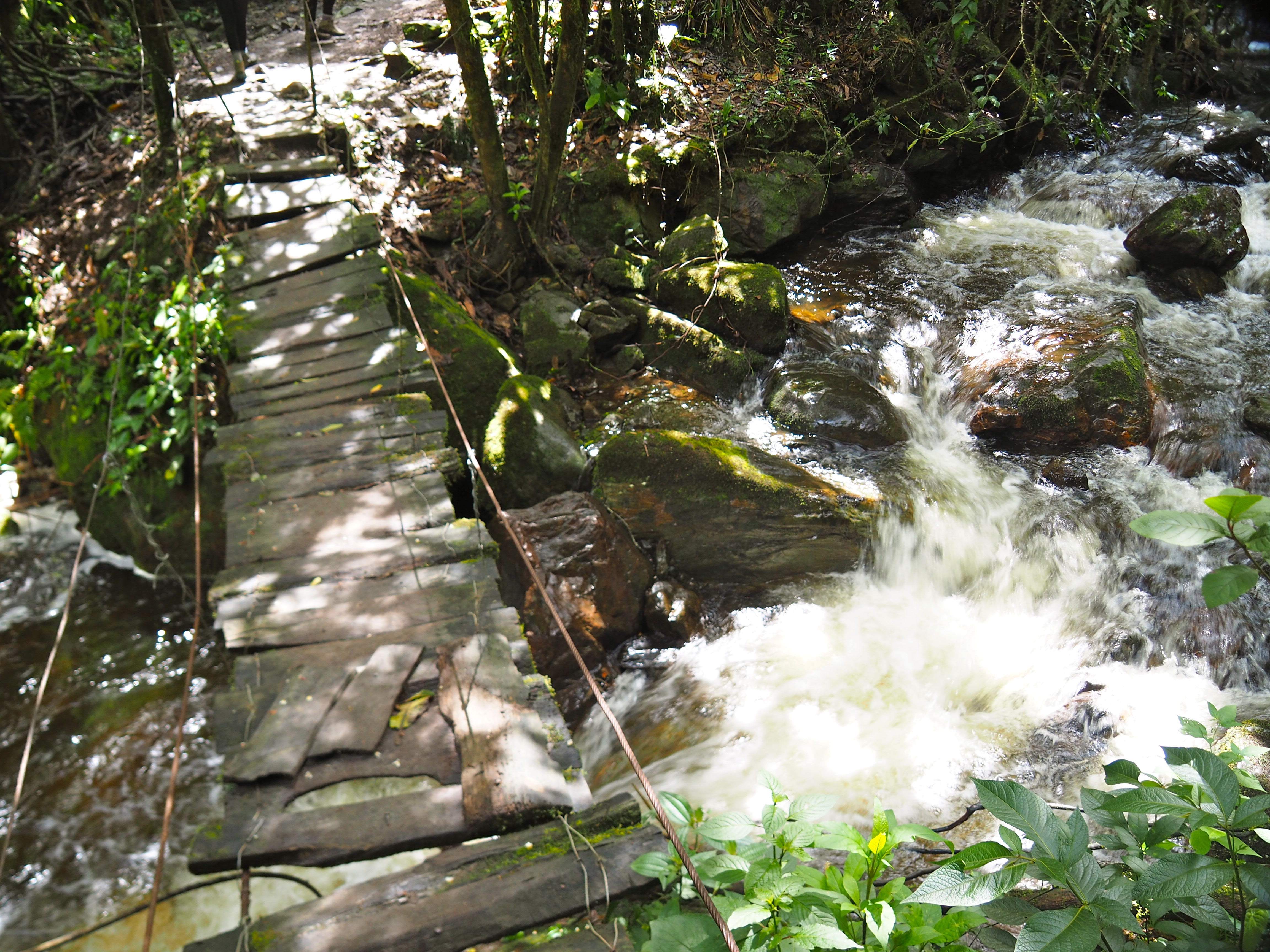
Me attempting a yoga move as we crossed the river on a log… not sure about my form, but I love the look on Mel’s face!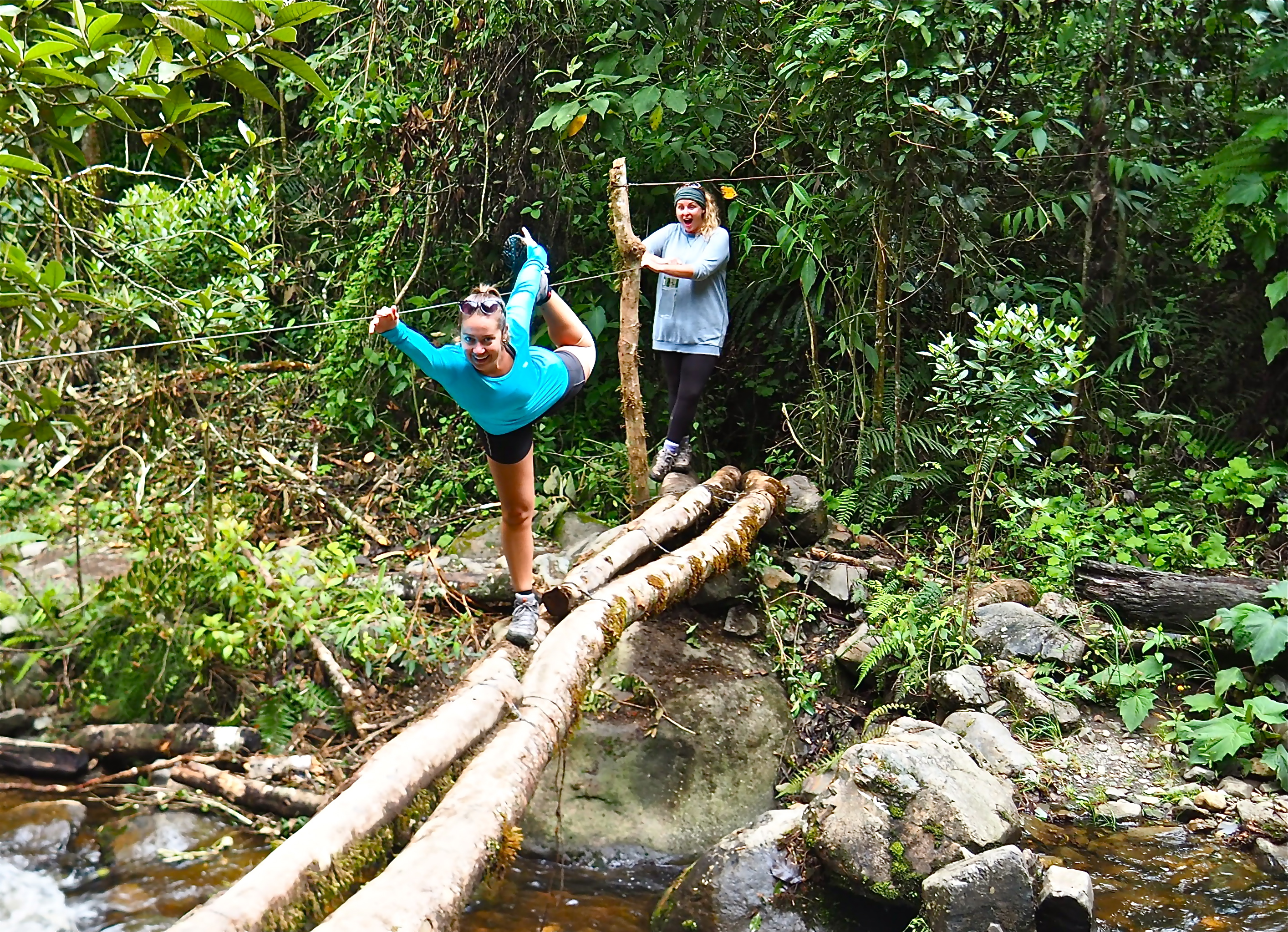
About half way through the hike, there is the opportunity to take a small detour up to Las Casa de Colibri, the Home of the Hummingbirds. We had all heard that the opportunity to photograph these stunning, fast-as-lightning, little birds was not one to be missed so were happy to make the detour. Photos further down.
After our 90 minute detour (including a bowl of hot lentil soup and a hot chocolate – anything to combat the cold you suddenly felt as soon as you stopped hiking!), we rejoined the main hiking path and continued up a mostly uphill route.
The climbs were noticeably more difficult and much steeper than the first half, and more breaks were had as we kept the stories and laughs going as we continued the hike.
Max and Nat smashing us in the uphill climb
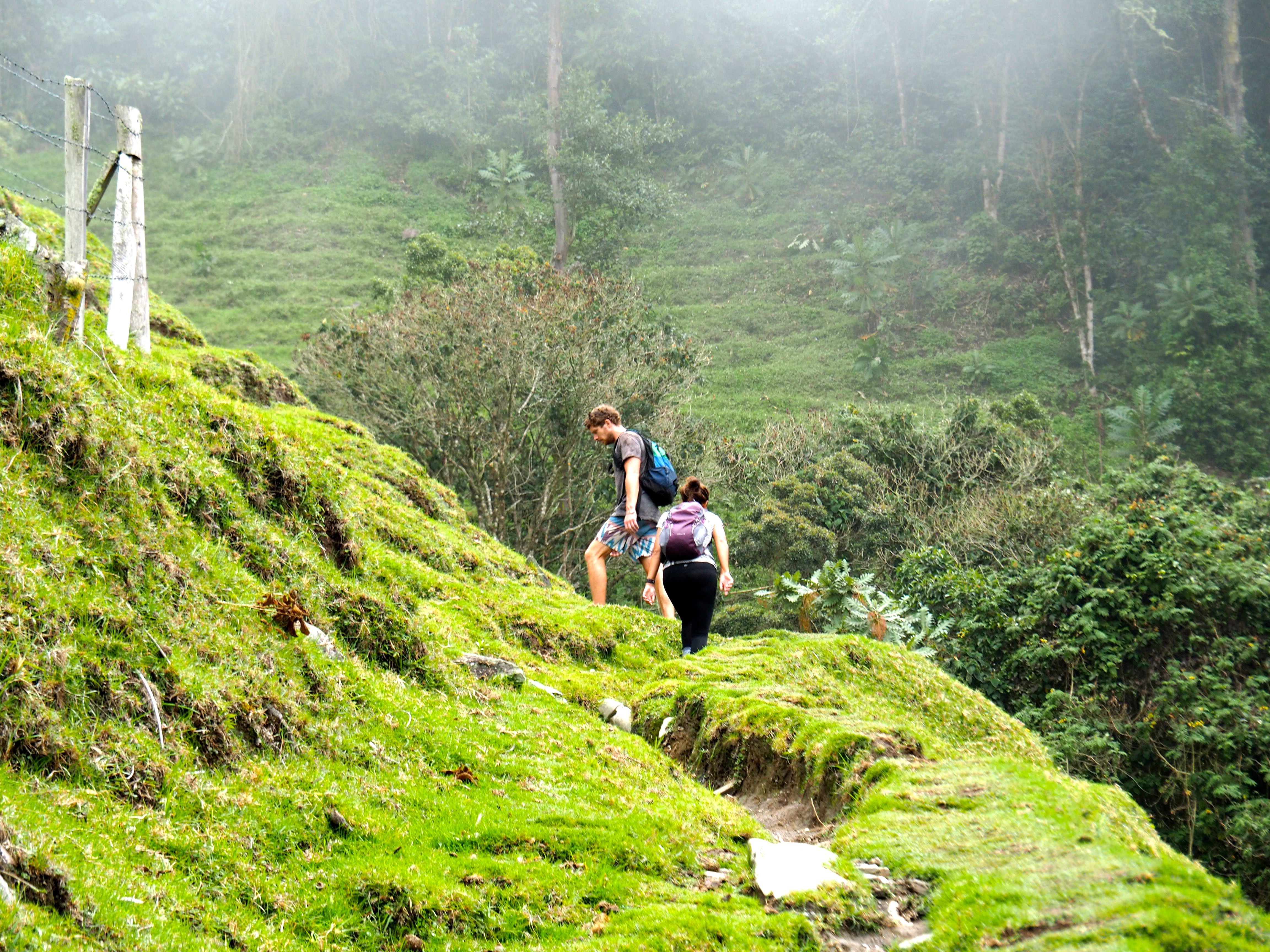
Having a quick break
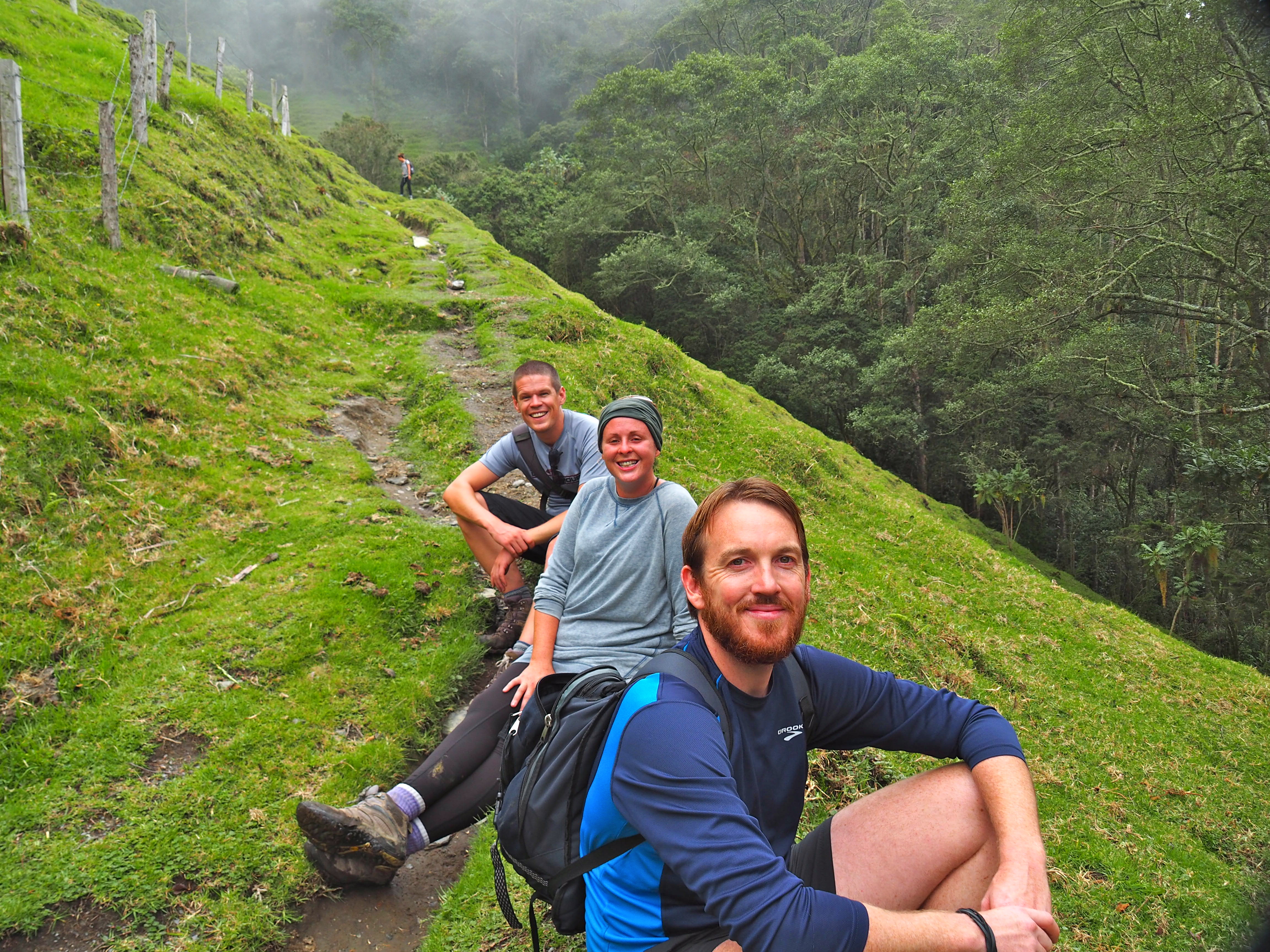
The little hobbit path up the steep hill
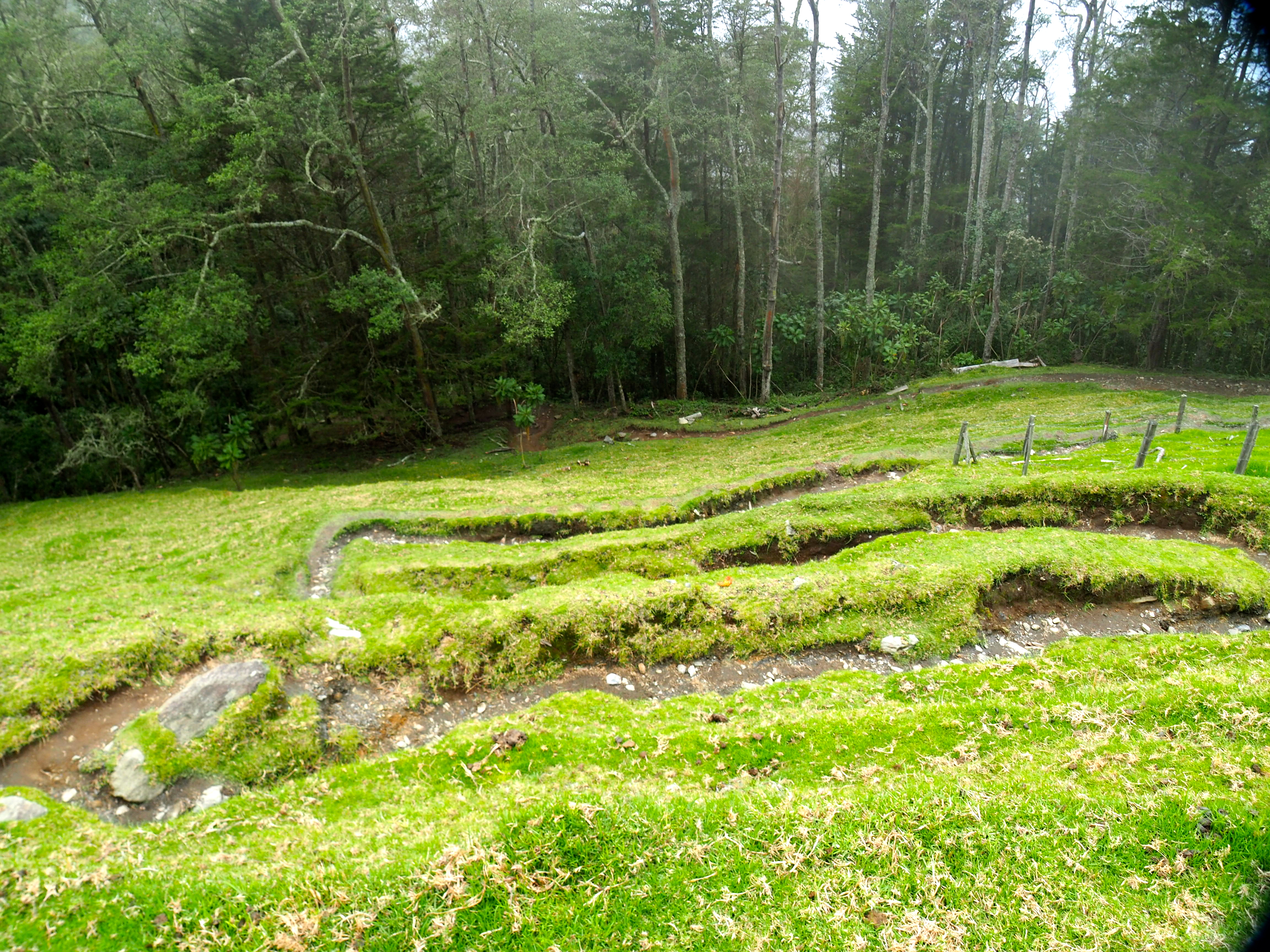
Some relief awaited us at the top of the hill with
beautiful gardens and a great view
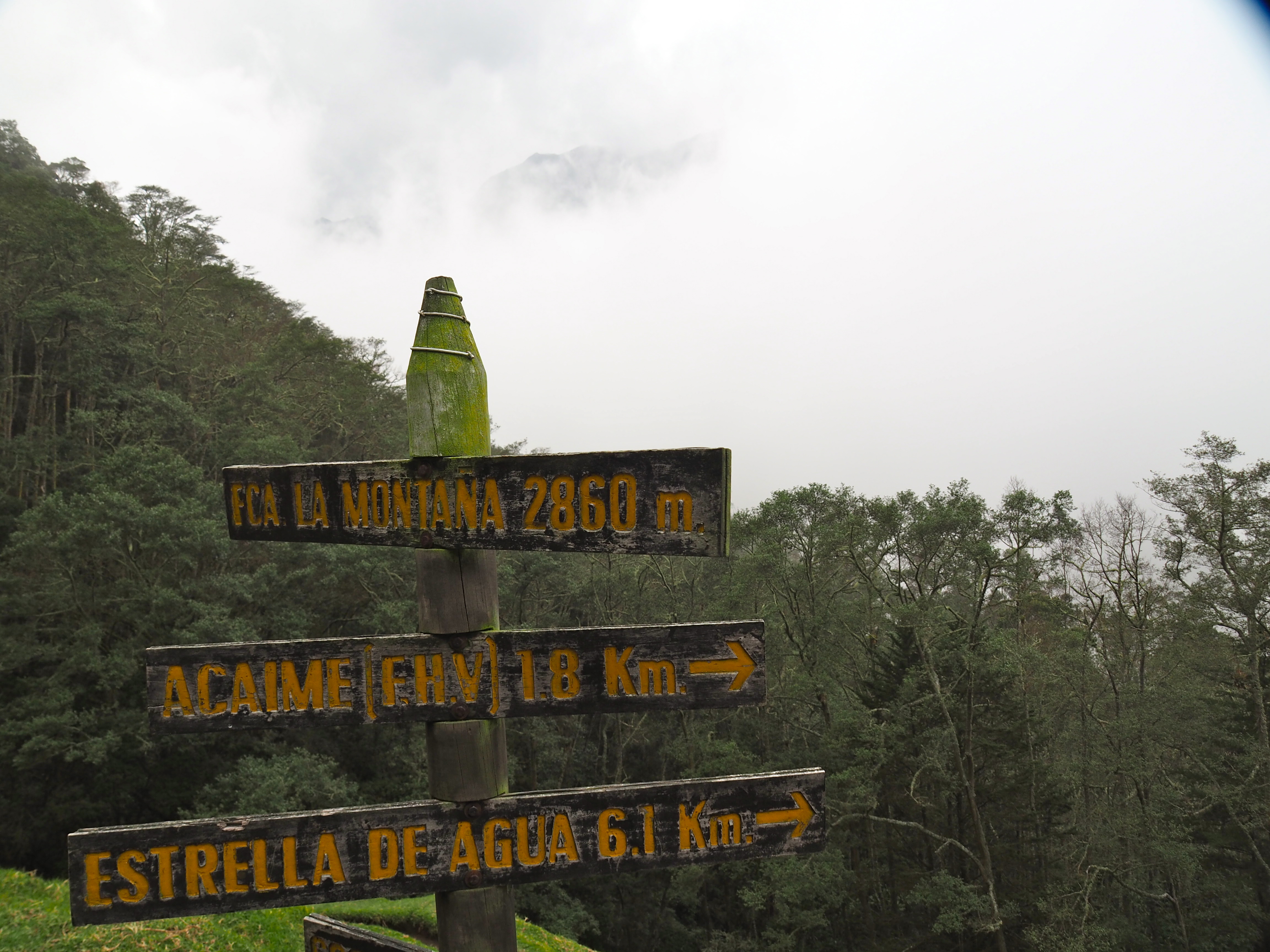
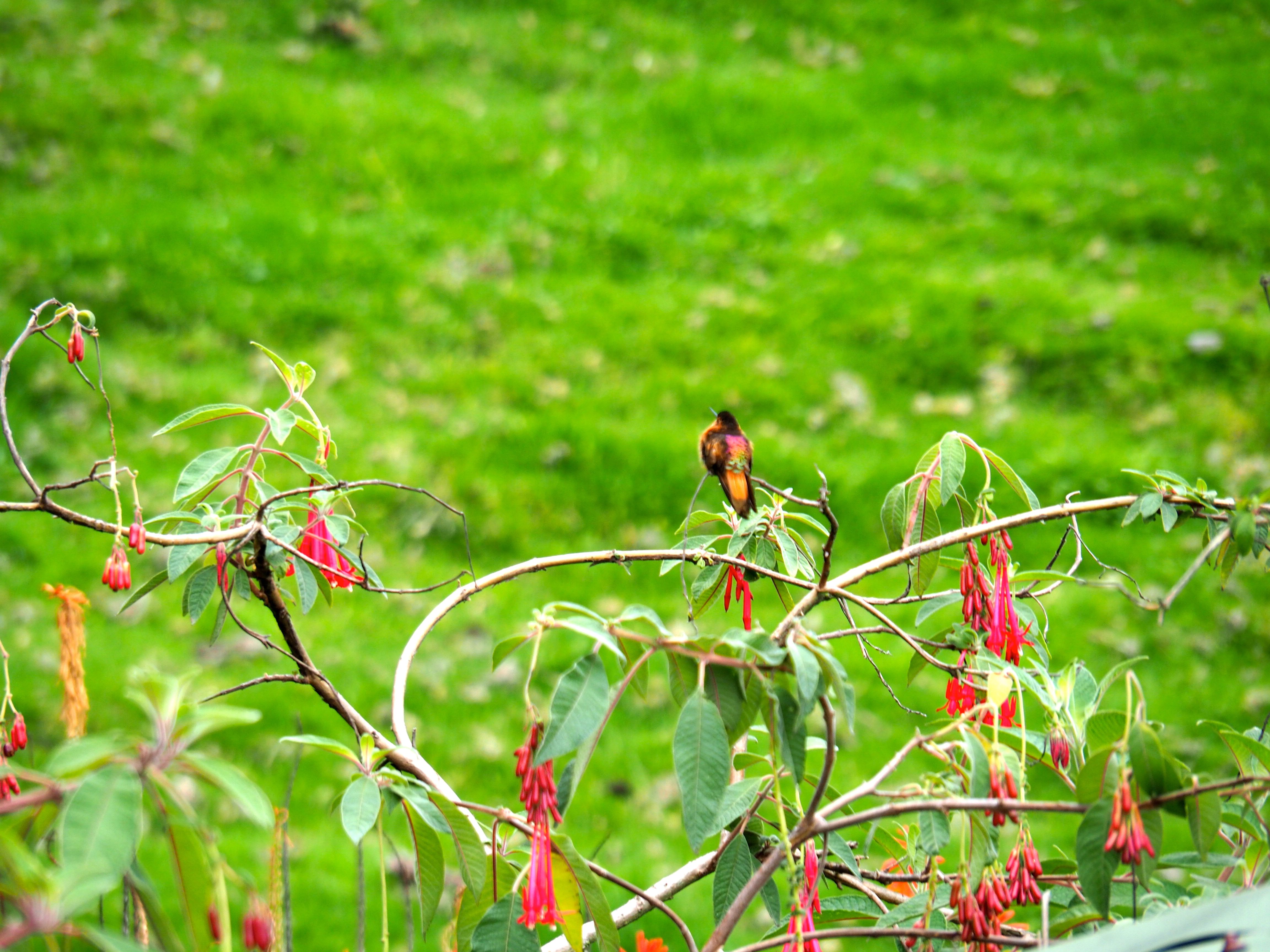
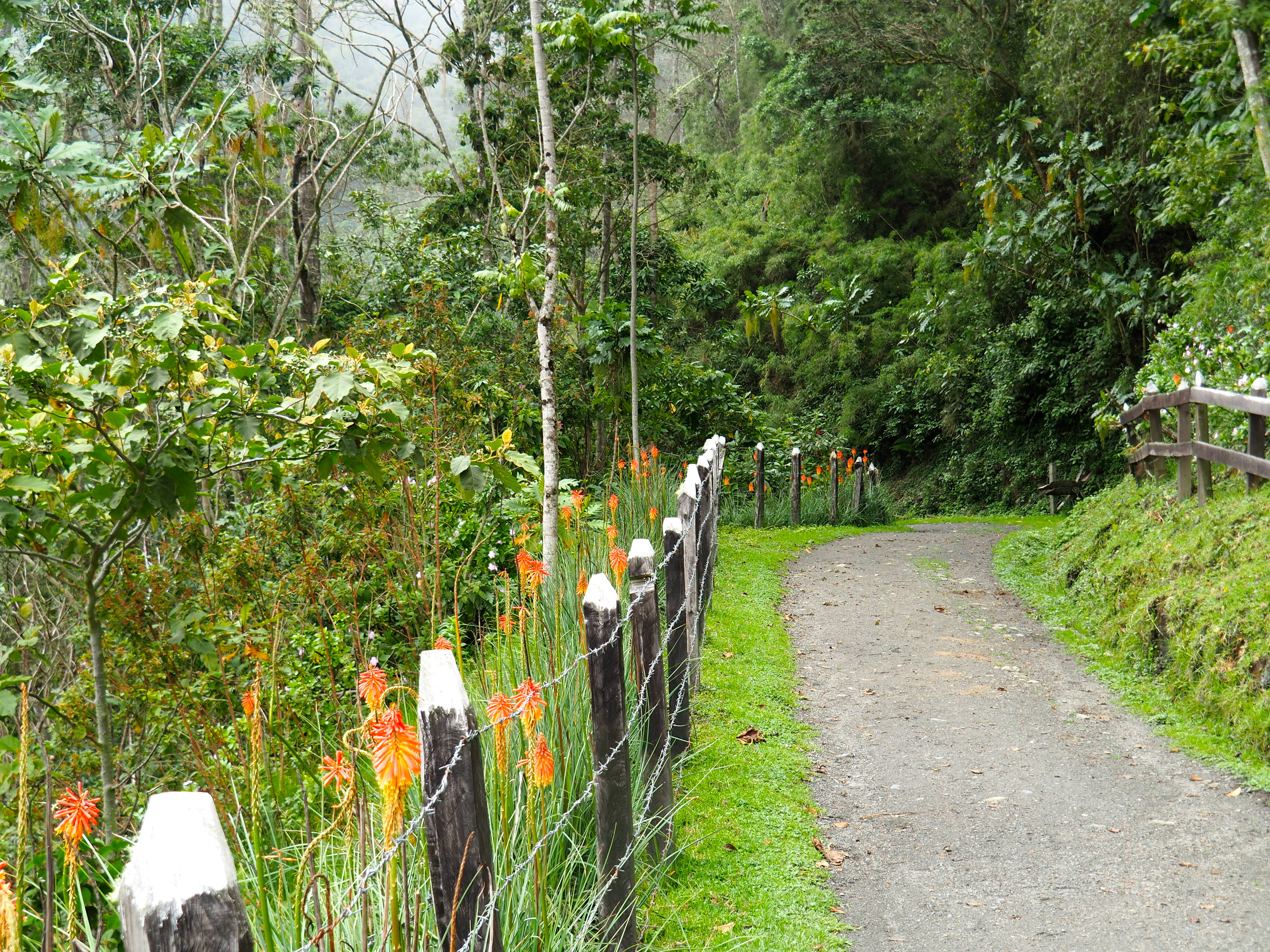
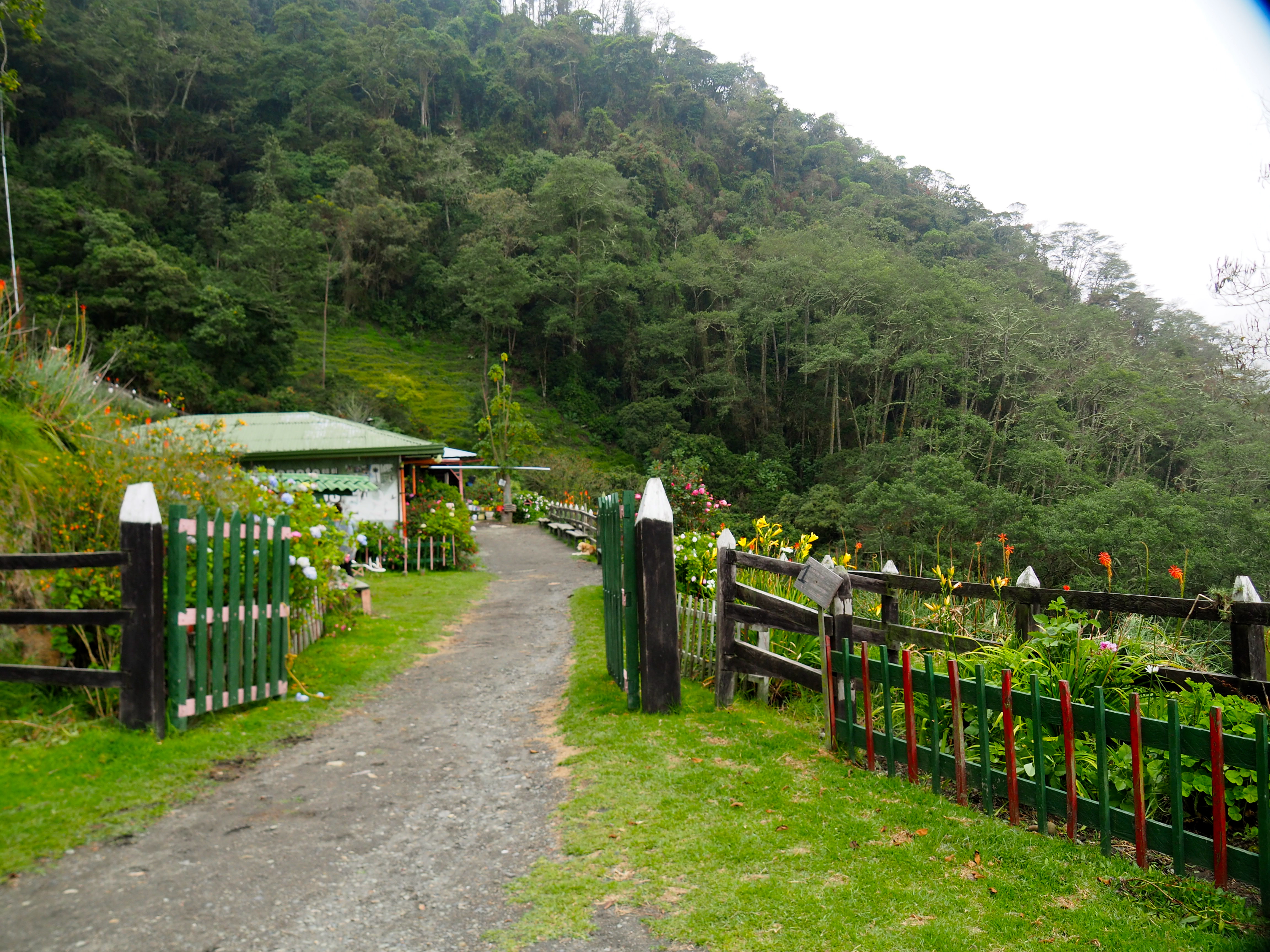
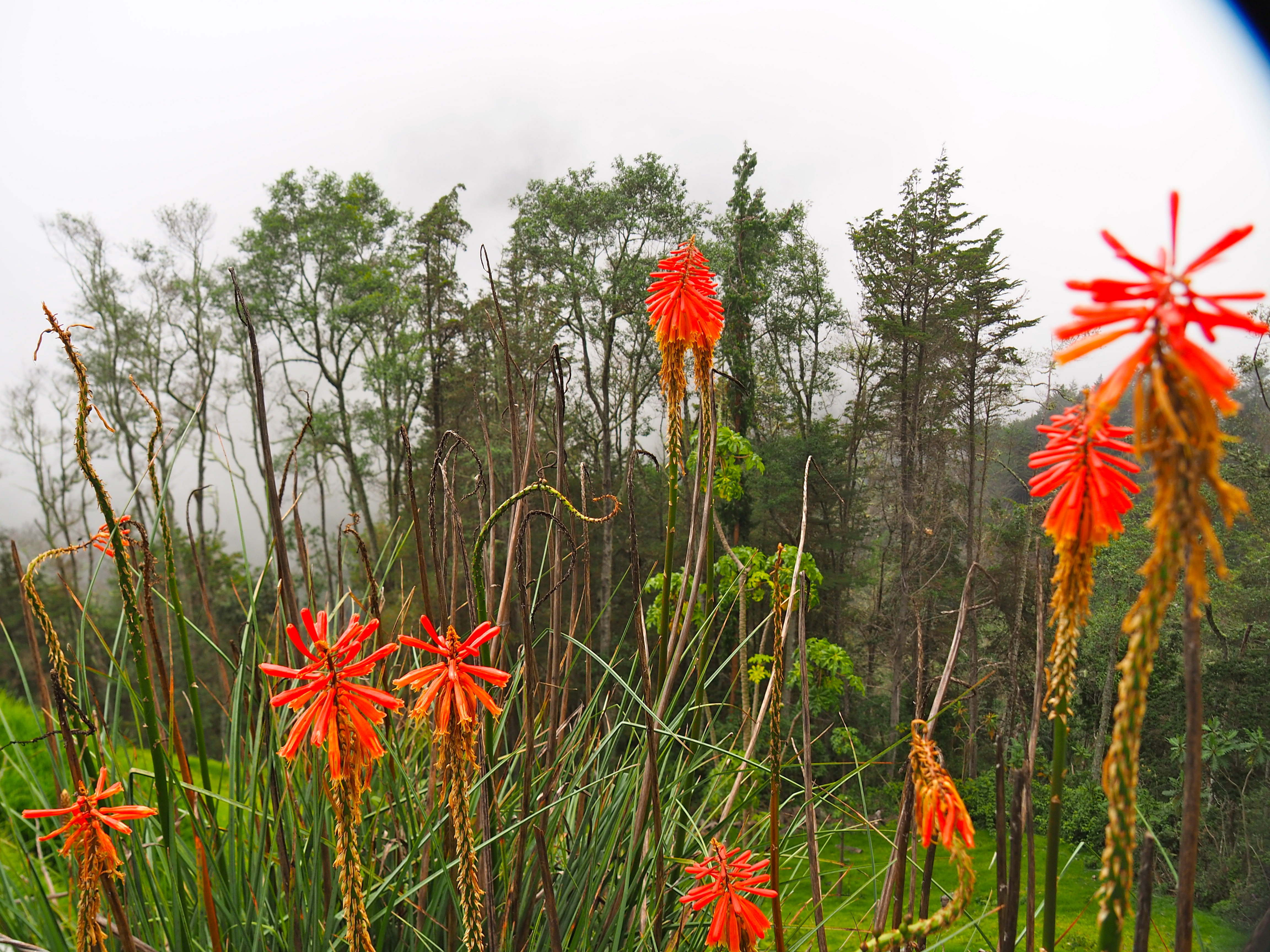
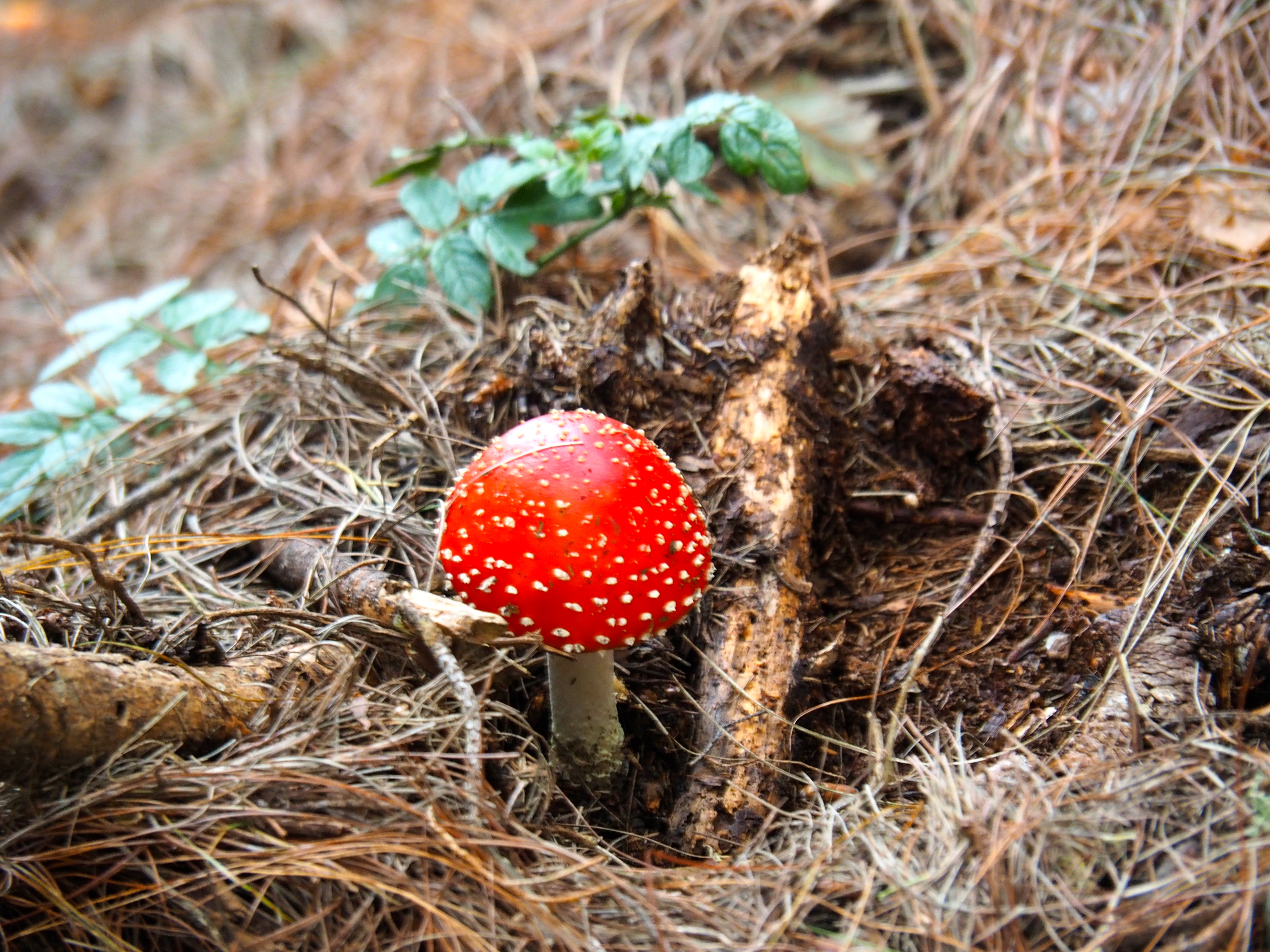
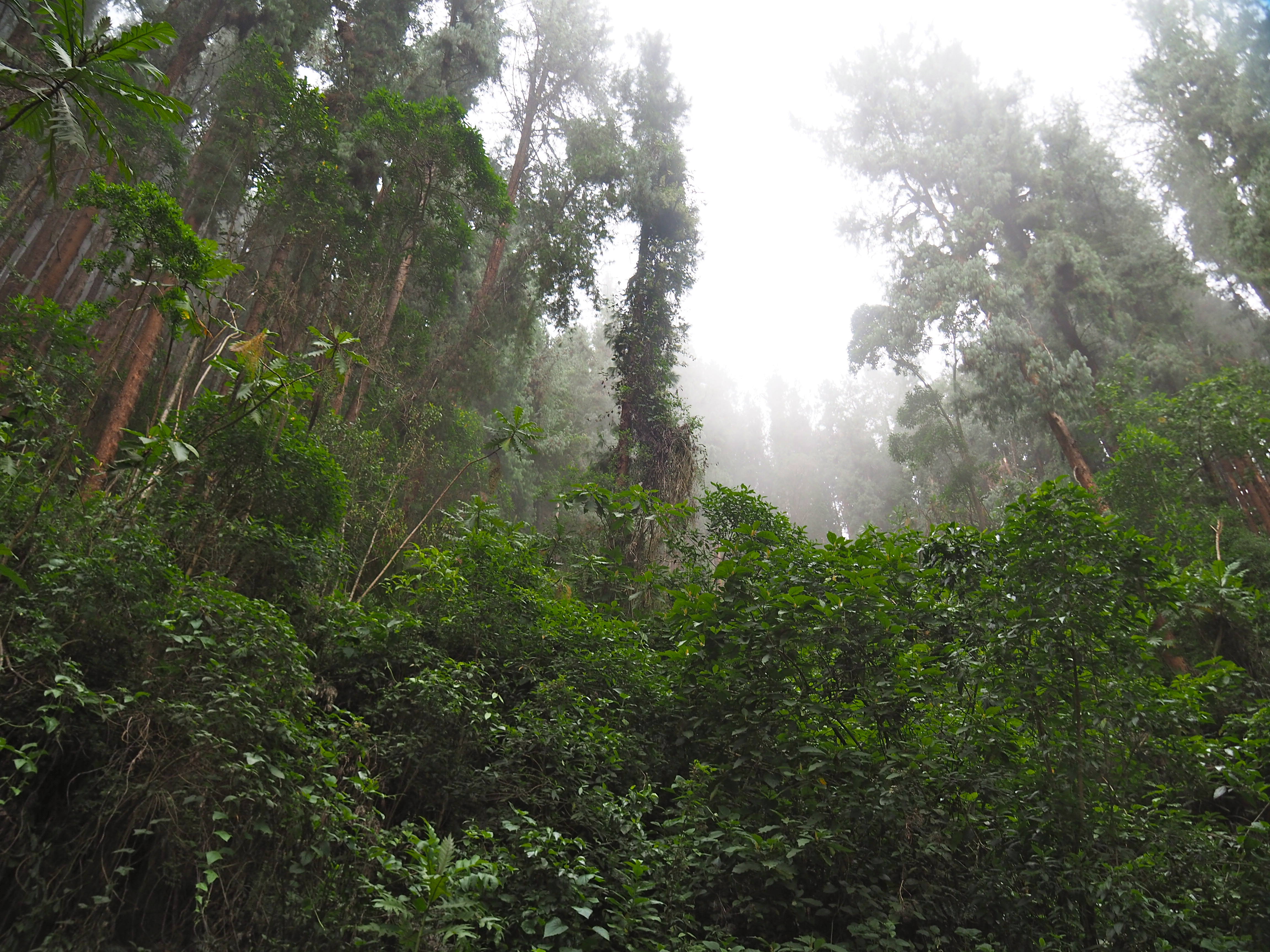
After about another forty minutes or so of hiking (and noticing the clouds getting more and more misty around us), we finally reached our goal – the stunning cloud forests of the Valle de Cocora. Cocora are super tall (up to 60 metres tall) wax palms and seeing their tall trunks silhouetted against the misty clouds was a sight to see.
It was quite cold at the top of the mountain and the mist was quite deep so at some points we couldn’t see more than about 50 metres off the side of the mountain. As the mist came and went, we got better views and could see how far we had actually walked.
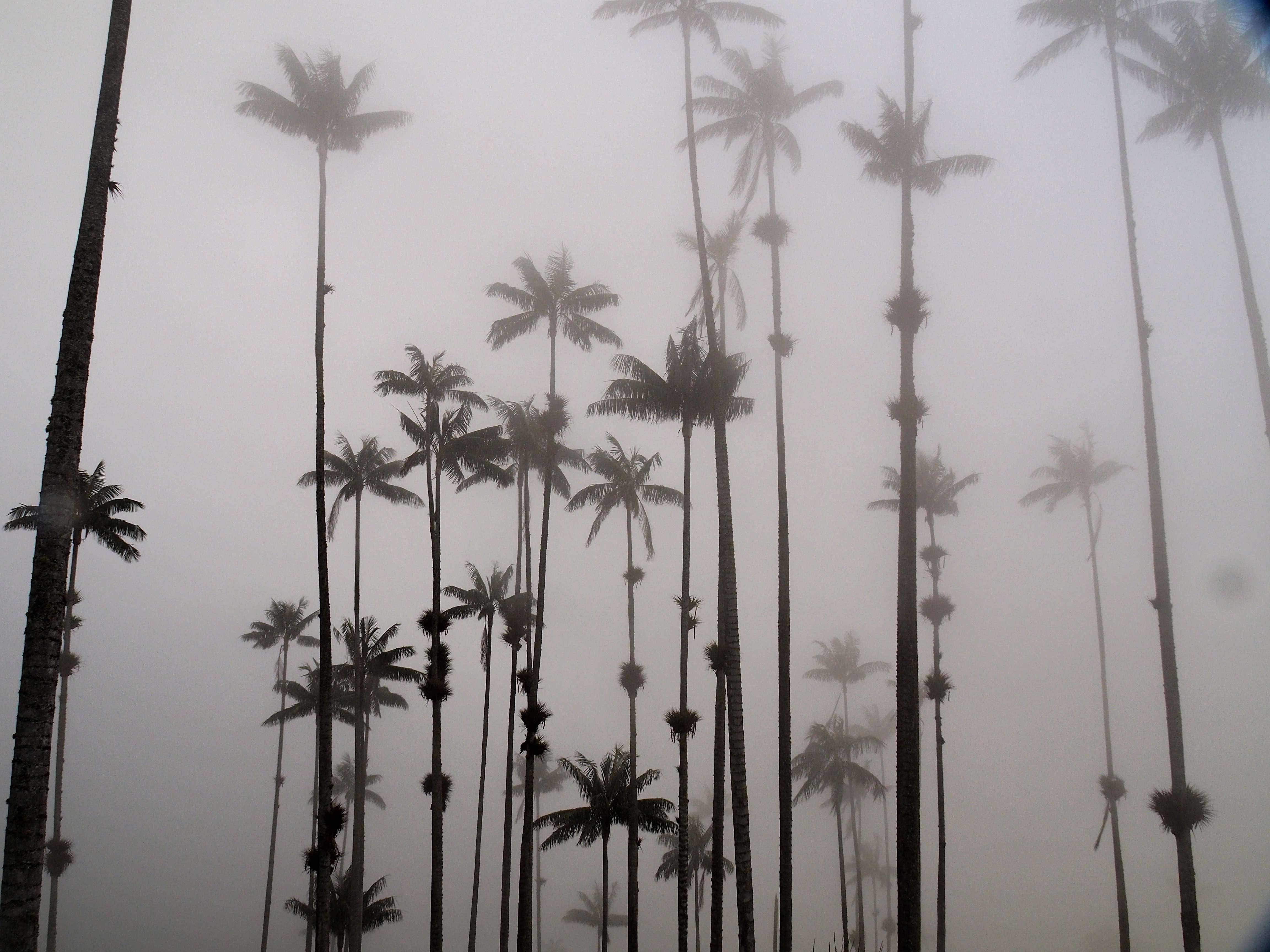
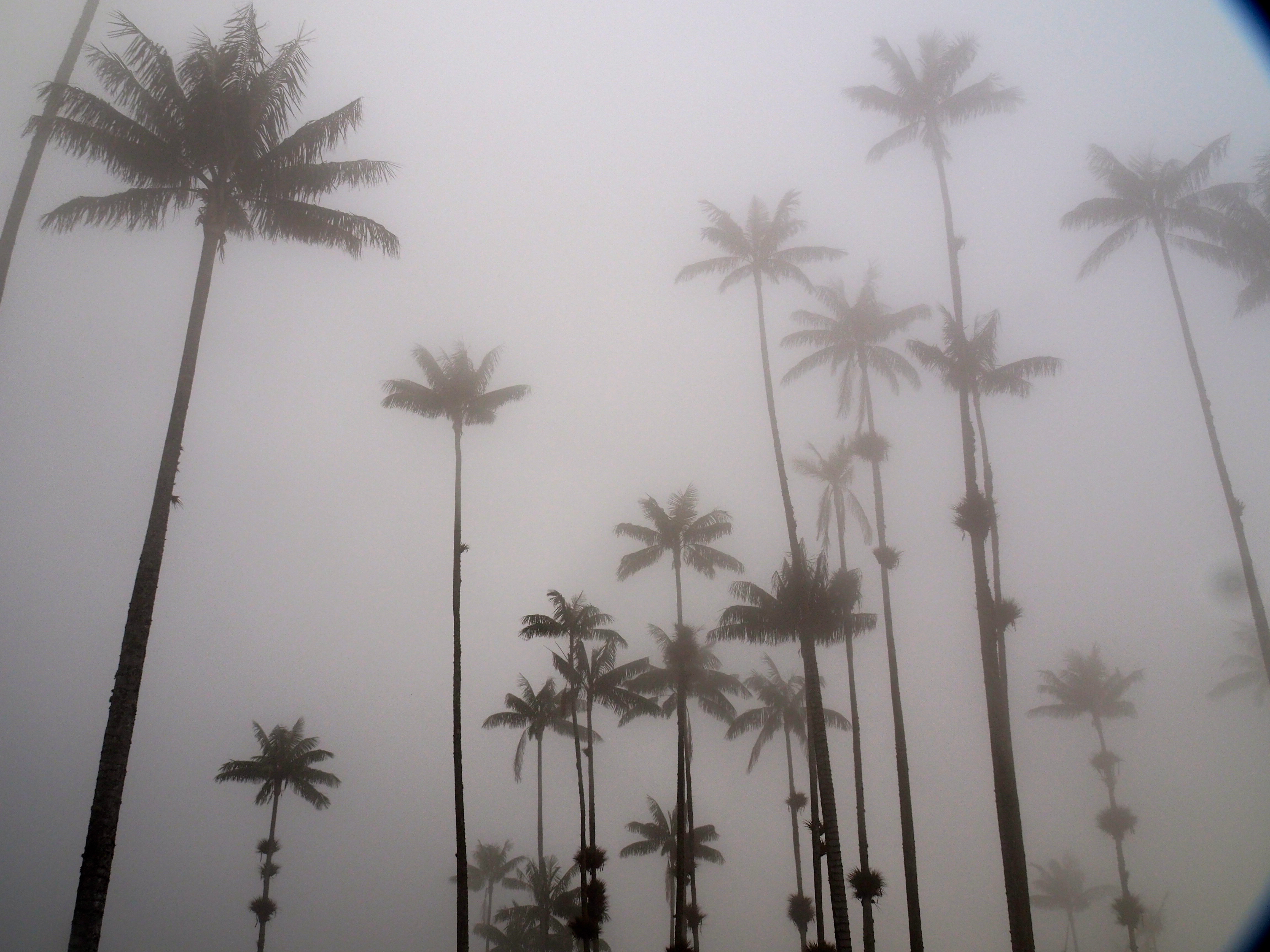
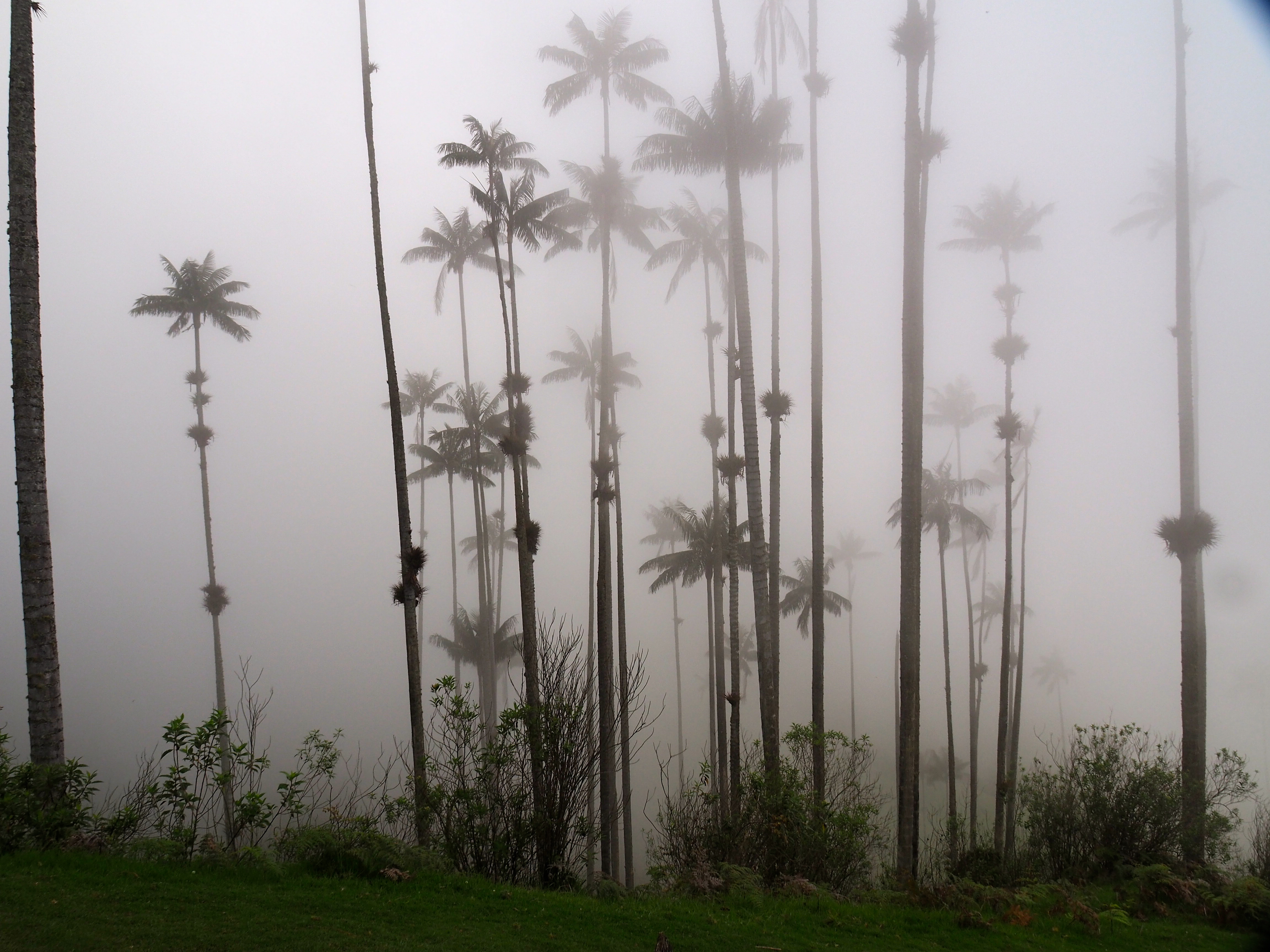
Celebratory Photos!
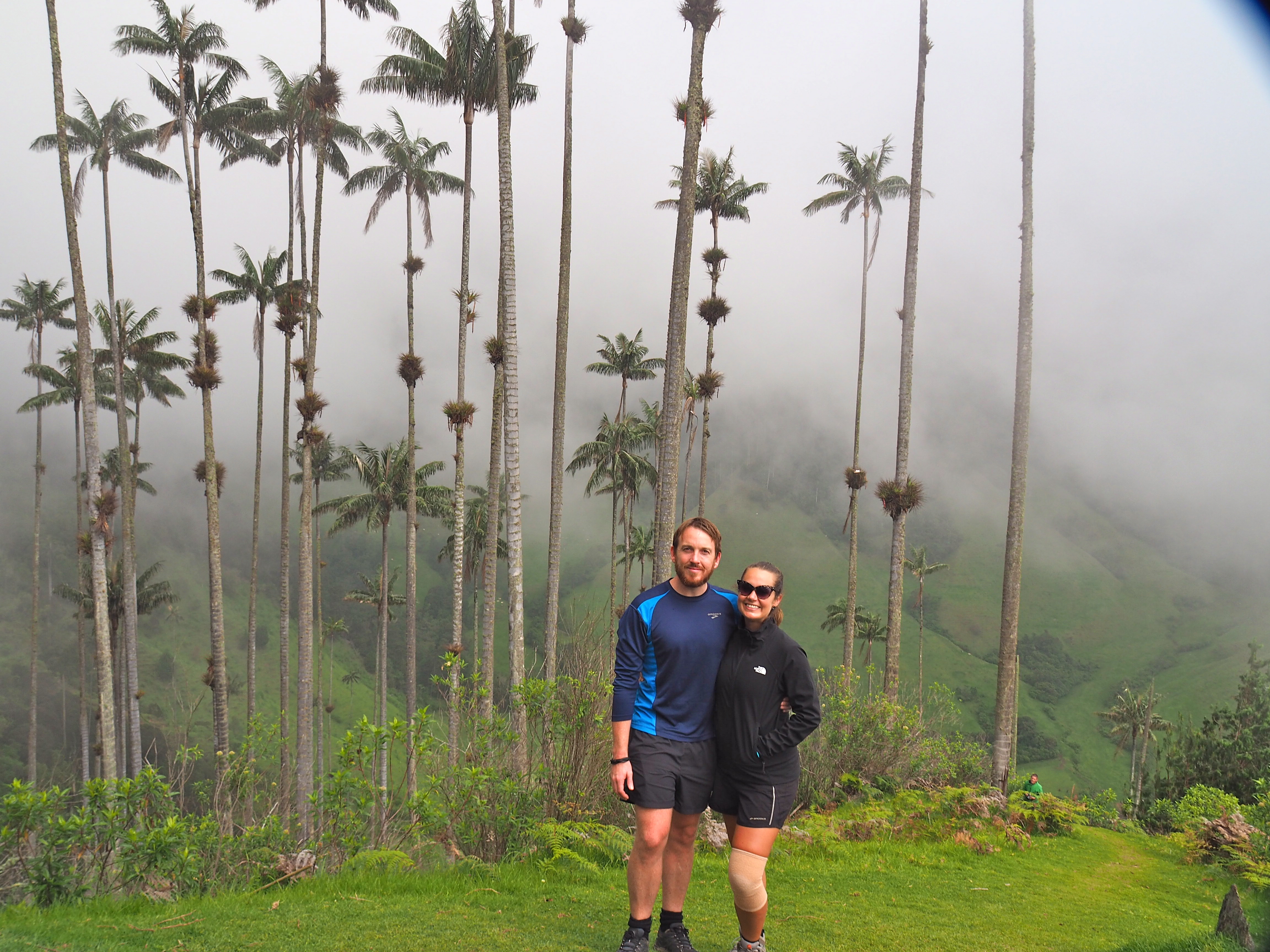
The views were amazing and the great crew (and laughs!) we had on the hike made it even more special. I cherish getting out and about in these stunning countrysides that we are so fortunate to be able to see and experience first-hand.
Group photo – the end (and Ian copping a cheeky feel!)

Acaime – La Casa de Los Colibris
(Home of the Hummingbirds)
As mentioned above, we took a slight detour to visit Acaime, la case de los colibris, the home of the hummingbirds.
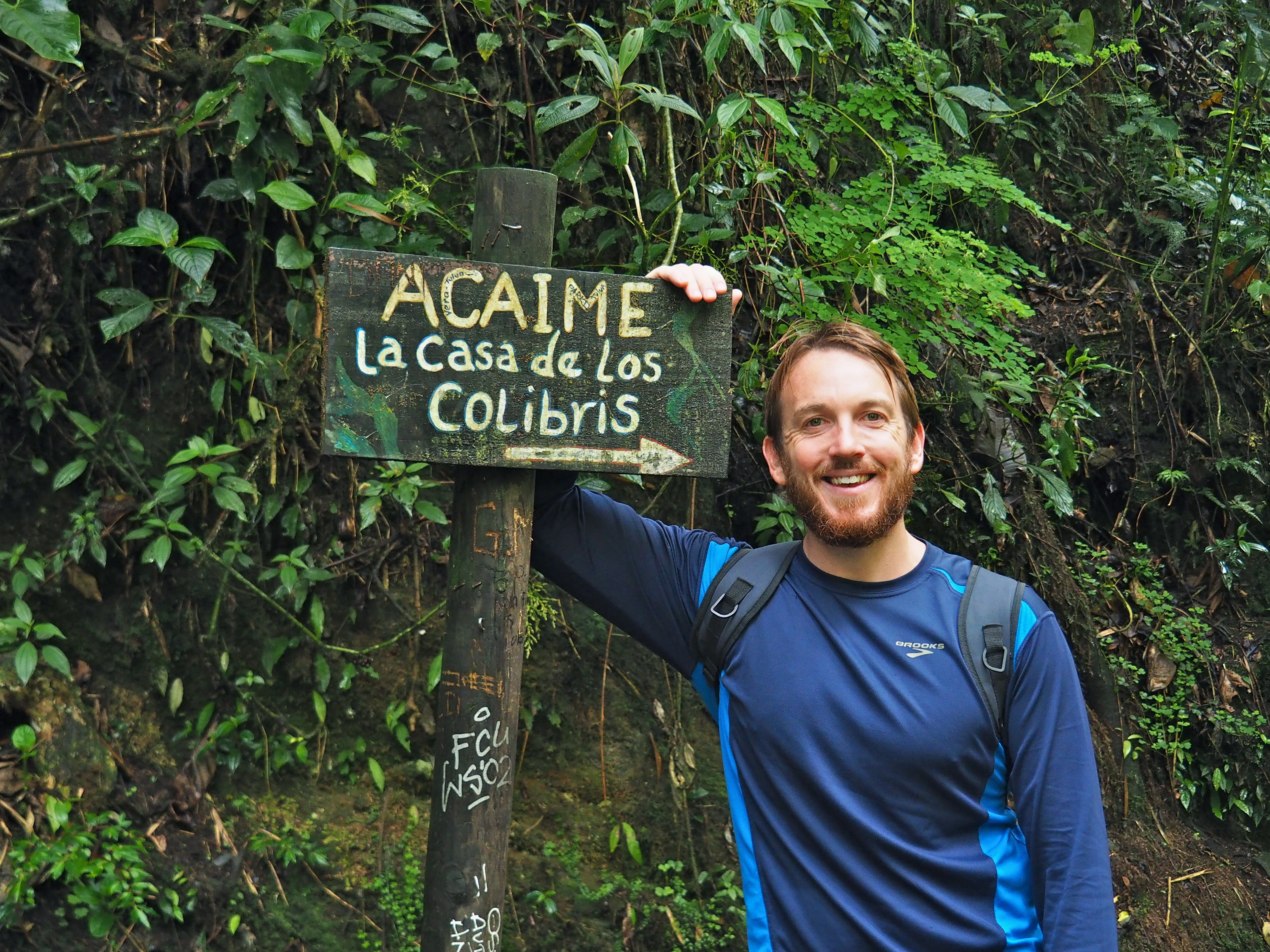
Everyone knows that hummingbirds move so damn quickly, that it is next to impossible to capture a good photo of one of them in flight, let alone sitting still. Well all six of us had our cameras and phones out for a good hour or so when we visited Acaime.
And I am pleased with the ones we got – we may not have gotten any of these little creates in full flight, but thanks to the welcoming environment and the feeders at the property, we did manage to get some great shots of these beautiful birds as they chilled out on branches right next to us.
Fantastic colours on these beautiful creatures
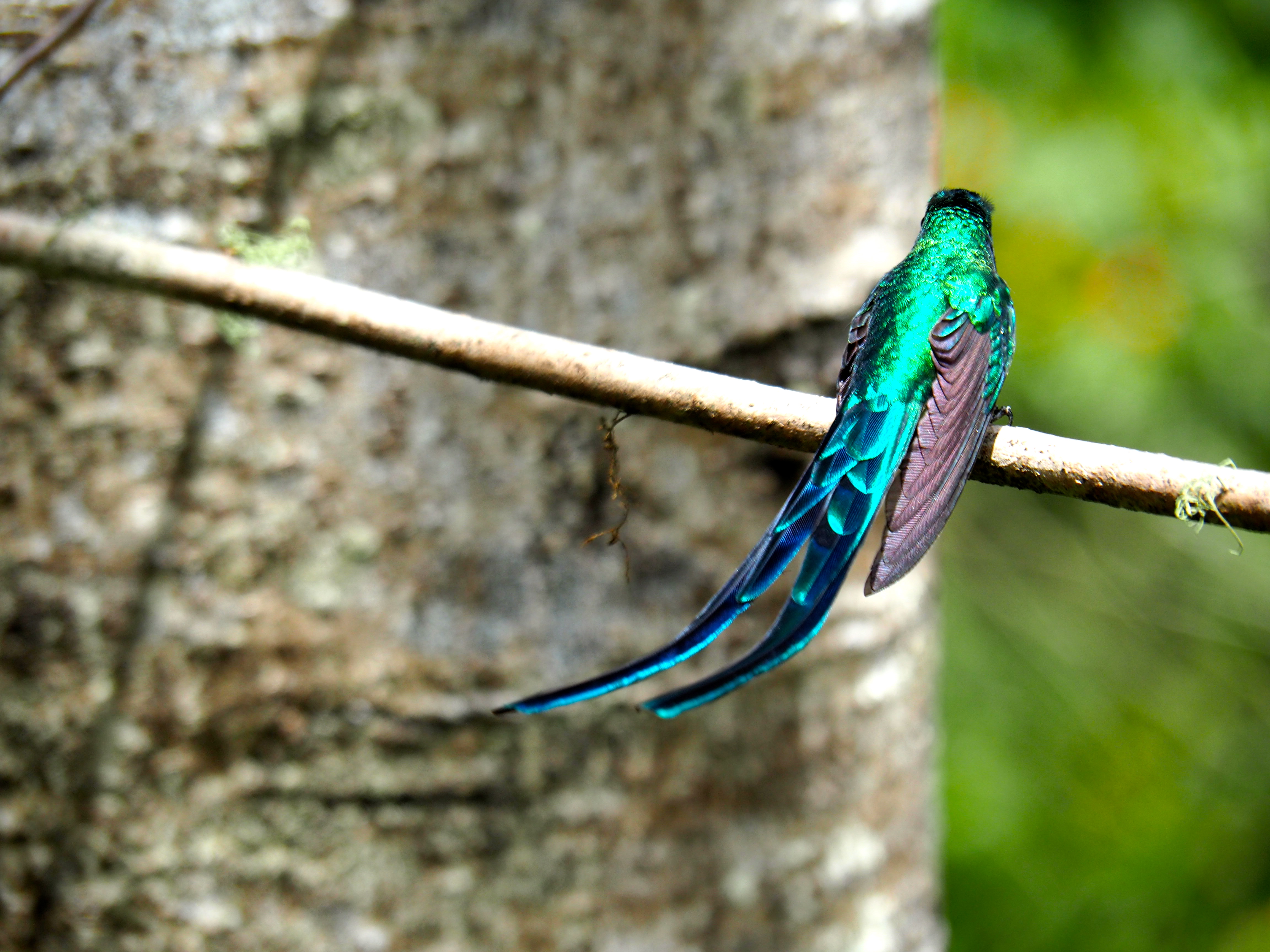
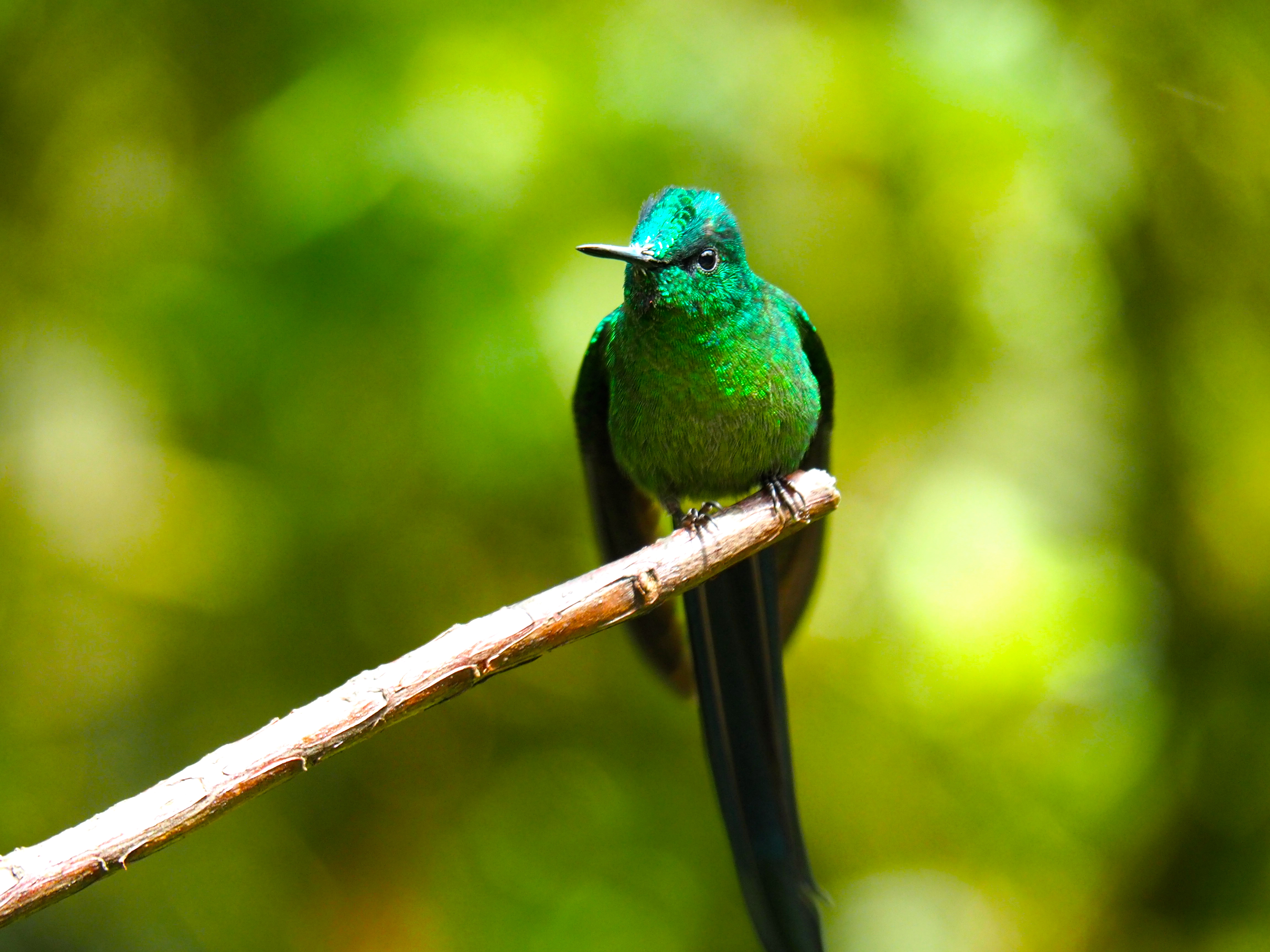
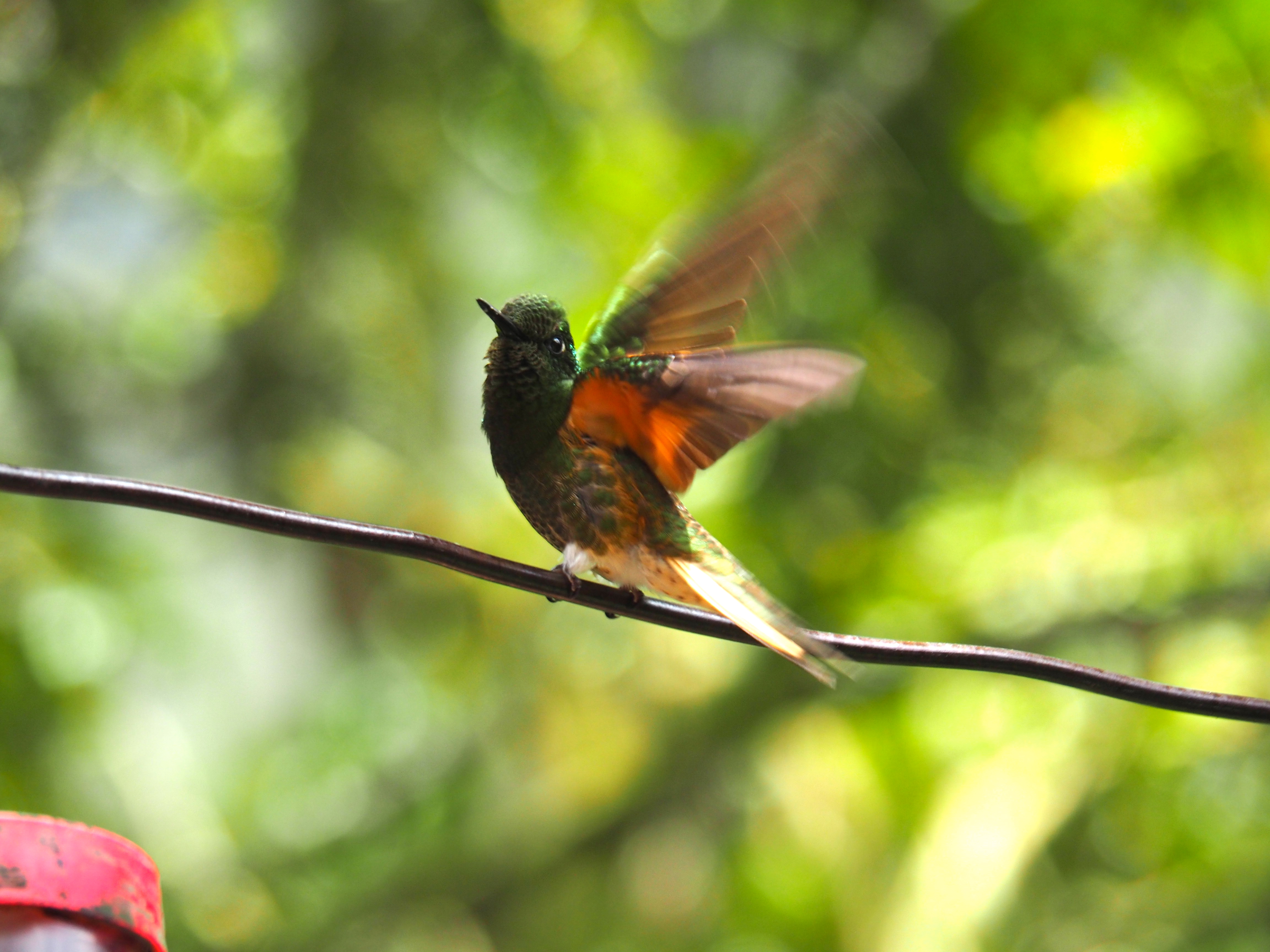

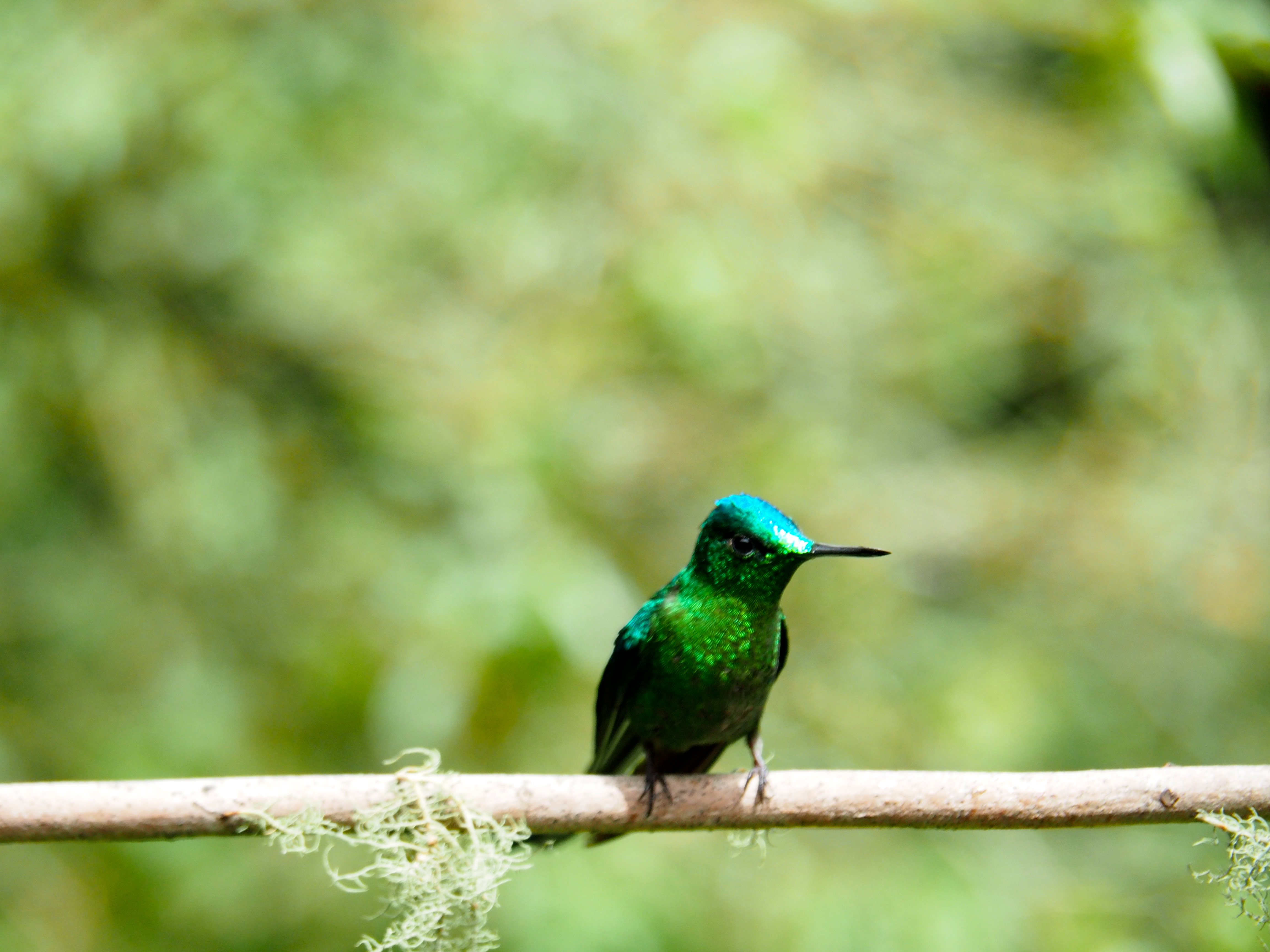
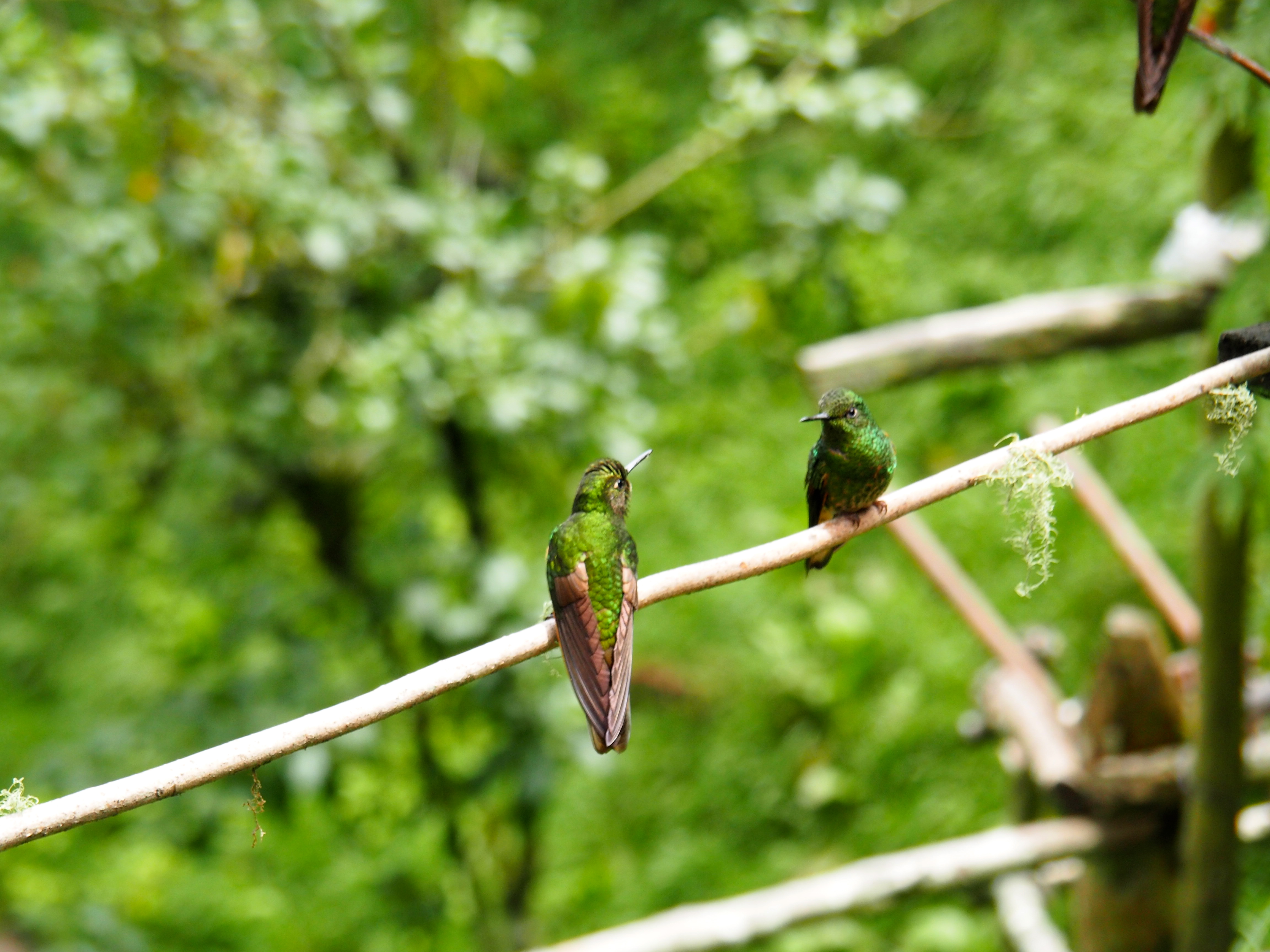
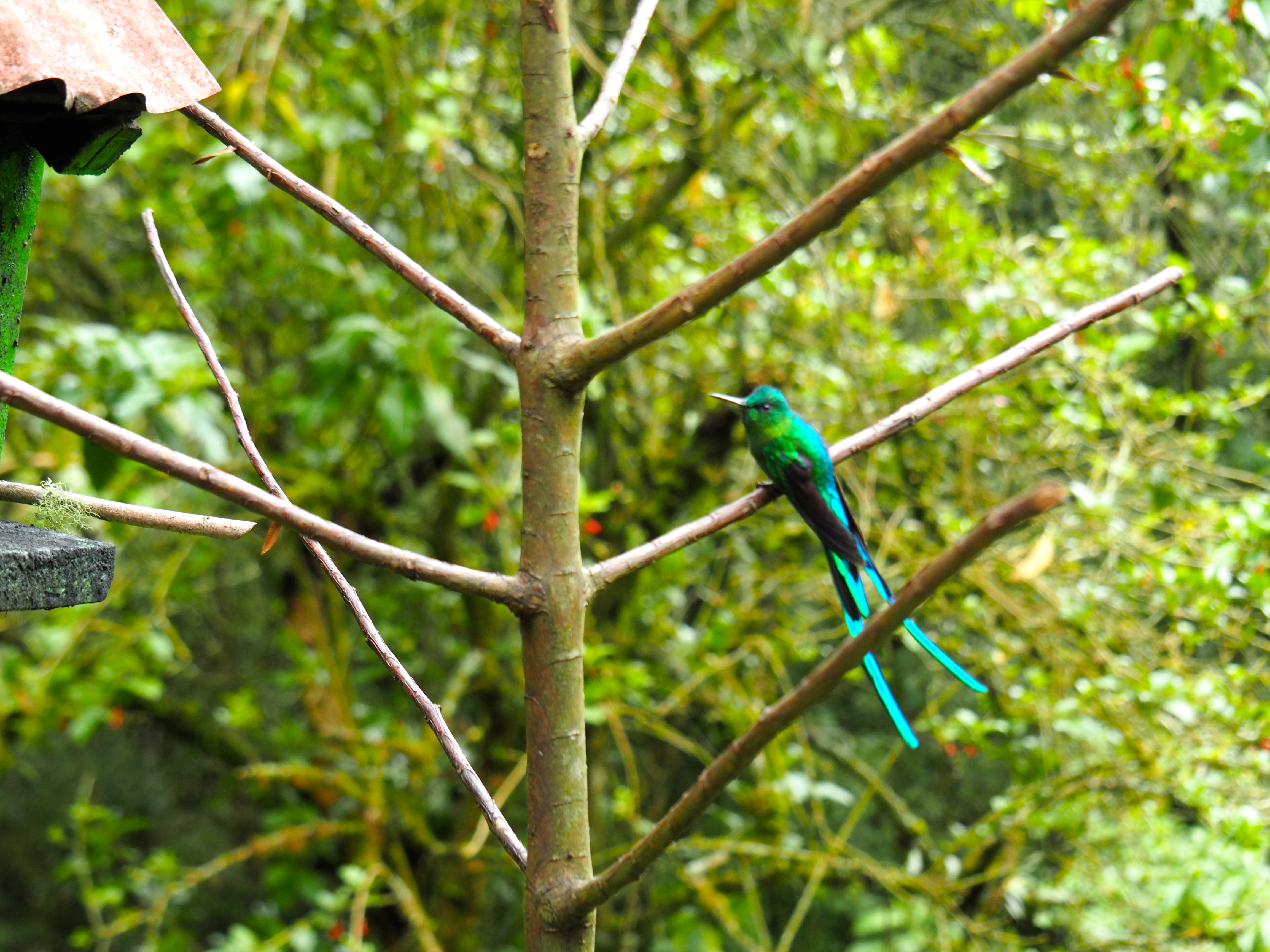
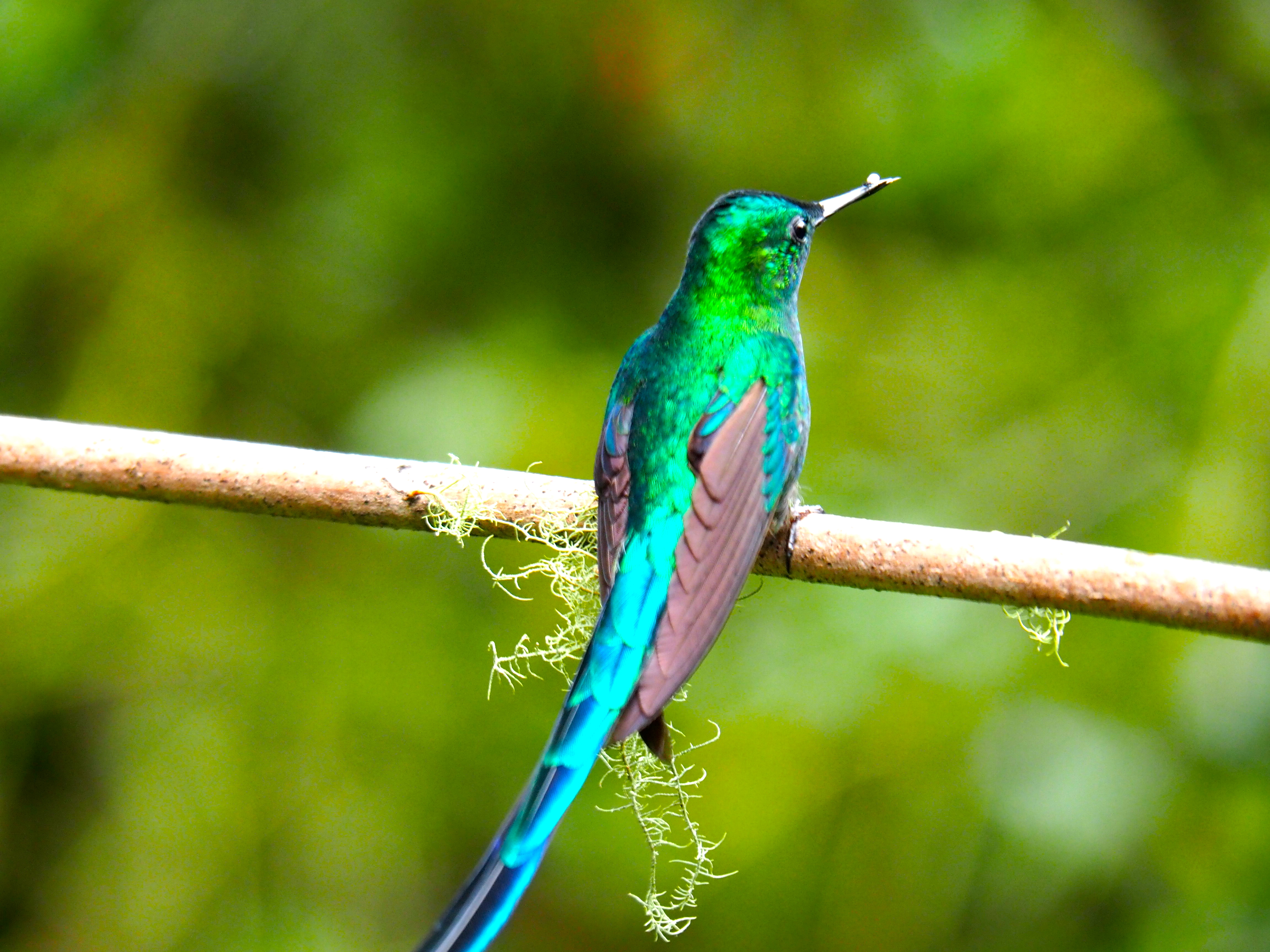
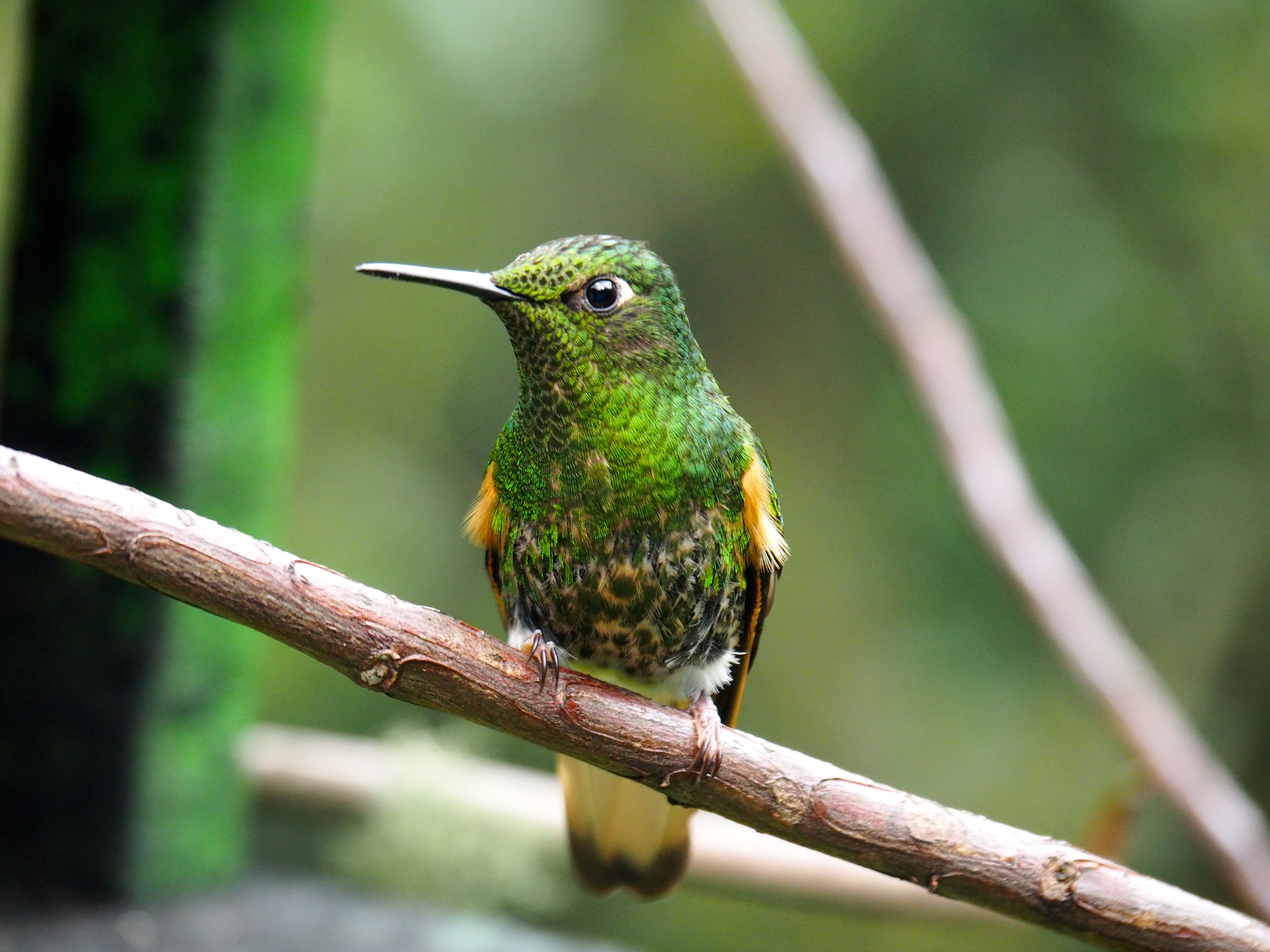
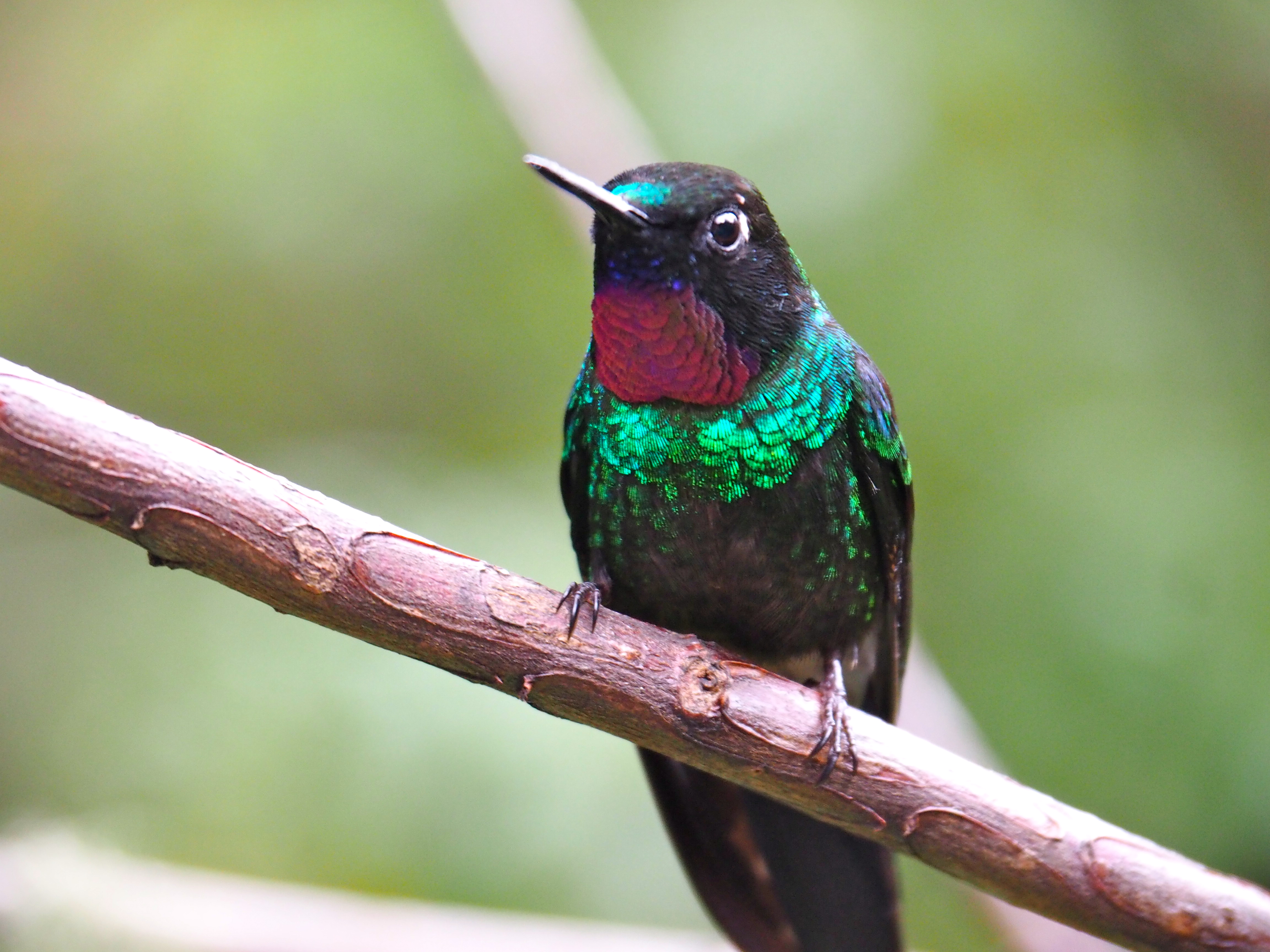
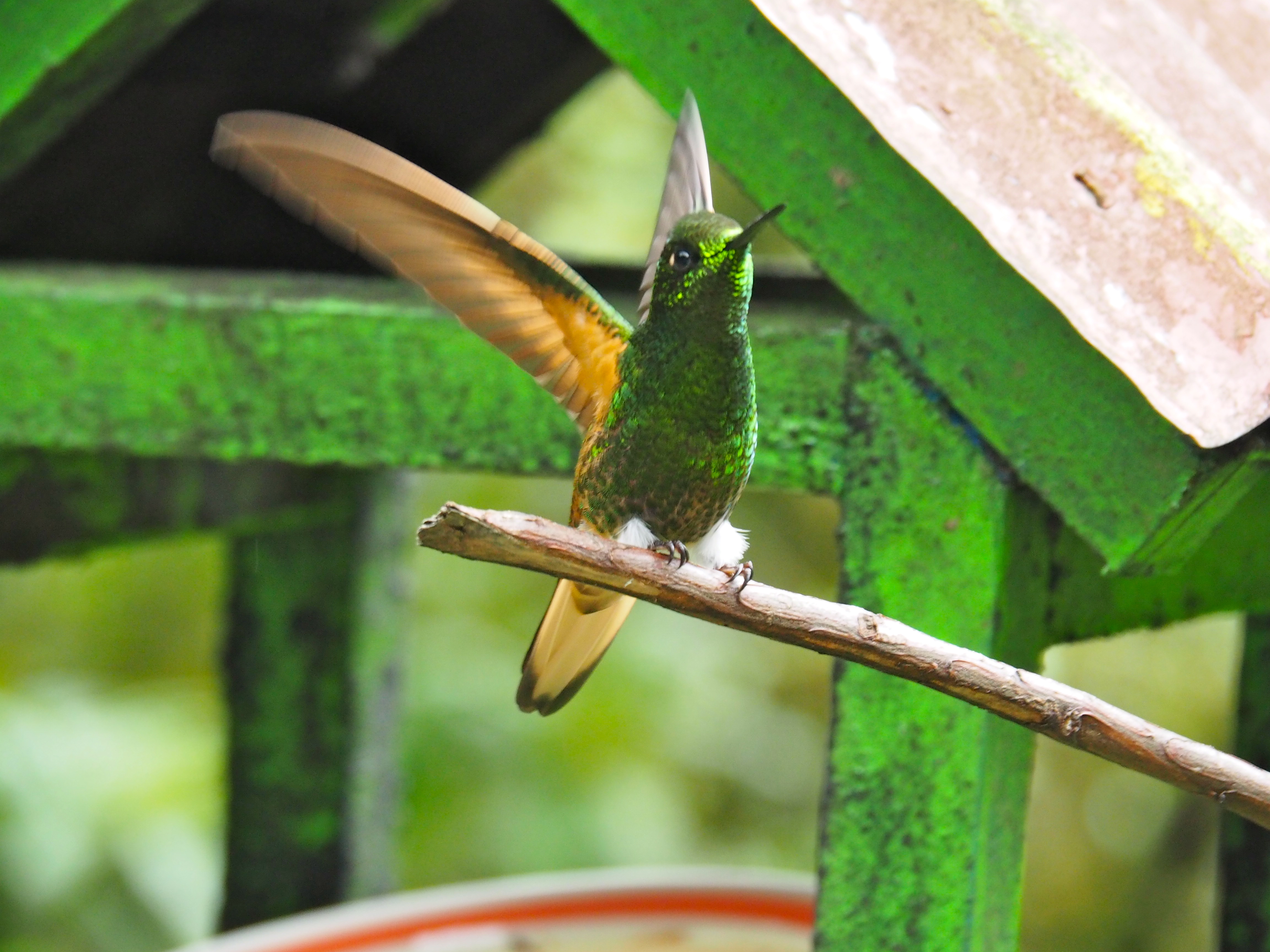
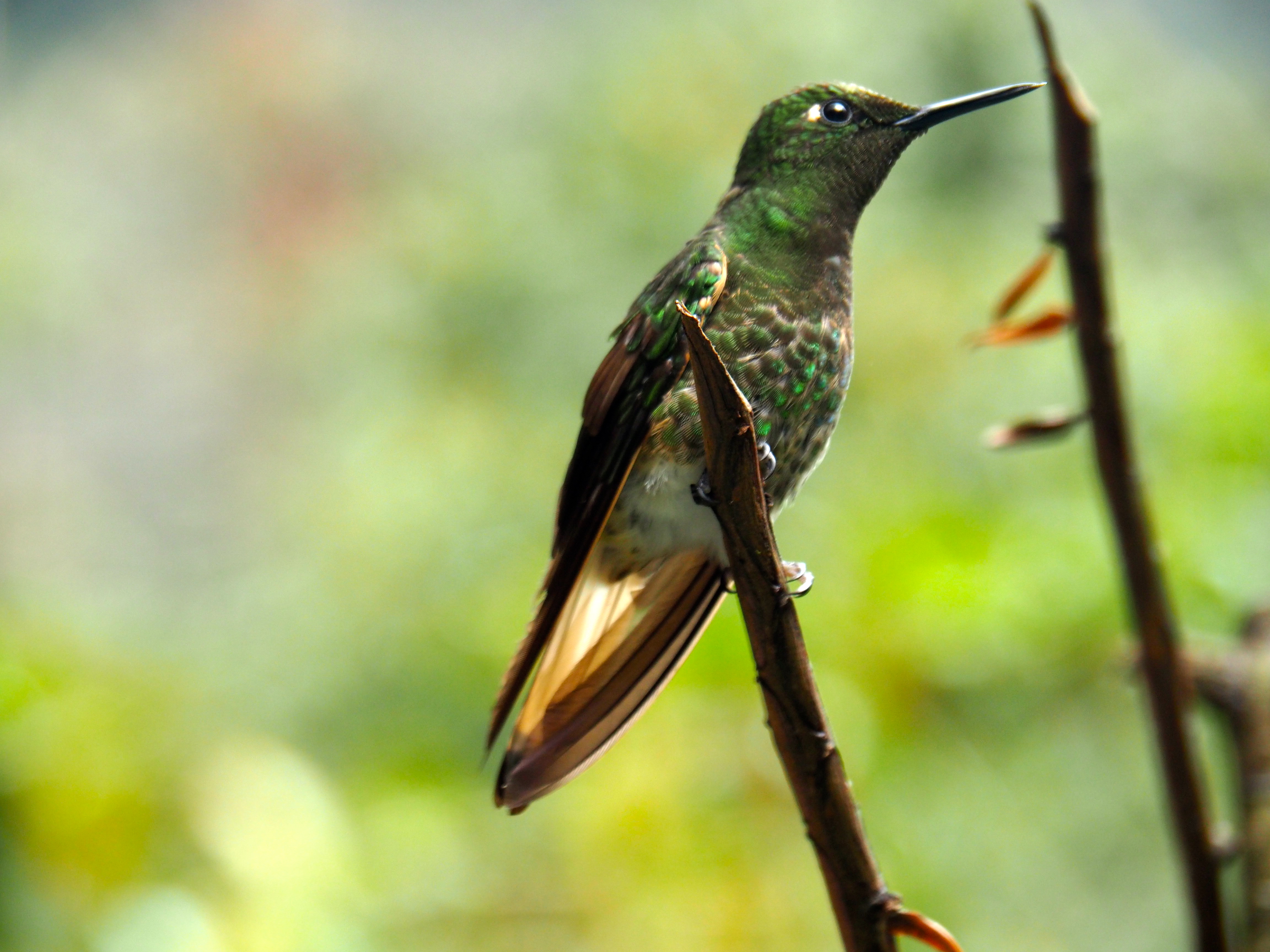
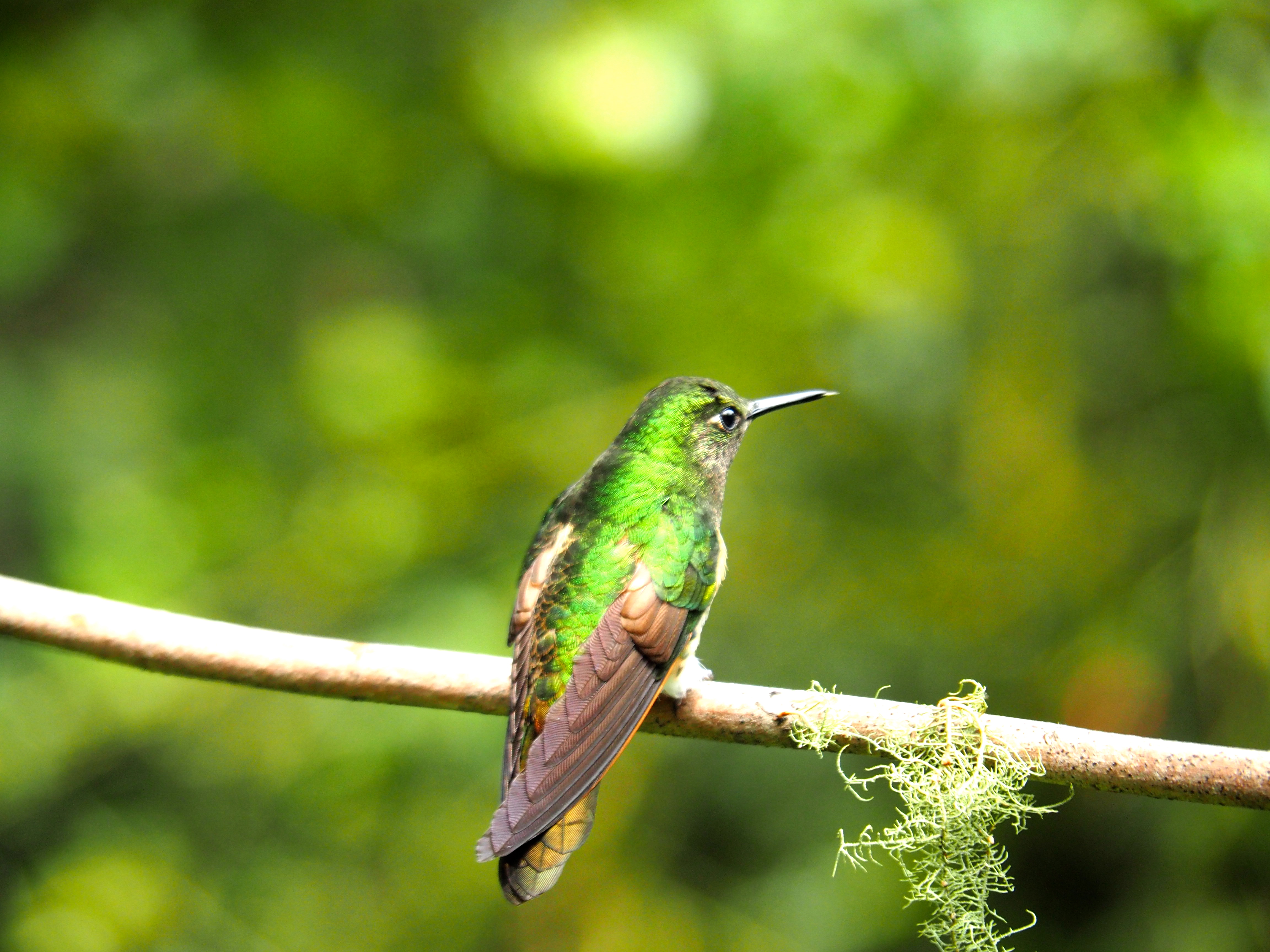
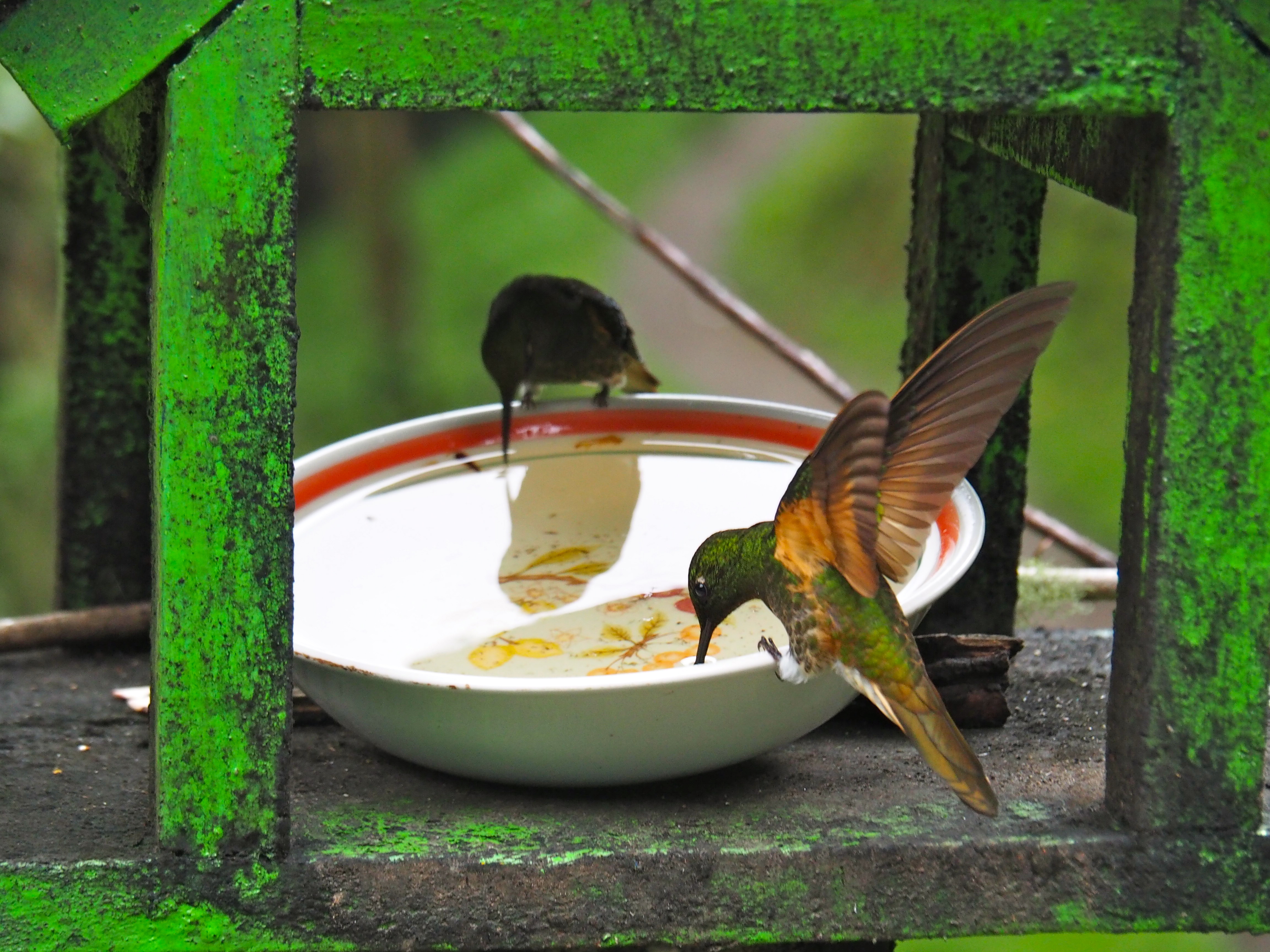
The colours on them, and the fact that they are so tiny, made birdspotting all the more exciting – the only thing more thrilling was when they would dart in and around our heads, with their crazy-fast little wings fluttering loudly as they zipped right past our ears!
Tejo – fun with gunpowder!
Our final night in Salento after our hike was spent with Mel and Ian enjoying (after a few more coffees) the traditional dish of Salento – trench, or trout. Found abundantly in the rivers around the region, this fish is cooked in many different ways and it seems, all are as lip-smackingly delicious as the next.
Both Ian and I had the grilled trout with the most delicious garlic and chives sauce, and I also had a frozen maracuya (passionfruit) mojito, both of which went down a real treat. I didn’t get photo of Dave’s meal but he got the stuffed trout which looked massive, and by all accounts, was also well tasty,
Traditional truncha (trout) with garlic sauce, complemented by a not-so-traditional passionfruit mojito!

Wit only a matter of hours left in Salento, we were still yet to try the regional past-time of Tejo. Tejo is a game played pretty much every night of the week by the locals and revolves around two things – aguardiente (thats right, the alcohol you drink straight!) and gunpowder. Sounds safe, right?!
This game is played in outdoor, under-covered patios where the aim of the game is to basically underarm thrown a metal puck’, or ‘tejo’- ranging in weight from about 300-700 grams), across an alley to a clay-covered sloping tray up to 20 metres away. The clay covered tray has a ring of metal on it, with gunpowder filled paper parcels layer on the metal.
Essentially, you want to throw your tejo onto one of the gunpowder parcels – when the tejo hits the metal and gunpowder, the gunpowder explodes, and you get points!
Its as fun and hilarious as it sounds, and despite us taking awhile to get our eye in at first (we found the more aguardiente we consumed, the better we get – we figured out the Colombians secret!)… we were soon hitting the parcels often and having a lot of fun perfecting our stance and throwing style.
I managed to get a few vids early on in the night, before we figured out the style to use (hence the closeness of me to the tejo!). The sound of the gunpowder exploding was hilarious and we, once again, had a wicked fun night with these two crazy Welshies!
Playing the local past-time of Tejo – gunpowder mandatory!



VIDEO OF GUNPOWDER GOING OFF –> IMG_3002
VIDEO 2 OF GUNPOWDER GOING OFF –>IMG_2983
Thanks to the amazing people we met in Salento – Mel, Ian, Nat and Max – we enjoyed three of the most action packed and hilarious days of the trip so far. Mucho gusto guys!
Despite doing pretty much zero relaxing as originally planned, we had an absolutely fabulous few days and saw some of the most beautiful parts of Colombia. This country just gets better and better, and I highly recommend Salento if you’re after a fun, different and outdoorsy kind of break, with lots of coffee and lots of red wine!
Next stop, on to Bogota for a quick couple of days before we head to Peru!
